Longview Campground, Lee’s Summit, Missouri
Do not add to His (God’s) words, or He will rebuke you and prove you a liar. ~ Proverbs 30:6
Let’s begin today with a list of a dozen things I learned about hosting from the Kansans. Yes, it’s spelled right, and no, I don’t know what happened to the ‘s’ on the end of the state name. Maybe it was just too hard to say “Kansasans”? Yeah. Now that you’ve said it out loud, you probably agree. 😊
Back on track . . . .
- Allow your guests to get comfortable – even if it means curling up and putting their bare feet on your couch
- Be prepared to feed them both in and outside your home
- Share your knowledge of the area by driving them around on narrated tours
- Be generous
- Be an attentive listener as well as a good communicator
- Pray out loud over them
- Smile and laugh a lot
- Play games
- Make them feel loved by checking up on them while they’re in your neck of the woods
- Do everything in your power to protect them, including taking it all upon yourself
- Provide them with a list of the best opportunities to explore in your area, being sure to include places to eat or buy food
- As often as it’s in your power to do so safely, give them hugs 😊
We can be so silly sometimes. This afternoon, once the morning’s heavy rain, deep darkness and thunderstorms rolled out, we drove into town to check out the recommended Union Station. Uncle Nick and Aunt Sherri had it on the list of “must sees”, and in addition, they mentioned during conversation how wonderful and interesting a place it was.
So we drove out and found a free 2-hour parking space along a curb nearby, under the assumption that it surely wouldn’t take more than two hours to see a building – mostly because all the attractions you could find inside are closed on Mondays. We thought we’d take a look around, oooh and ahhh at the building for a bit, then go check out some other things.
Well, that didn’t happen. . . .
The place was . . . magnificent! And there was tons of history displayed to check out, and a player piano, and a dinosaur, and a train, . . . and . . . well, you’ll see. Sort of. Because the pictures of the grandeur don’t hold a candle to actually being there! (You’ll probably be glad when we stop visiting museums and museum-type places, huh?😊)
I found information on the station that I just had to share. I thought the article from greatamericanstations.com was comprised of some pretty incredible stuff. If you read this, it might save you some time reading the photographs I took. . . .
The Kansas City Terminal Railway, a company formed by the twelve railroads serving the city, built the limestone and granite Kansas City Union Station that we see today. Excavation began in 1911; and on October 30, 1914, Kansas City Union Station opened as the third-largest train station in the country. Designed in the grand Beaux-Arts style, it reflected the city’s status as major Midwestern metropolis and a significant passenger and freight rail hub with links to all parts of the nation. The building replaced the original Union Depot in the city’s West Bottoms area, which was demolished after a 1903 flood inundated it, thereby convincing city leaders to rebuild on higher ground.
Union Station encompasses 850,000 square feet of space and originally had 900 rooms on 10 levels. The Grand Hall was intended for ticketing, while the North Waiting Hall, extending perpendicularly from the Main Hall and over the railway tracks, served as a passenger waiting area. The ceiling in the Grand Hall soars 95 feet high and from it hang three glittering chandeliers, each weighing 3,500 lbs. A six-foot-high clock hangs from the ceiling at the nexus of the Grand and North Halls. The North Waiting Hall, with its 65-foot ceiling, can contain an assemblage of 10,000 people.
Designed by Chicago architect Jarvis Hunt, a proponent of the City Beautiful movement, the station features a coffered ceiling in the Grand Hall, rose-brown marble floors throughout the main areas, and both light and dark stone facings on the interior walls. Three enormous, deep-set arches mark the facade, rendering the Grand Hall light and airy. More arched windows similarly light the North Hall.
A busy and efficient transportation hub, Union Station has also played a part in the history of American law enforcement. The building was in the national headlines on June 17, 1933, when four unarmed FBI agents were gunned down by gang members attempting to free captured fugitive Frank Nash. The “Kansas City Massacre” resulted in the arming of all FBI agents.
Kansas City Union Station was also home to the headquarters of the Fred Harvey Company between its opening and 1938. Harvey was the initiator of the first national chain of hotels and restaurants—as well as the idea of shops for travelers in the Union Station. Harvey sold his idea of excellent restaurants for travelers to the Atcheson, Topeka, and Santa Fe Railway, which then let Harvey operate restaurants and build hotels along its routes—many of which became the social centers of their towns. Mary Jane Colter became the company’s architect and interior designer in the early 1900s and worked out of a studio in Kansas City Union Station. She went on to design buildings such as the Posada Hotel in Winslow, Ariz., and Hopi House in Grand Canyon National Park, among many notable structures.
Through a strong regional initiative, Kansas City Union Station has been revived from a sad state of dilapidation in the mid-twentieth century. At one time in 1917, as many as 300 trains passed through this station; traffic peaked at 79,368 trains that year. In 1945, annual passenger traffic at Kansas City Union Station peaked at 678, 363; but by 1973, with the increase of automotive traffic on the interstate highway system, only 38,842 passengers passed through the station, with only six trains a day.
In 1971, newly-formed Amtrak took over operation of most of the nation’s intercity passenger rail services, including those using Kansas City Union Station. Amtrak would vacate the station in 1985, when it moved to a smaller nearby structure in a cost-saving move. Nonetheless, Kansas City Union Station’s rich history and structural and design integrity were recognized when it was listed in the National Register of Historic Places in 1972.
Two years later, the Kansas City Terminal Railway and a private developer, Trizec, a Canadian redevelopment firm, made a deal to redevelop the station. Between 1979 and 1986, Trizec constructed two office buildings adjacent to Kansas City Union Station, but did not redevelop the site. In 1988, the city filed suit against Trizec for failure to redevelop the property. The legal battle concluded with the formation of the Union Station Assistance Corporation, which began planning renovation in earnest.
In 1996, residents in five adjacent counties in both Missouri and Kansas approved a 1/8 cent sales tax, part of which funded half of the $250-million restoration project. More funding was also provided by private foundations as well as state and federal grants. Renovations were completed by November, 1999. The Kansas City Museum, as Science City, was a major participant in the restoration. The new science museum occupies the space left by the old train sheds next to the North Waiting Hall.
The new construction faced many challenges, including providing modern spaces and identity for Science City and yet maintaining the terminal’s integrity, as well as keeping within budget. This challenge was undertaken by a joint venture architectural team of Ehrenkrantz Eckstut & Kuhn of New York and SmithGroup of Washington, D.C. The architects remained true to Hunt’s original vision. Indeed, the restoration team went to great lengths to match colors, shapes and styles of the original plaster and marble. They managed to do this with extensive initial investigation, resulting in a significant cost savings.
Today, Kansas City Union Station provides not only intermodal transportation options, but also serves as a destination in itself, with the large interactive science museum, rail exhibit, Irish museum, five-story Regnier Extreme Screen theater and Gottlieb Planetarium, the Block theater, as well as restaurants, shops and event spaces. Kansas City Union Station is largely self-supporting due to its various partnerships, making it a model for other station rehabilitation projects.
Reading this made me curious about this Frank Nash character, so I jumped down another rabbit hole. (Besides taking too many pictures, and weak internet, this is one of the reasons creating this blog takes up so much of my time! 😊)
Frank was born in 1887 to a hotel owner. His first conviction was in 1913, at age 16, when he murdered his friend and fellow bank robber, Humpy Wortman. What kind of name is that??He was sentenced to life in prison, but was released in 1918 when he agreed to join the army and fight in WWI. Following the war, he went right back to work and was soon sentenced to 25 years for safecracking in Oklahoma, but was once again given early release in 1922, only to meet up with friends and turn to bank robbery. In 1924, he was sent to Leavenworth Penitentiary in Kansas. After serving six years, he gained the trust of the guards and was released from prison to run an errand. He never returned, (well, imagine that! If I could roll my eyes here, I would. . .) which isn’t entirely true because he did in fact return a year later to help break out seven of his friends. A year and a half later, he was once again apprehended, this time by the FBI as he was hanging out “on vacation” in Hot Springs, Arkansas. He and four agents took the train from Hot Springs to St. Louis, and as they were getting into the cars to continue the transport, a group of Nash’s cronies, including “Pretty Boy” Floyd, showed up to free him. In the flurry of bullets from the friends (FBI agents didn’t carry weapons at this point, but began roughly six months later because of this massacre), Nash, one agent and two Kansas City officers were killed.
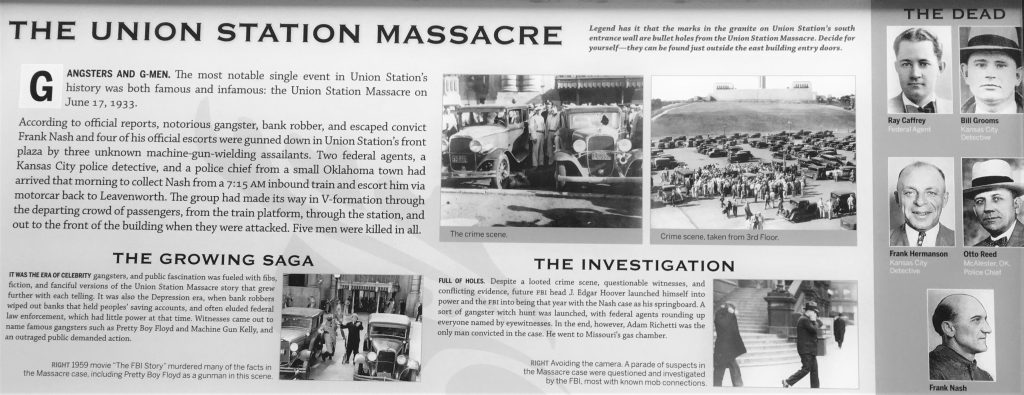
This states that they didn’t know who did the shooting, but the article I read seemed to know who was there . . .
I can only report what I read. Hopefully I’m not responsible for spreading fake news!
Let’s check out this massive, historic place!
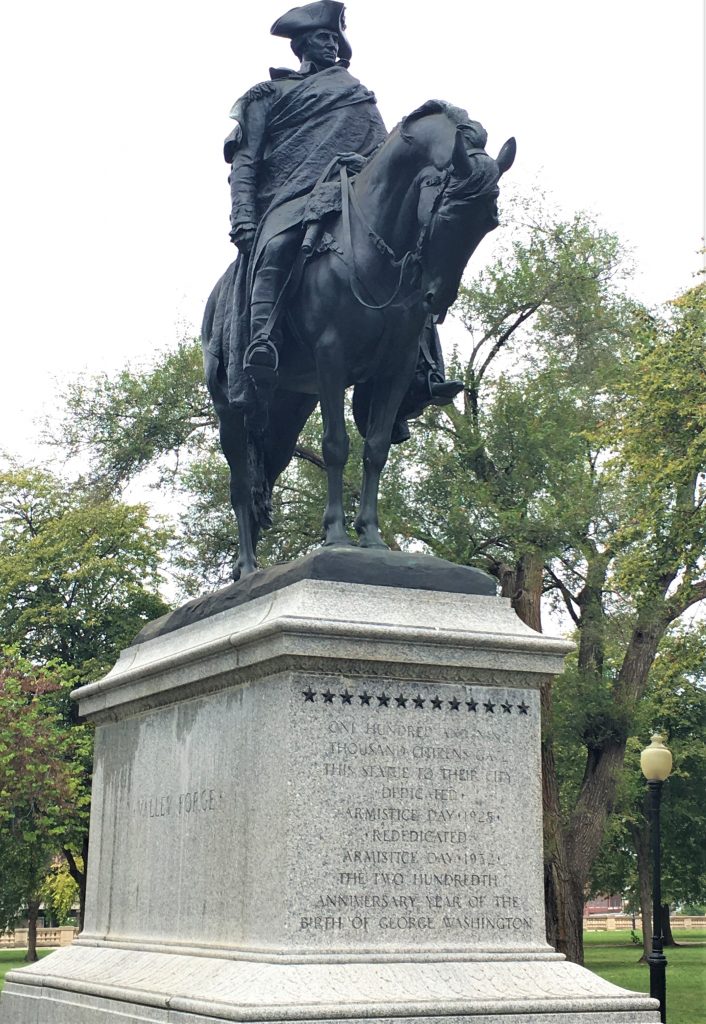
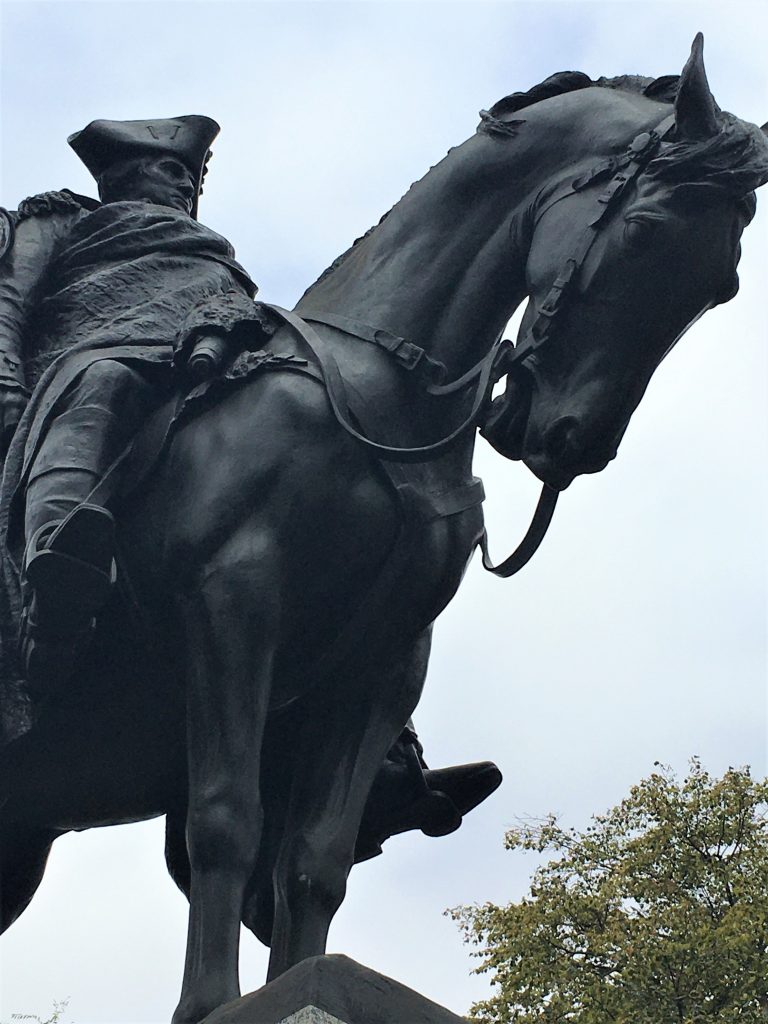

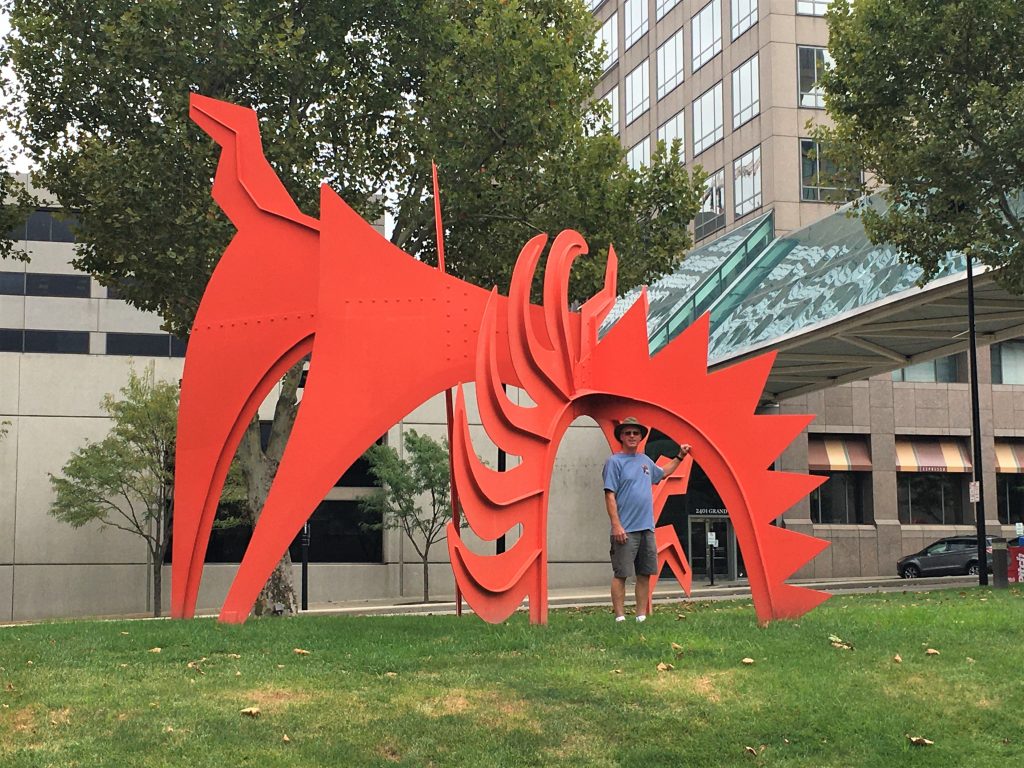
I know nothing about it, and was unable to find it online. : (
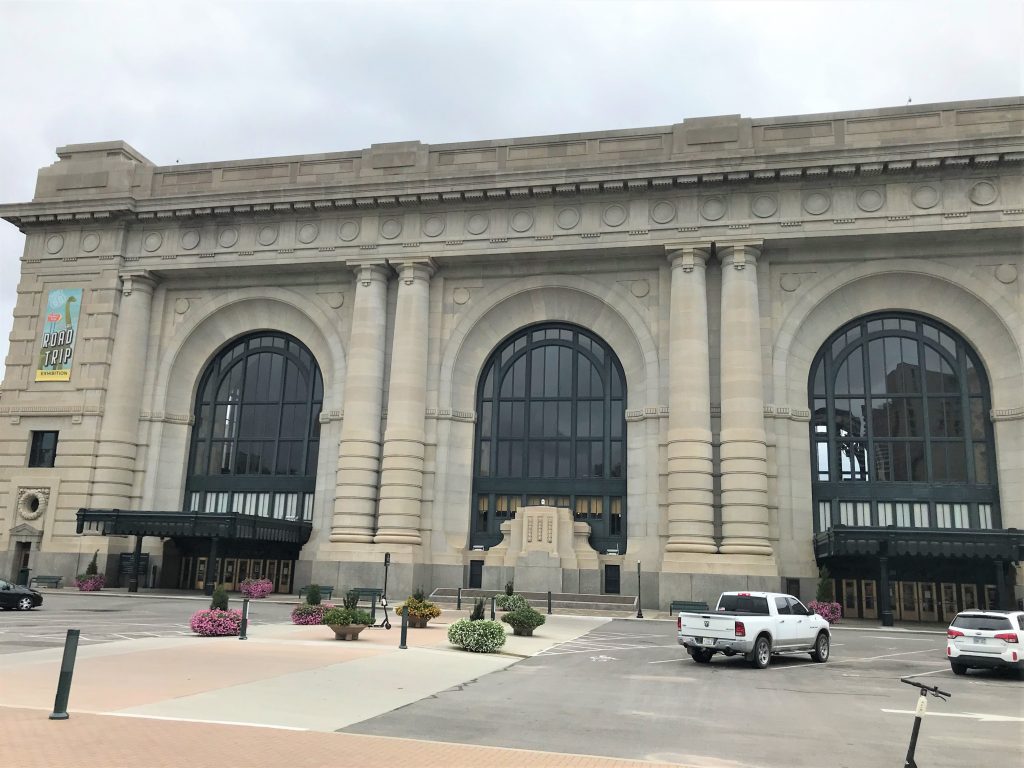
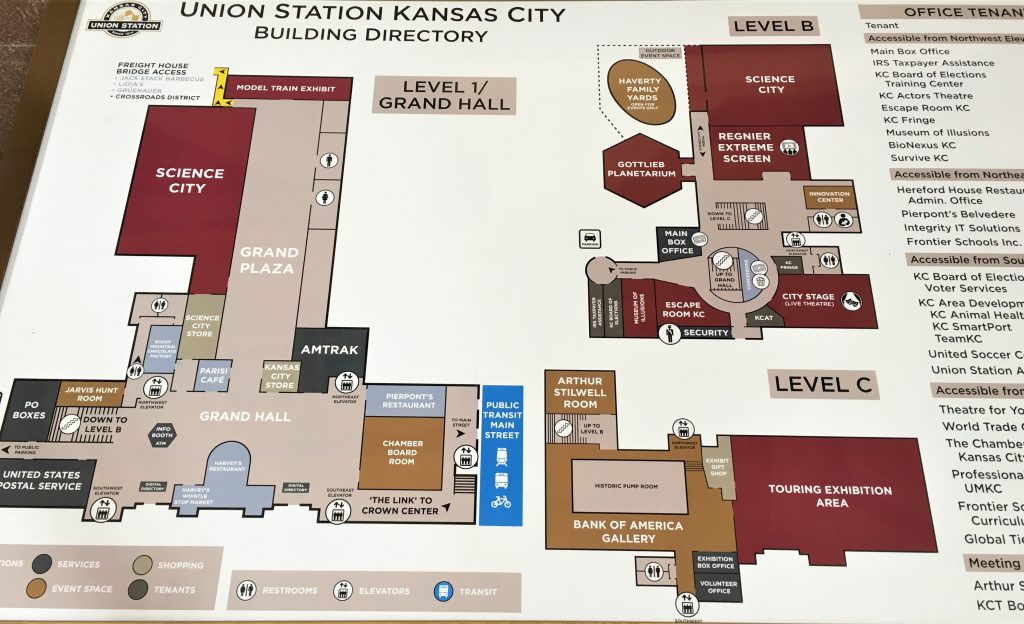
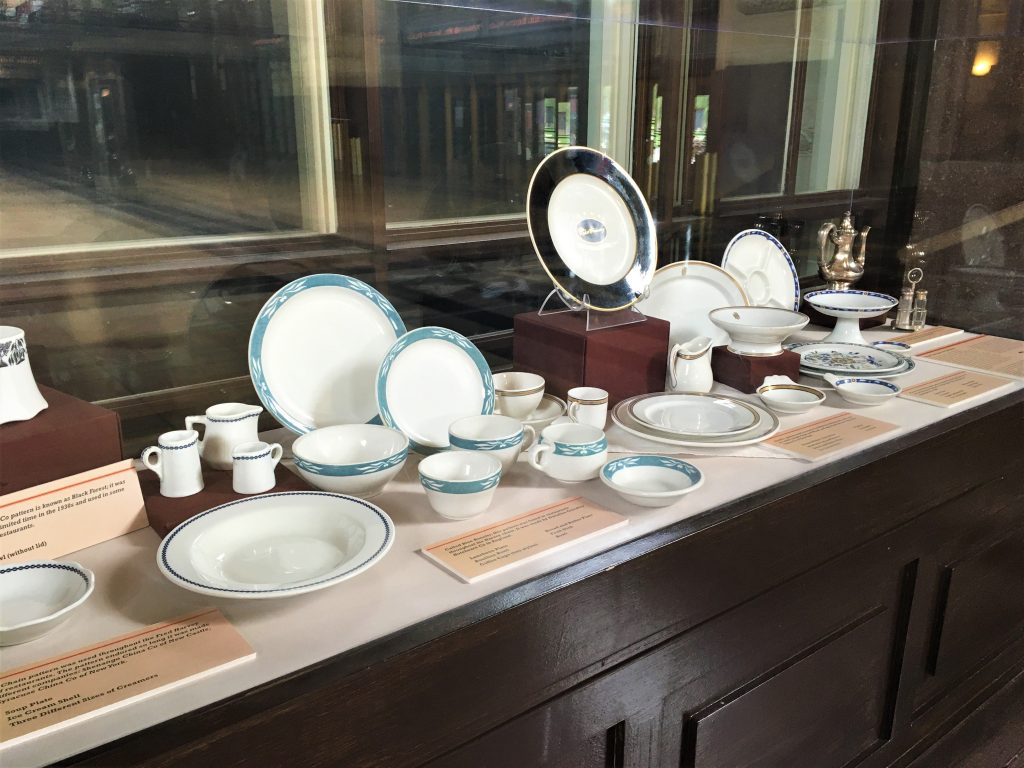
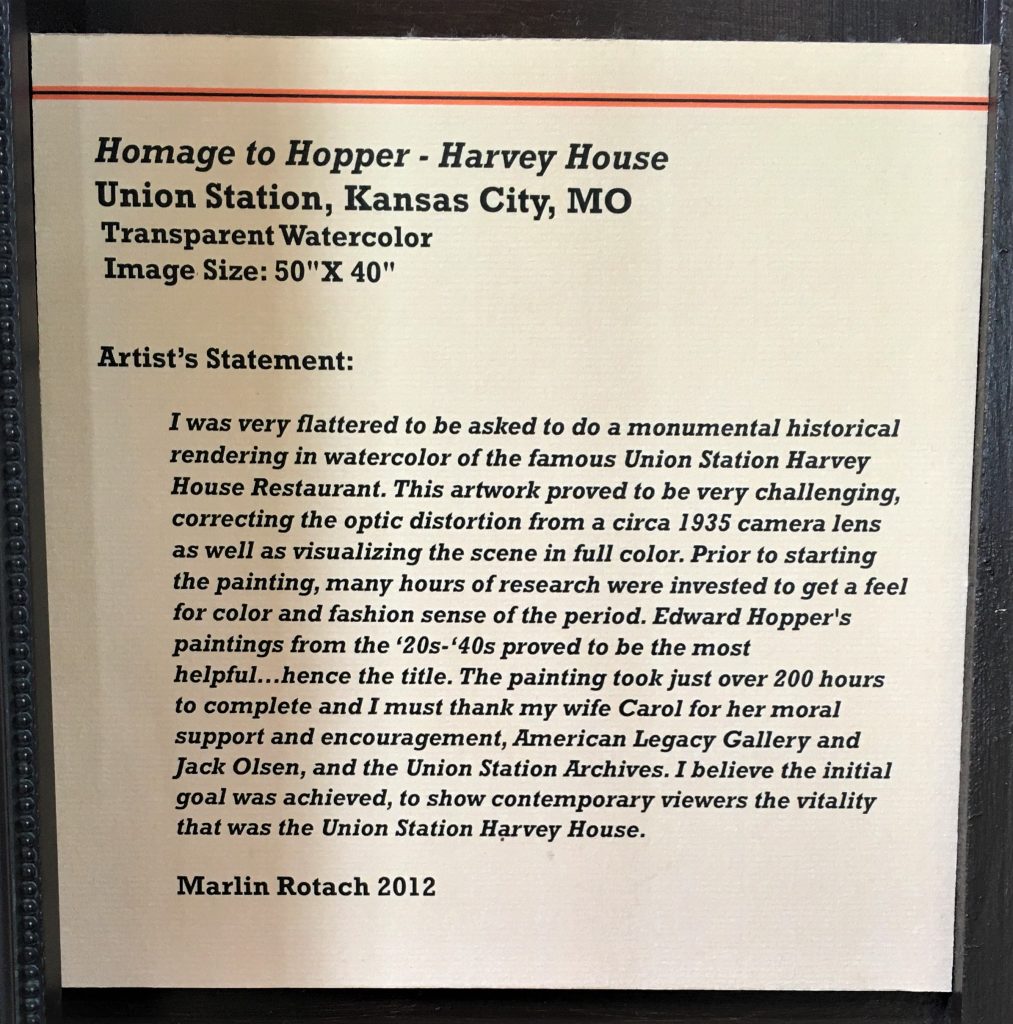

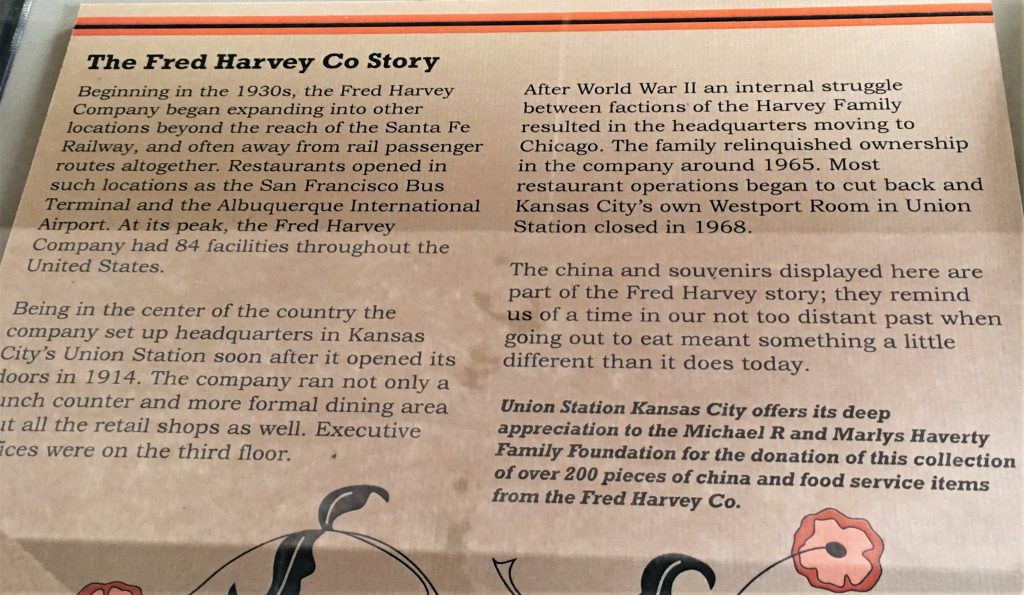
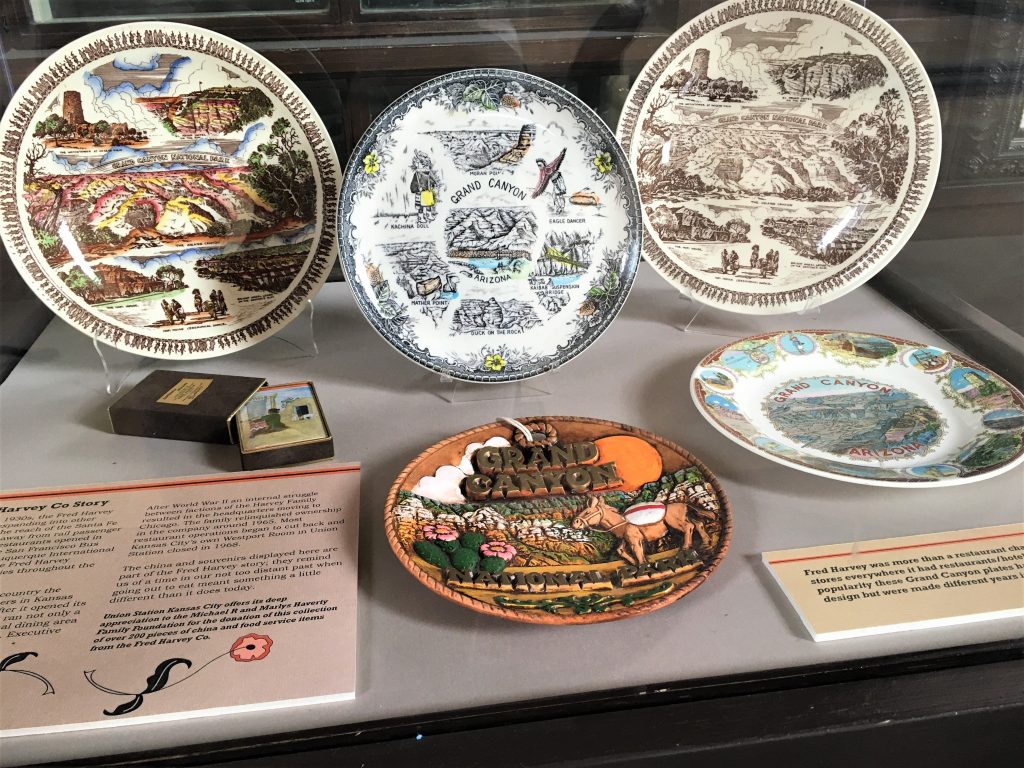
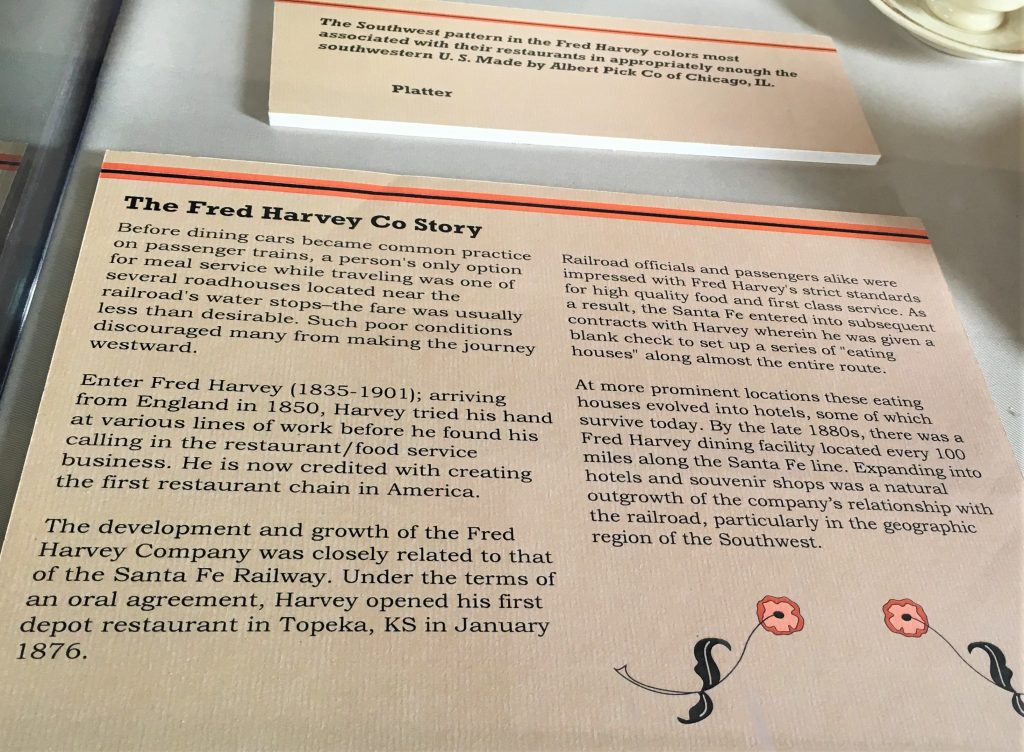
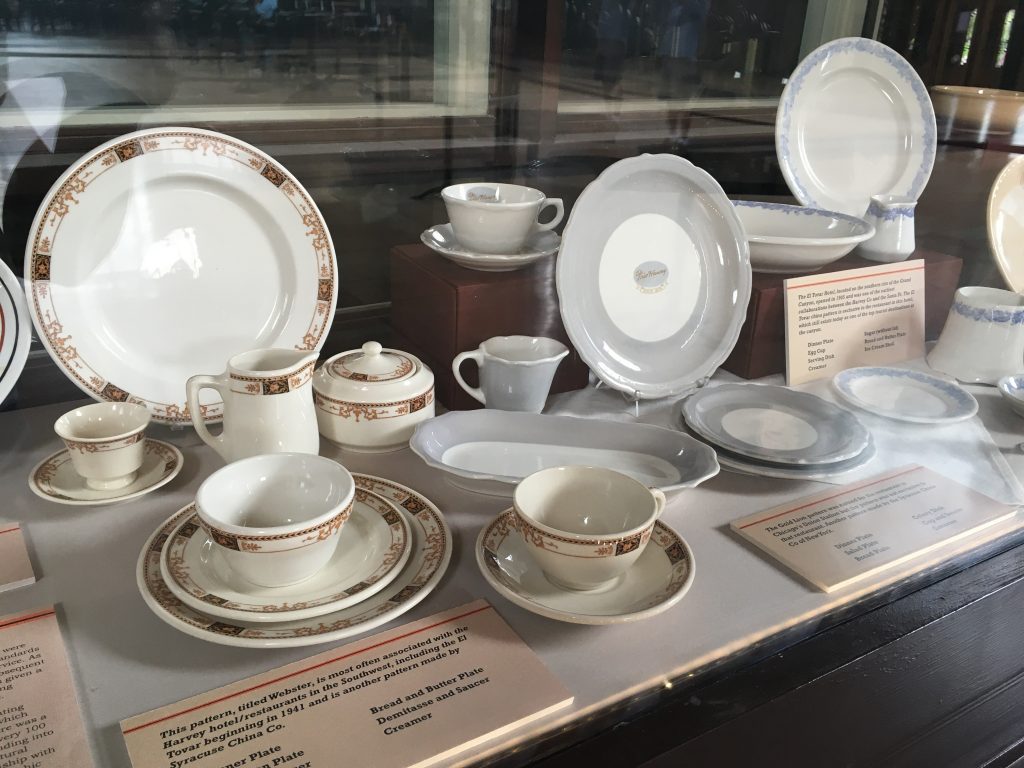
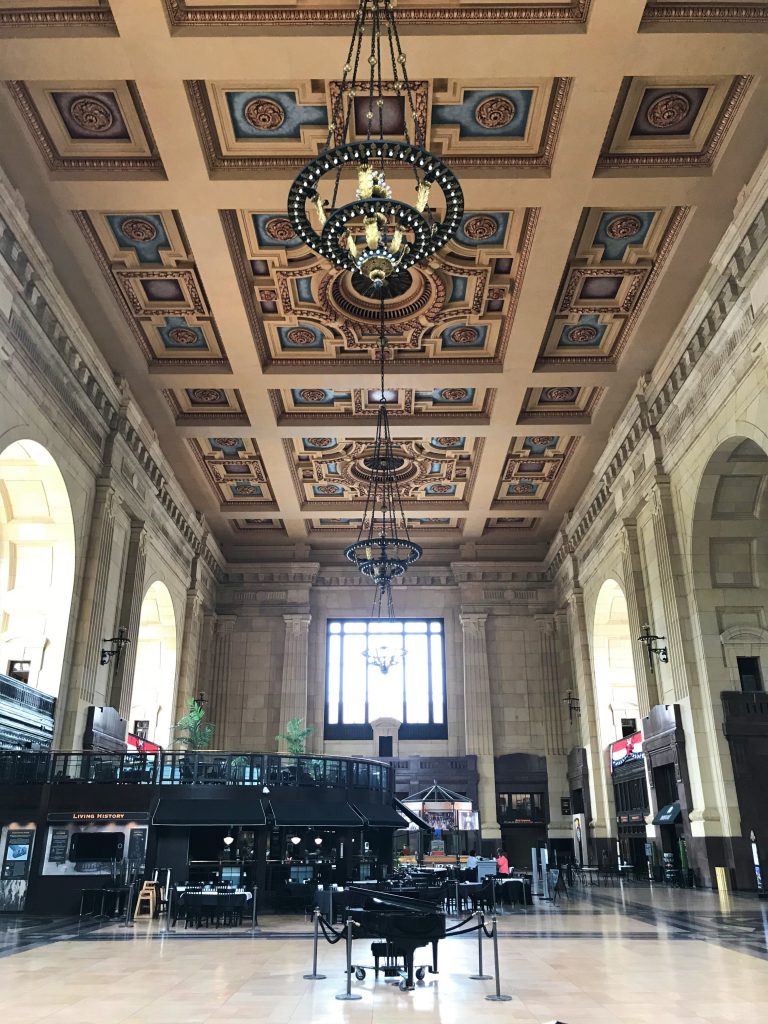
The rounded part on the left, is now a restaurant, but it used to be the train ticket counter.
That’s the player piano, and it played the entire time we were here!
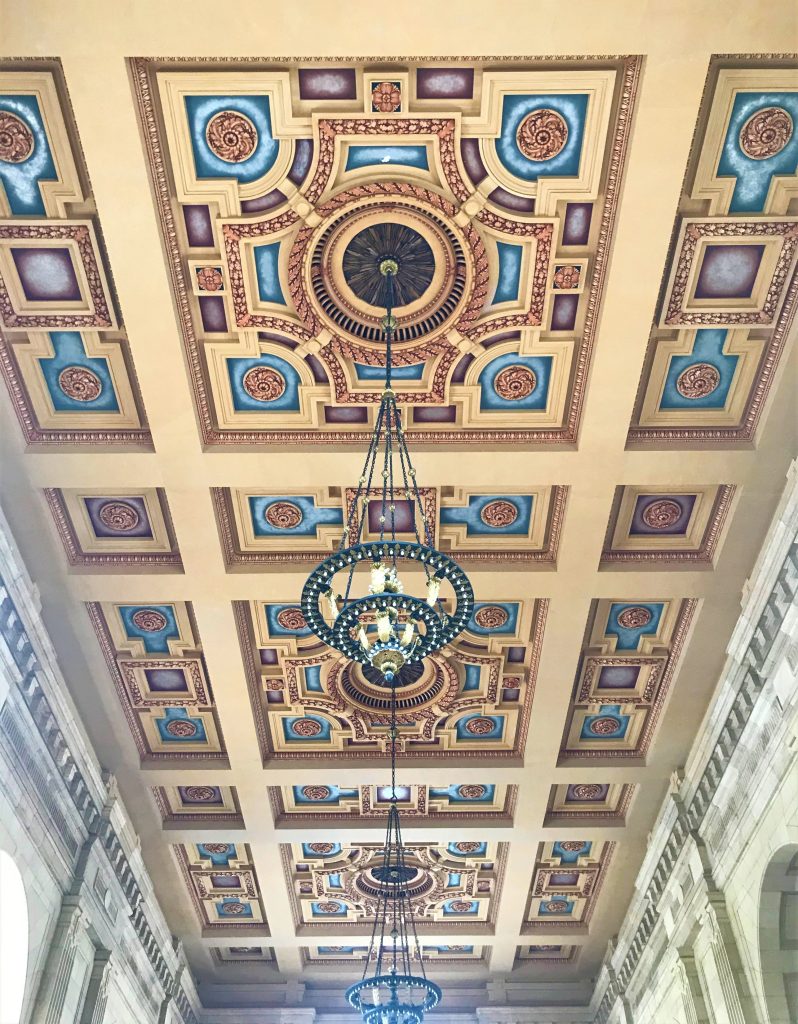
Wonder if they restored it to the original colors?
How would they know, since all the photos were in black and white then? Hmmmm . . . .
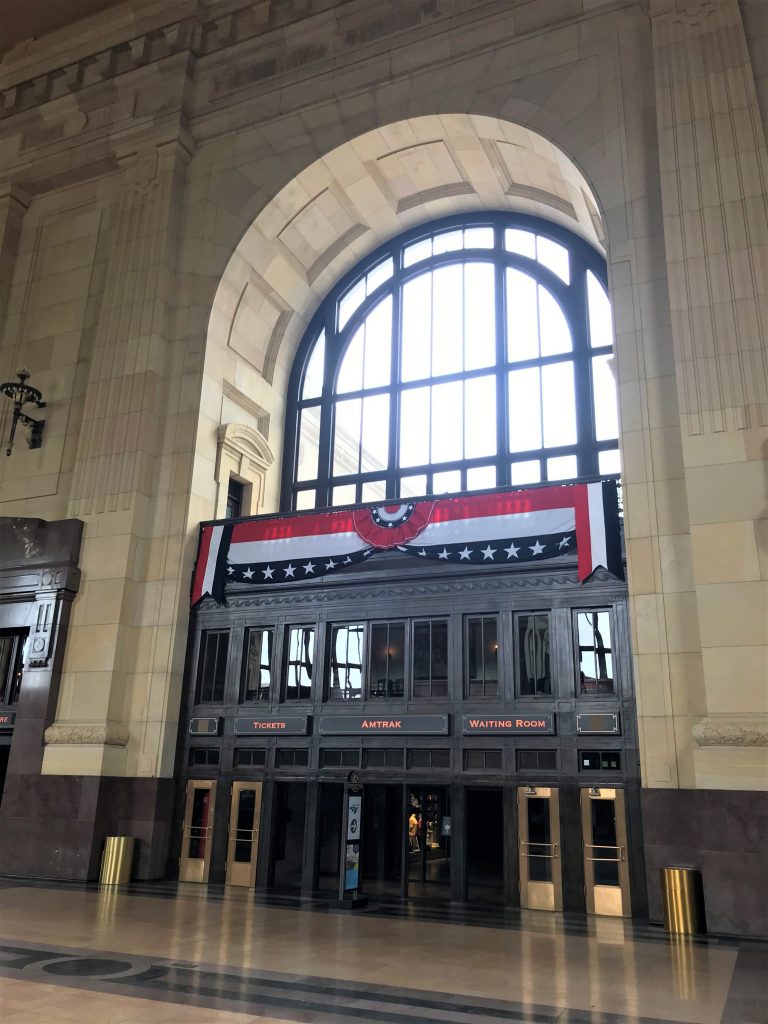
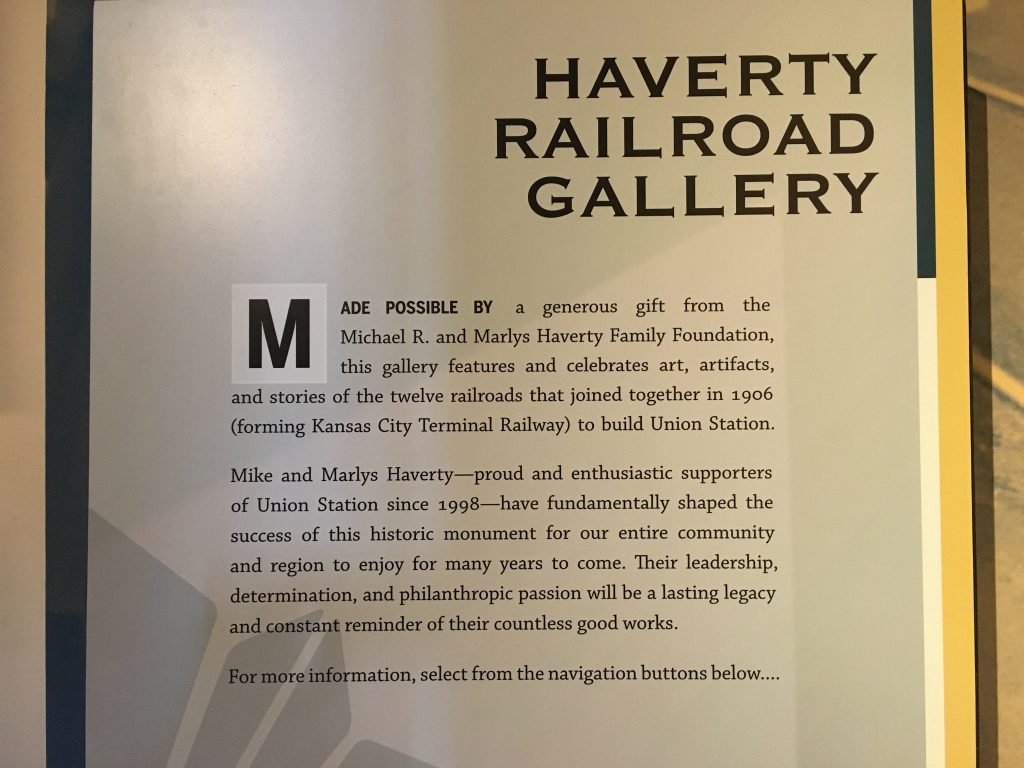
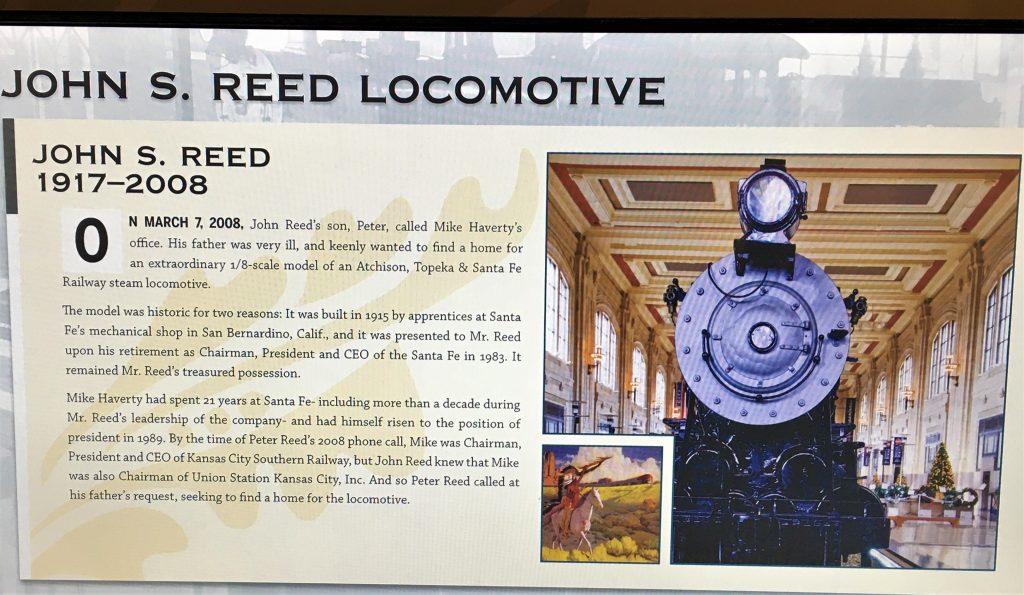
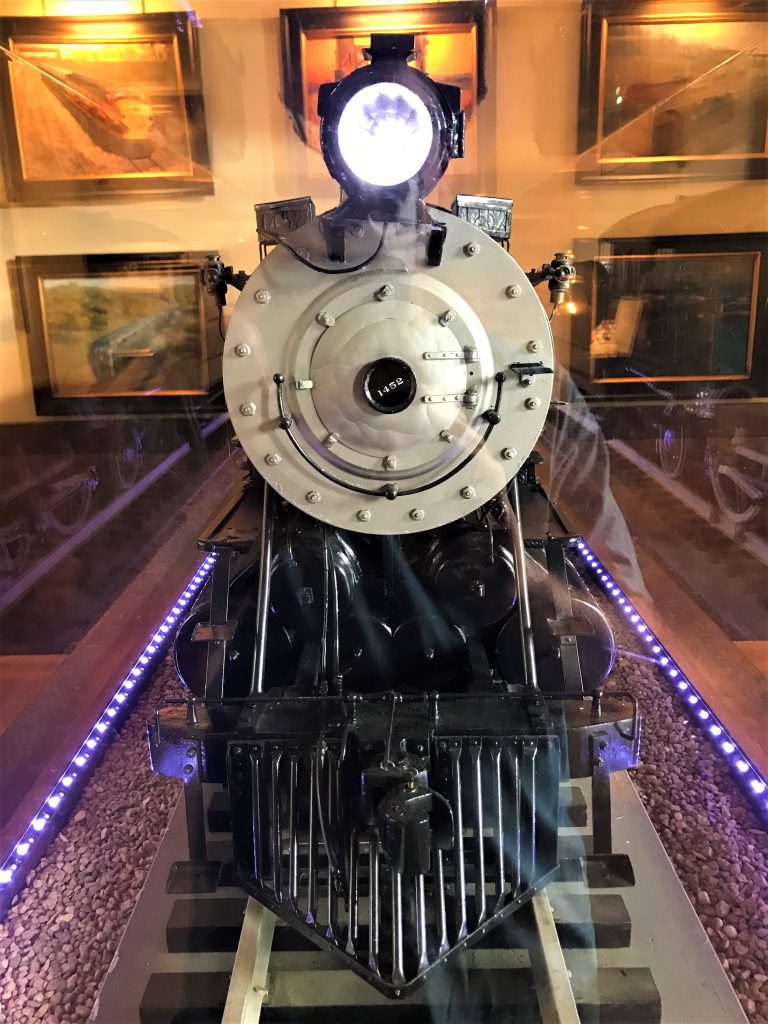
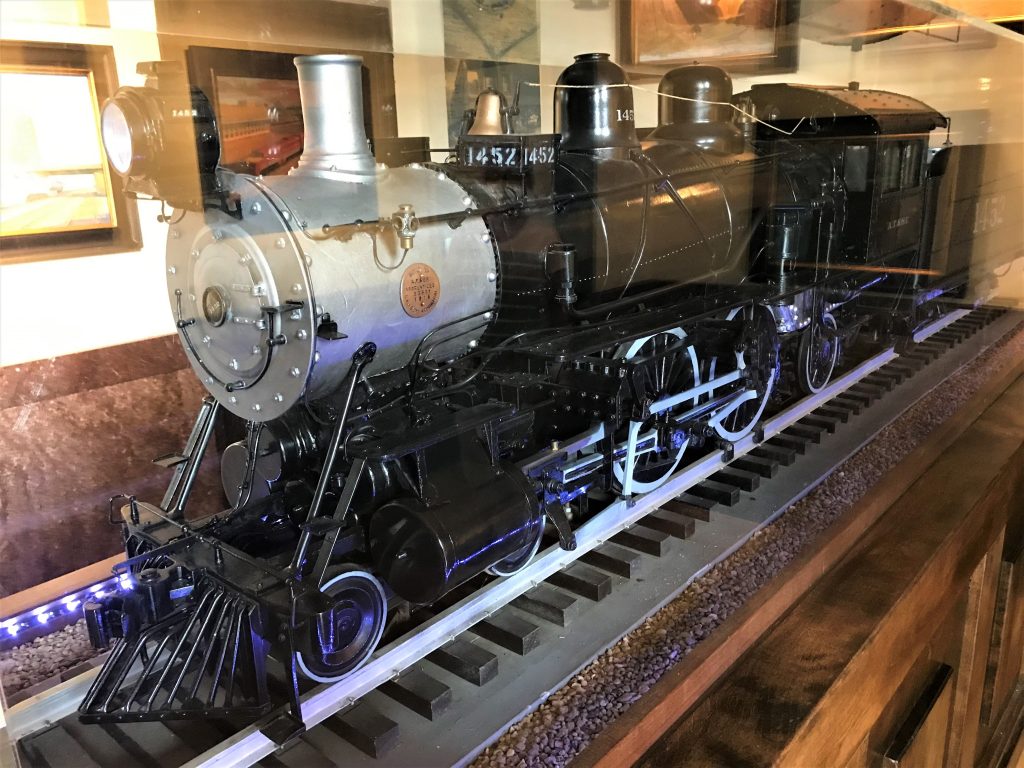
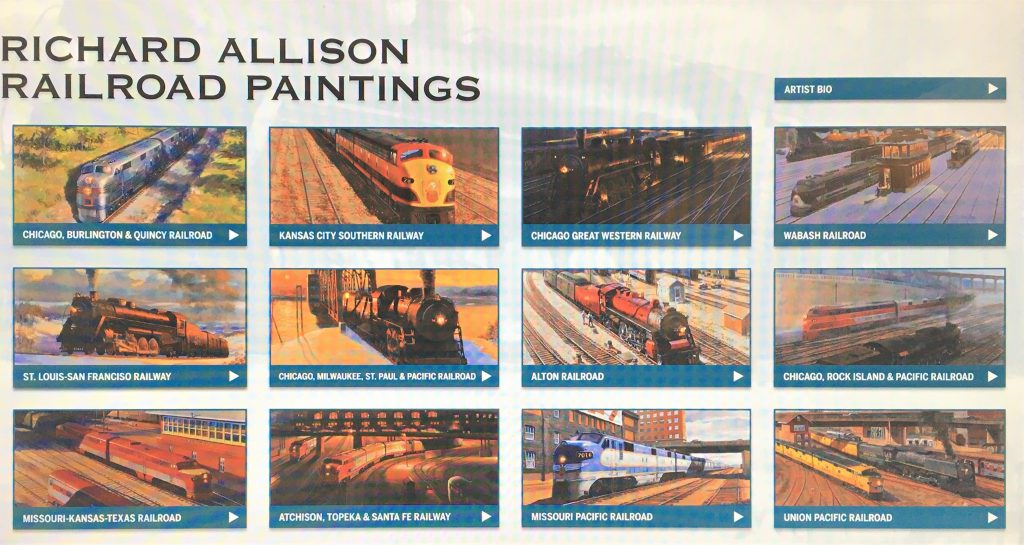
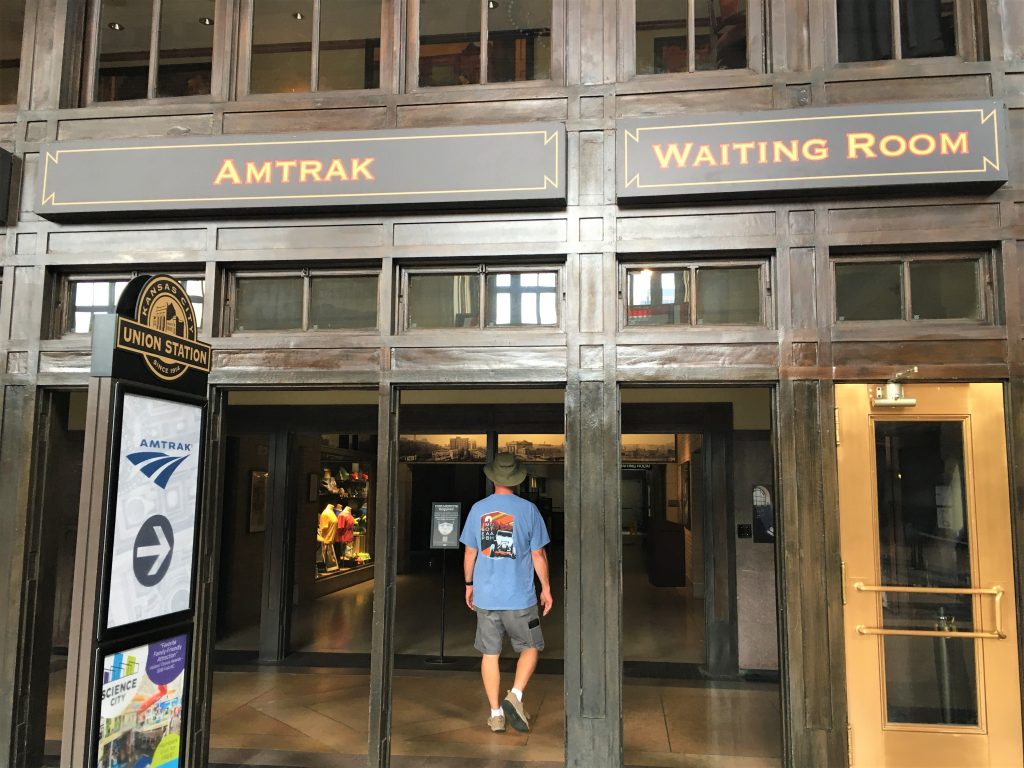
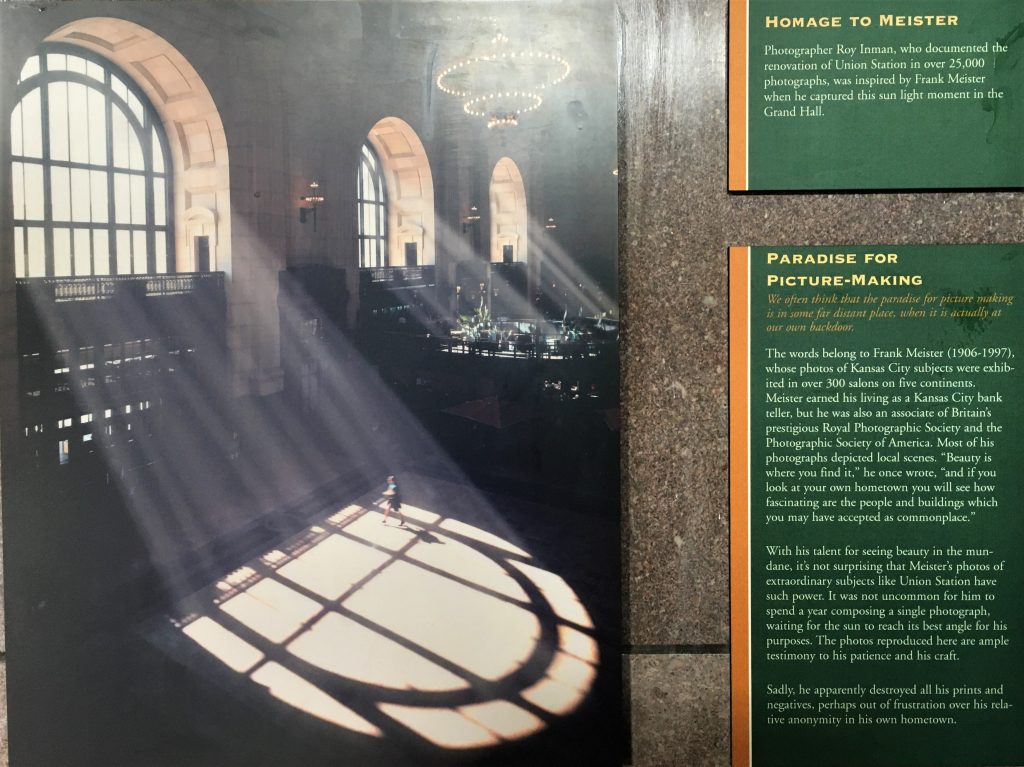

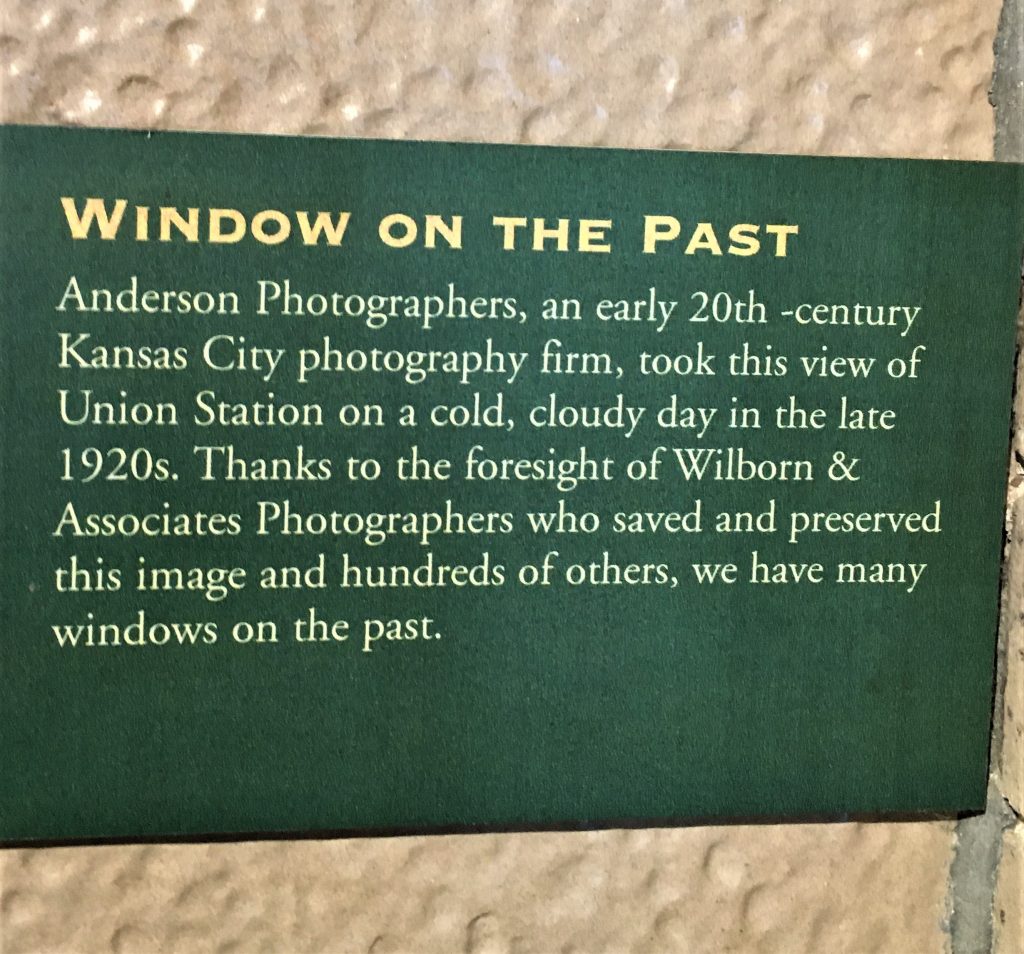

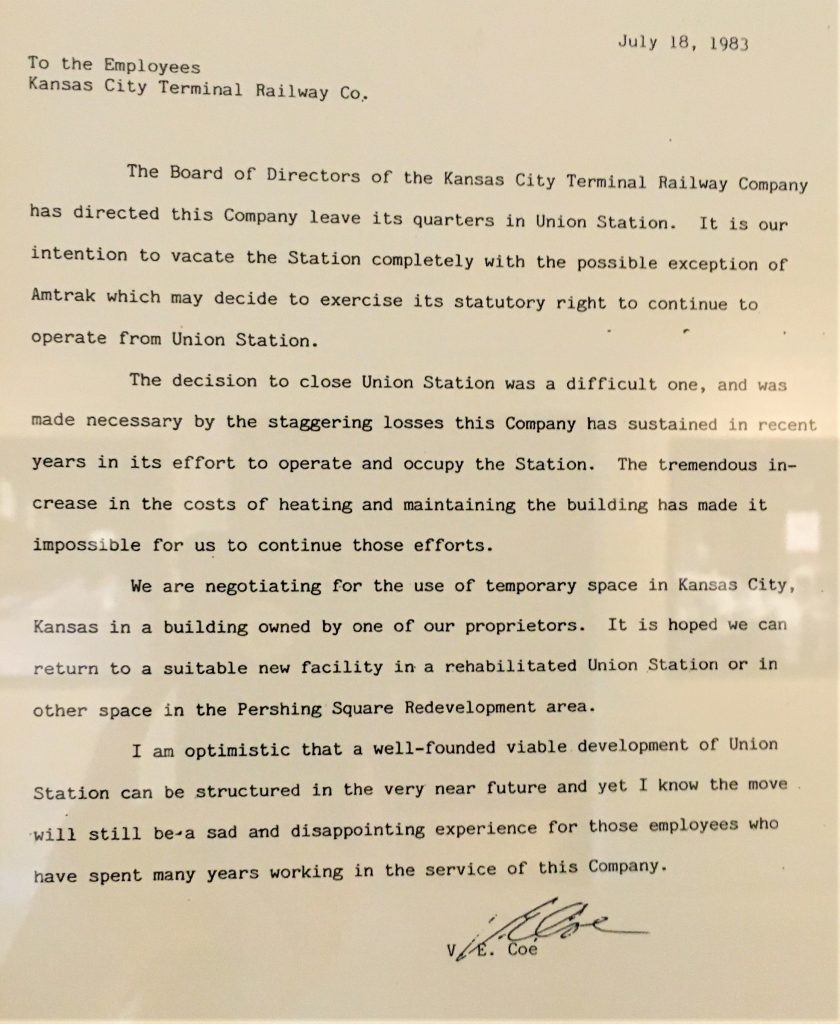
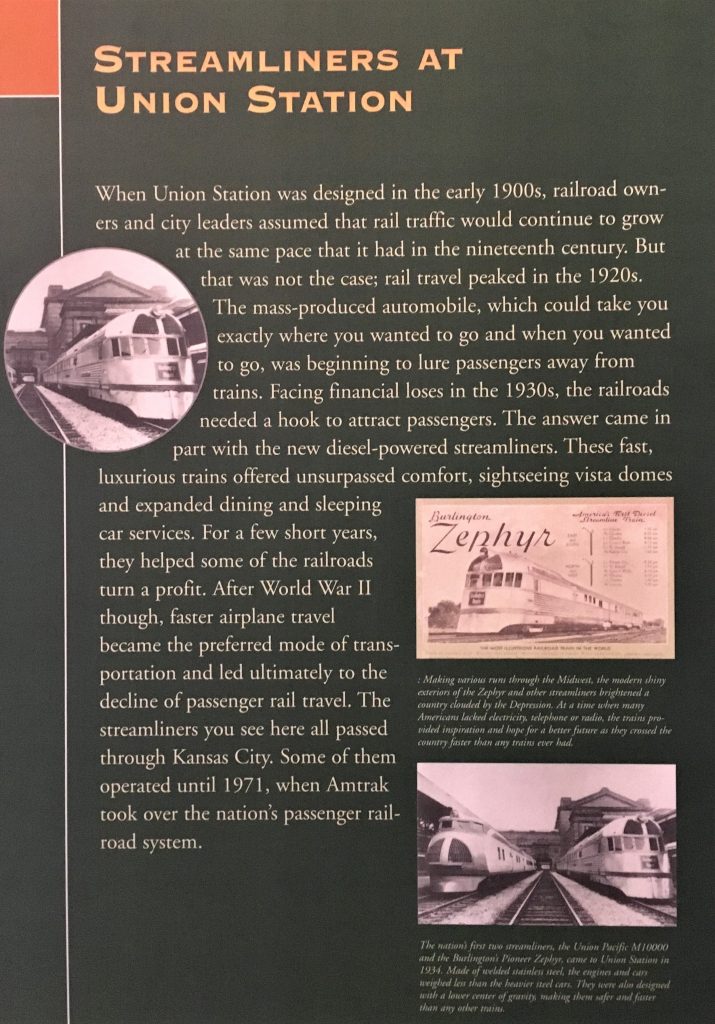
We have several pictures of the waiting room – both from today, and from the past.
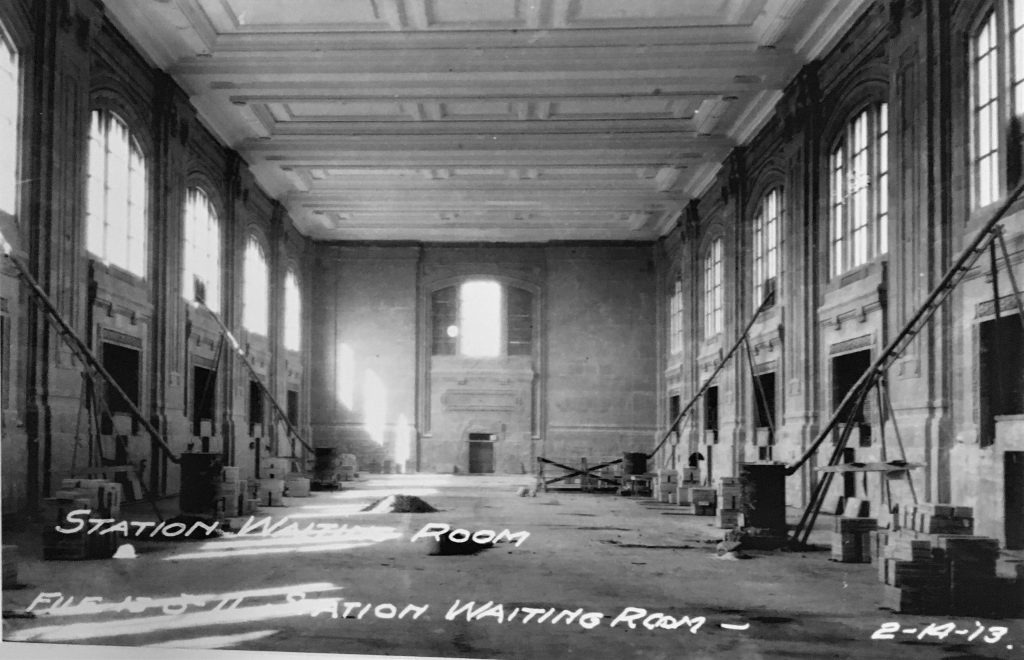
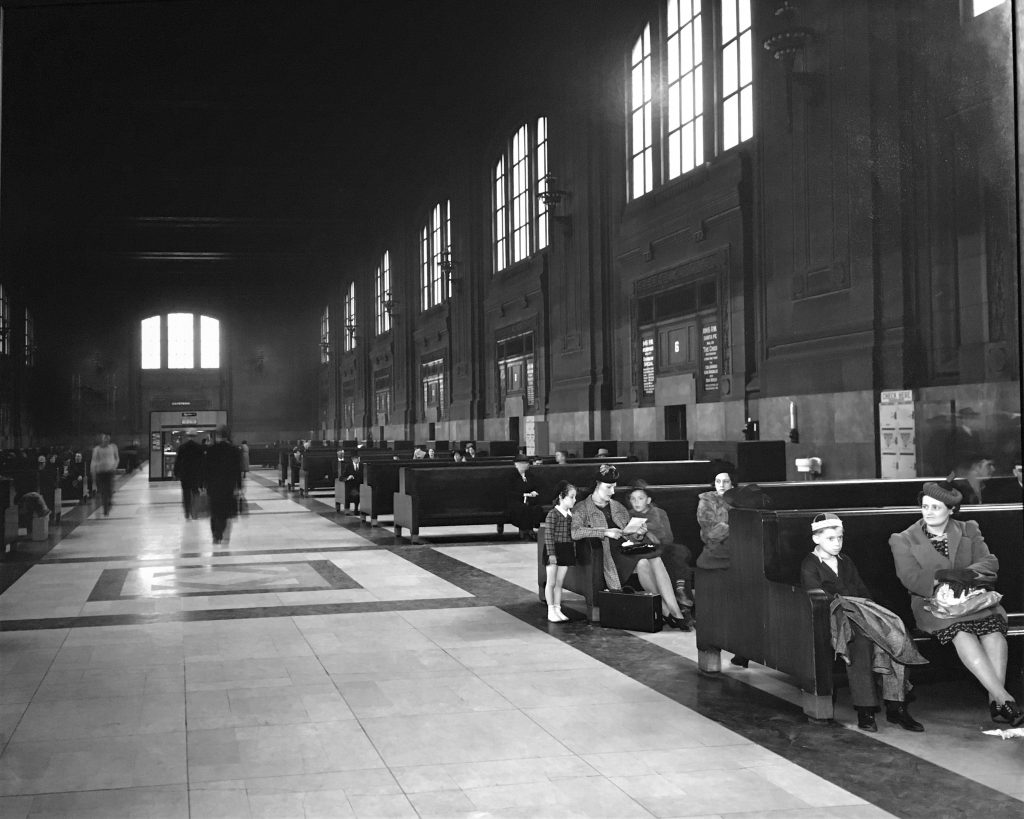

If you read the top picture, you’ll discover that at some point,
the marble floors were covered with tile and vending machines!
Why in the world would you cover marble flooring with tile?!?!?
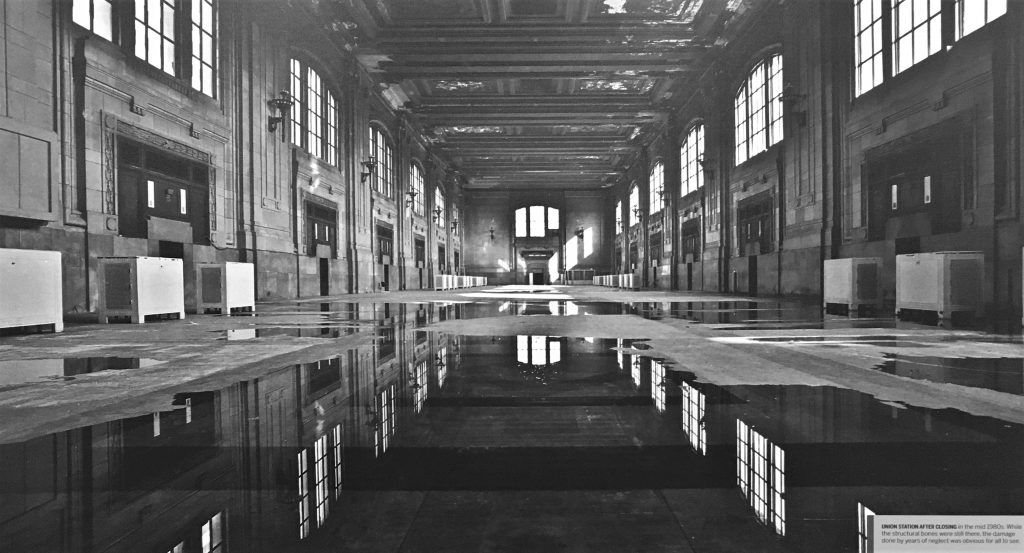

They did a remarkable job of restoration!! Thank you!
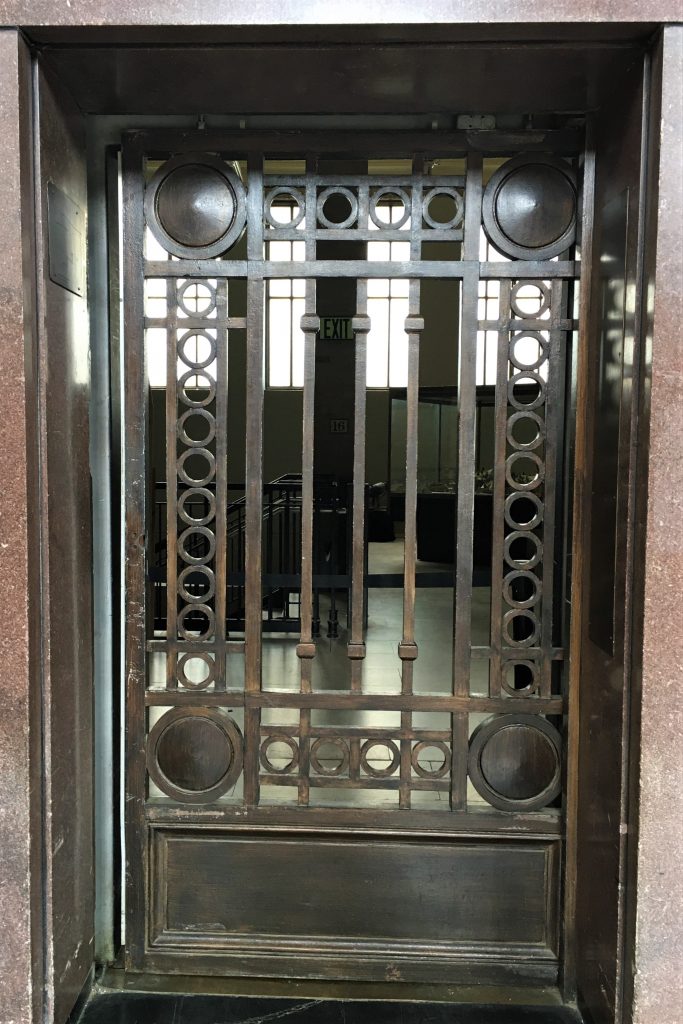
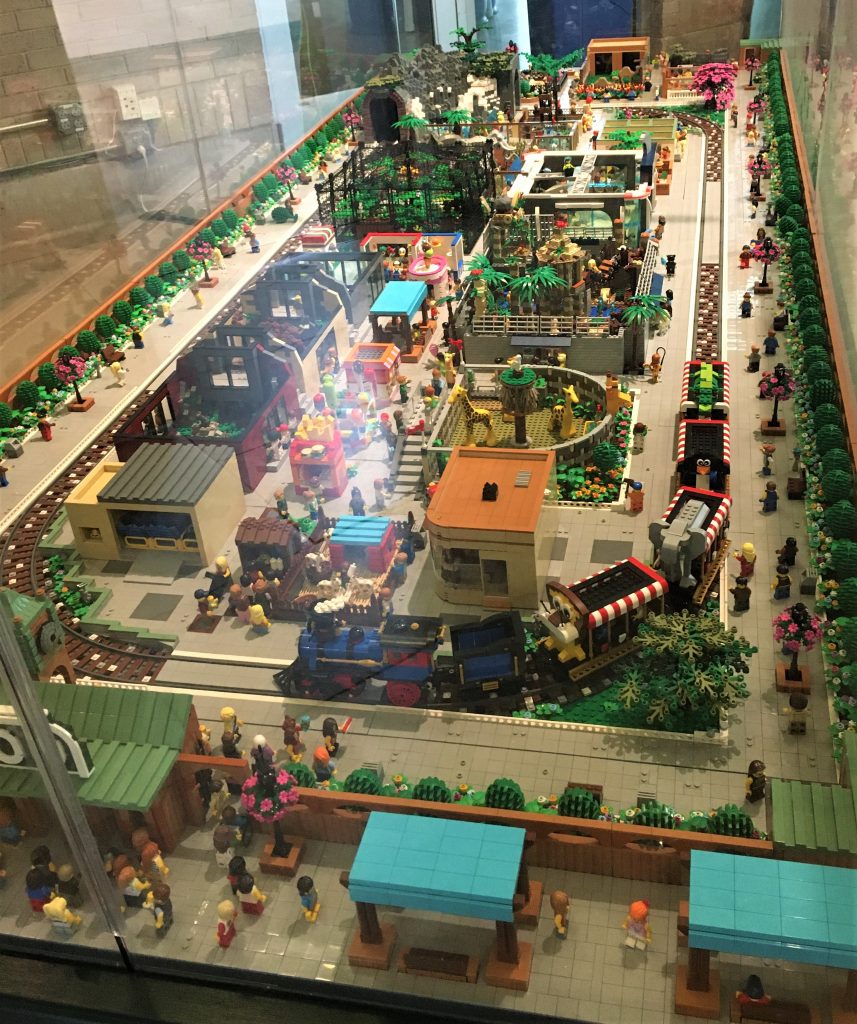
So amazing how people can put these things together!
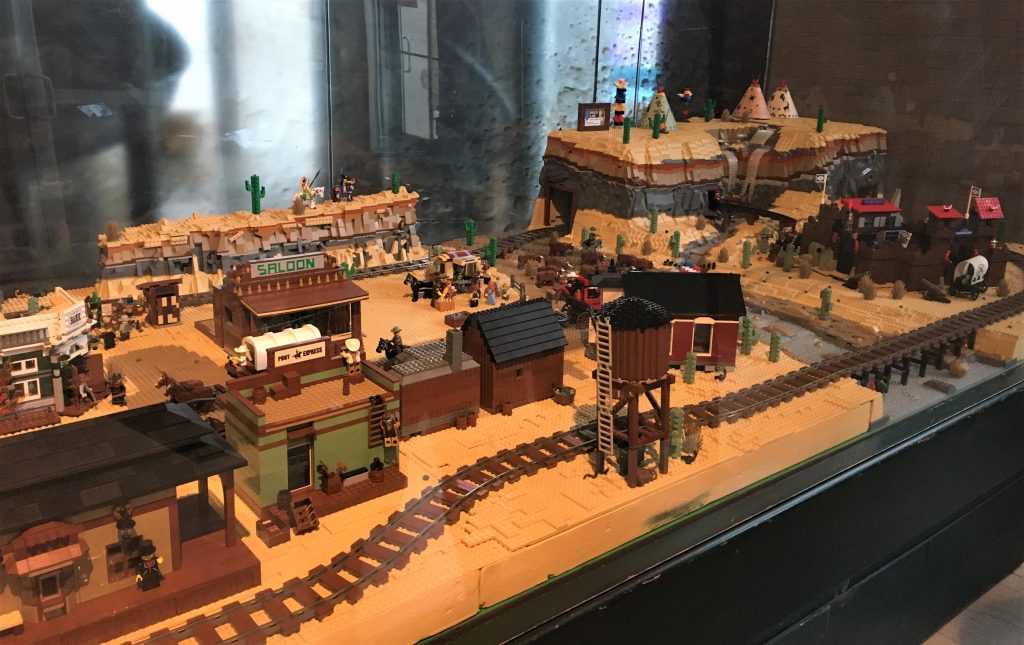
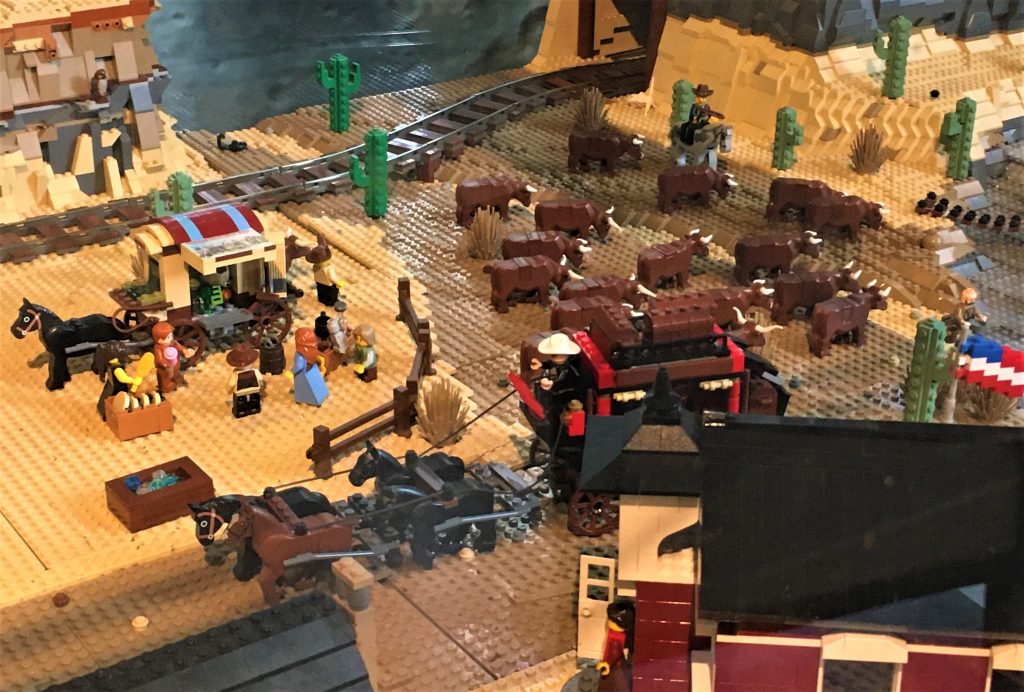
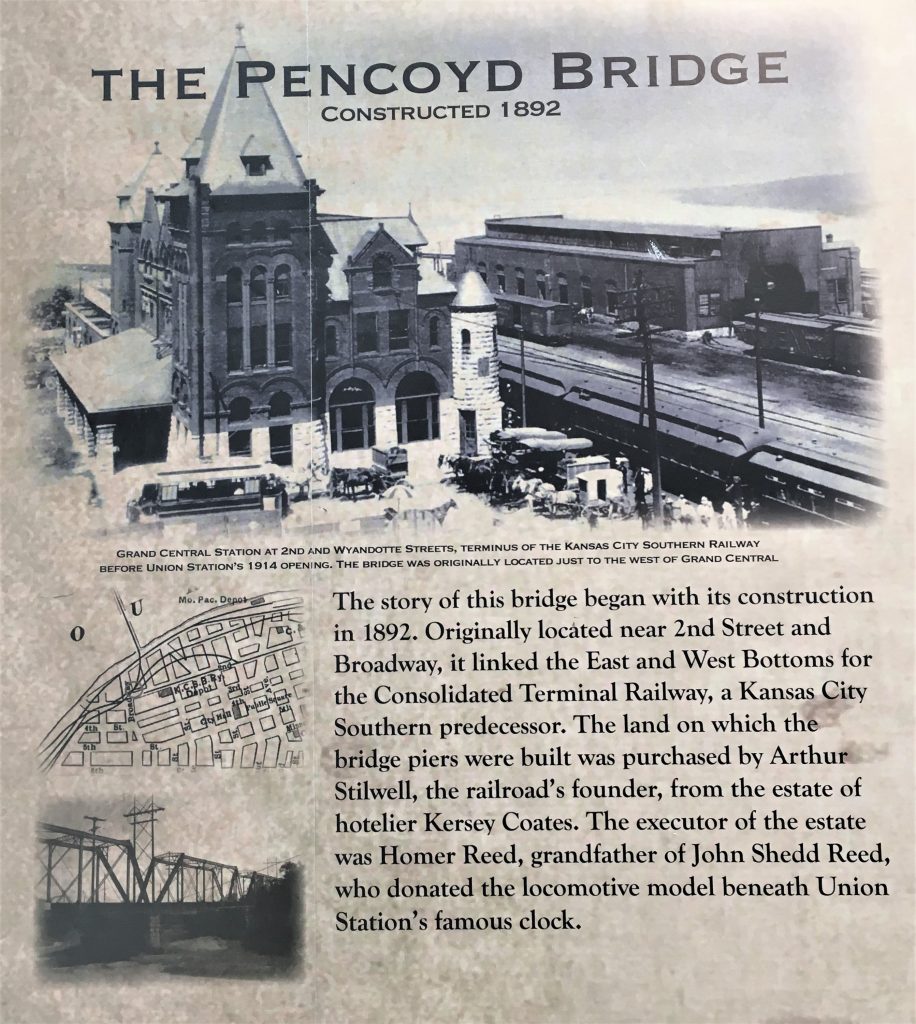
These information boards lined that hallway.
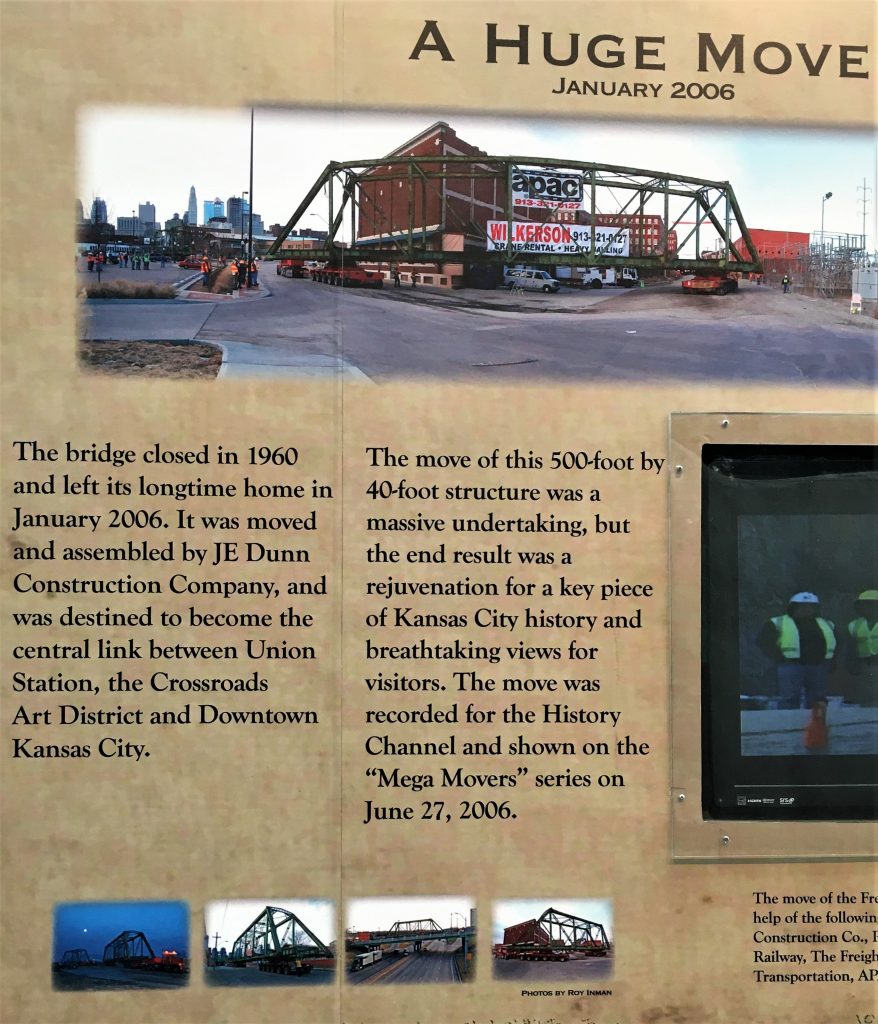
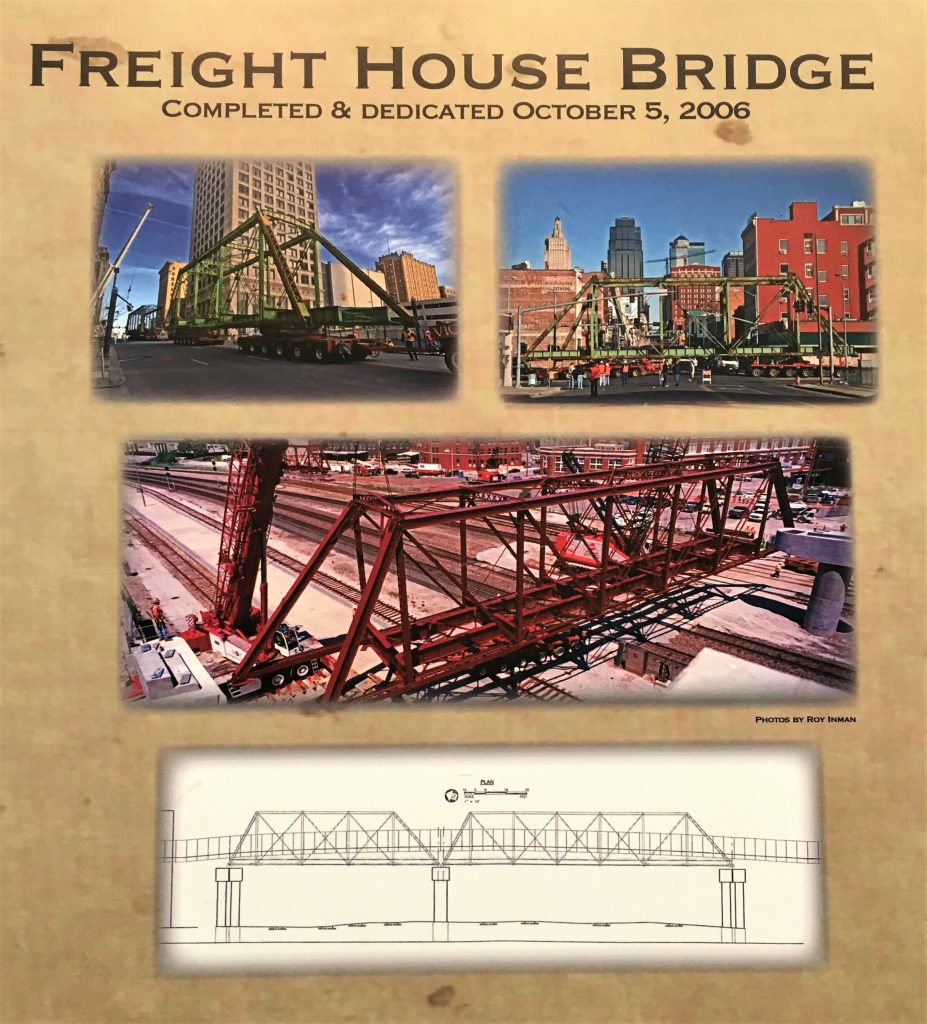
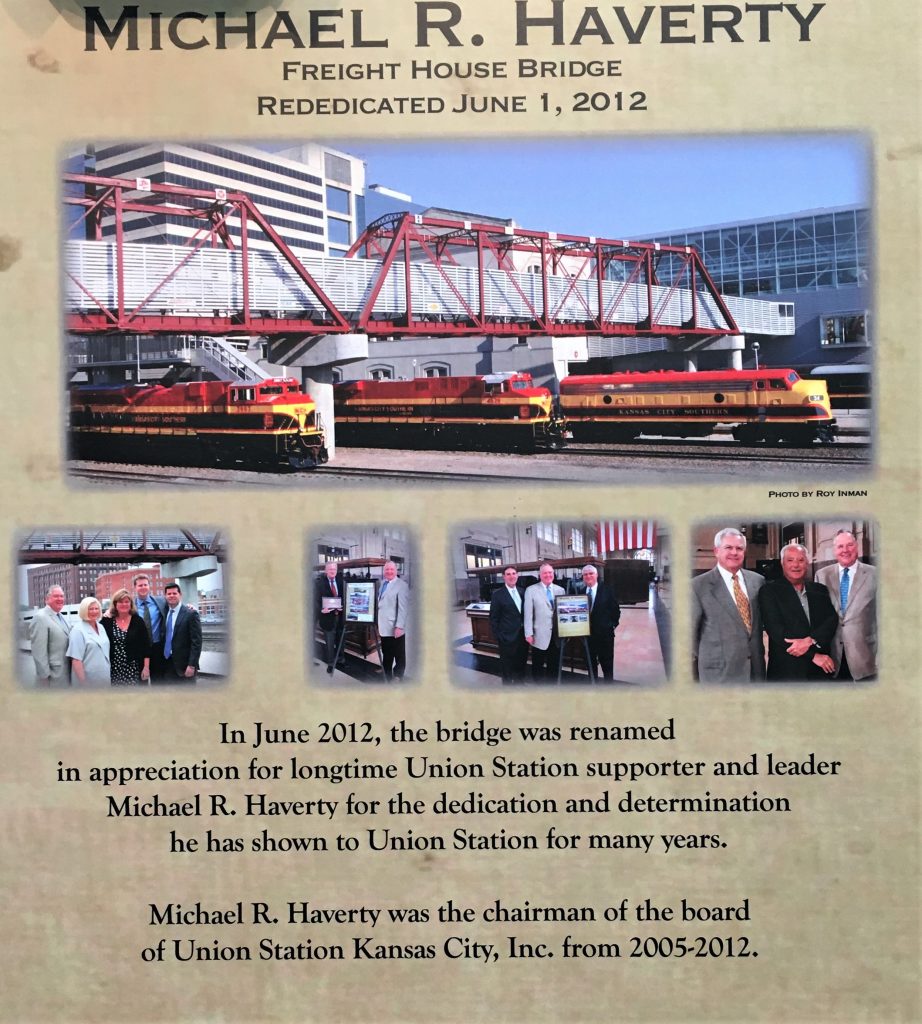
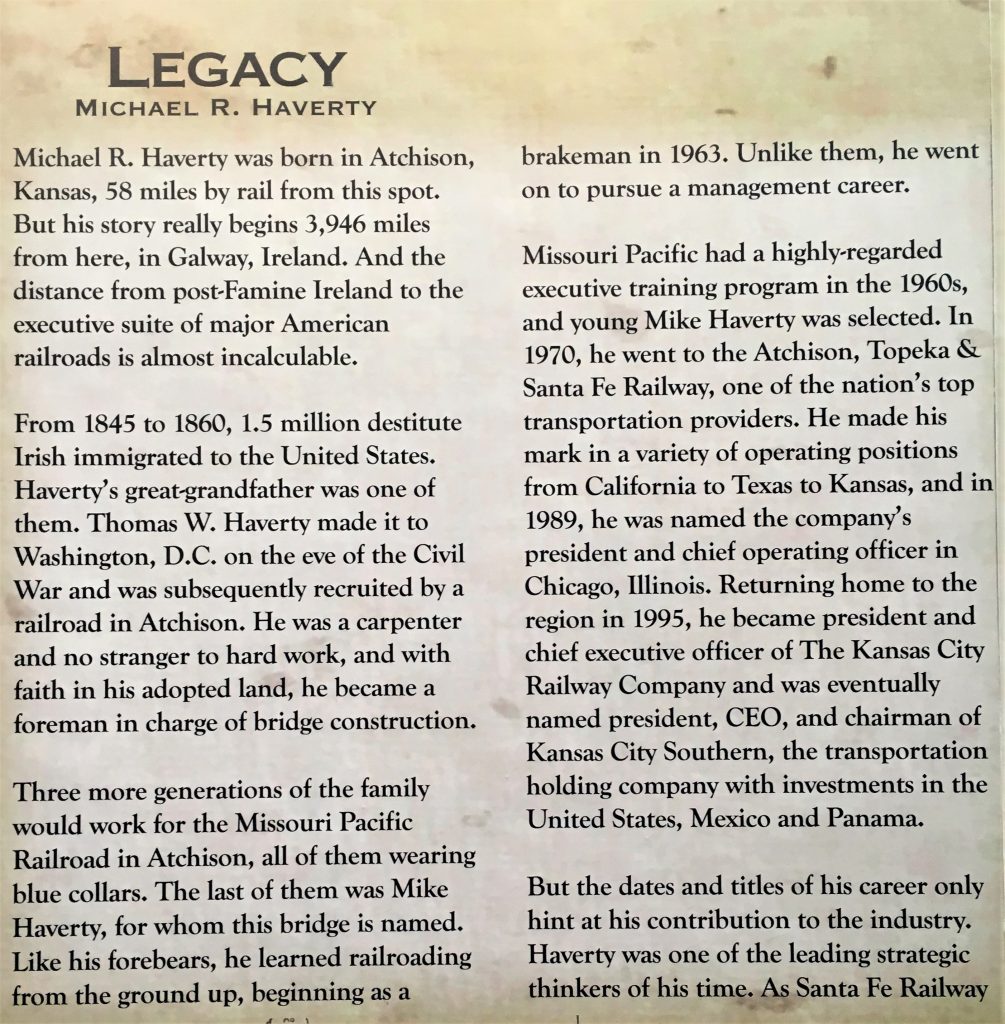
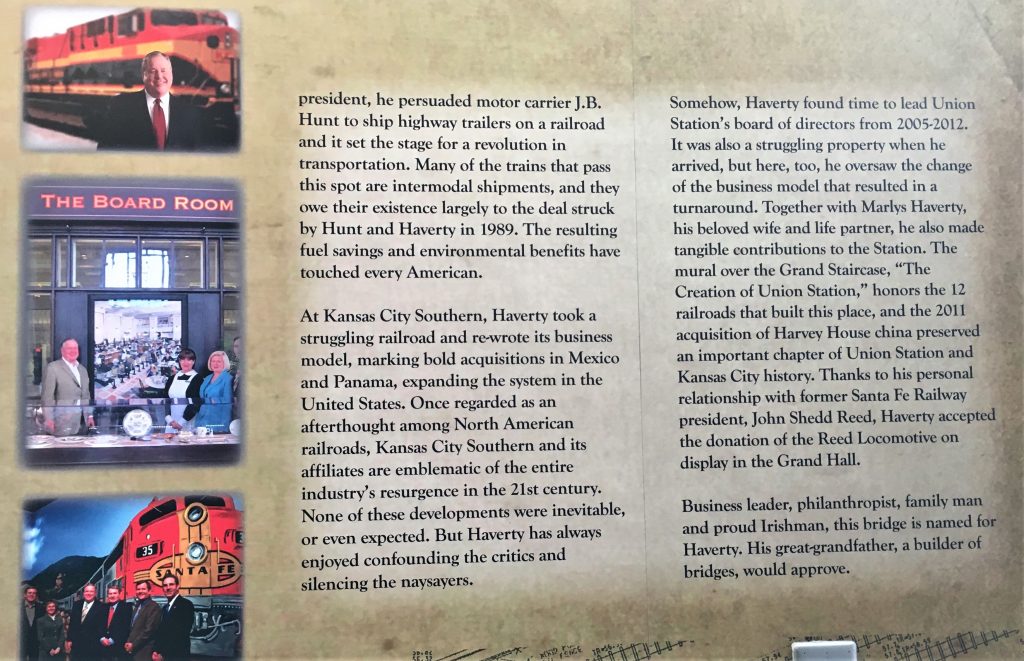
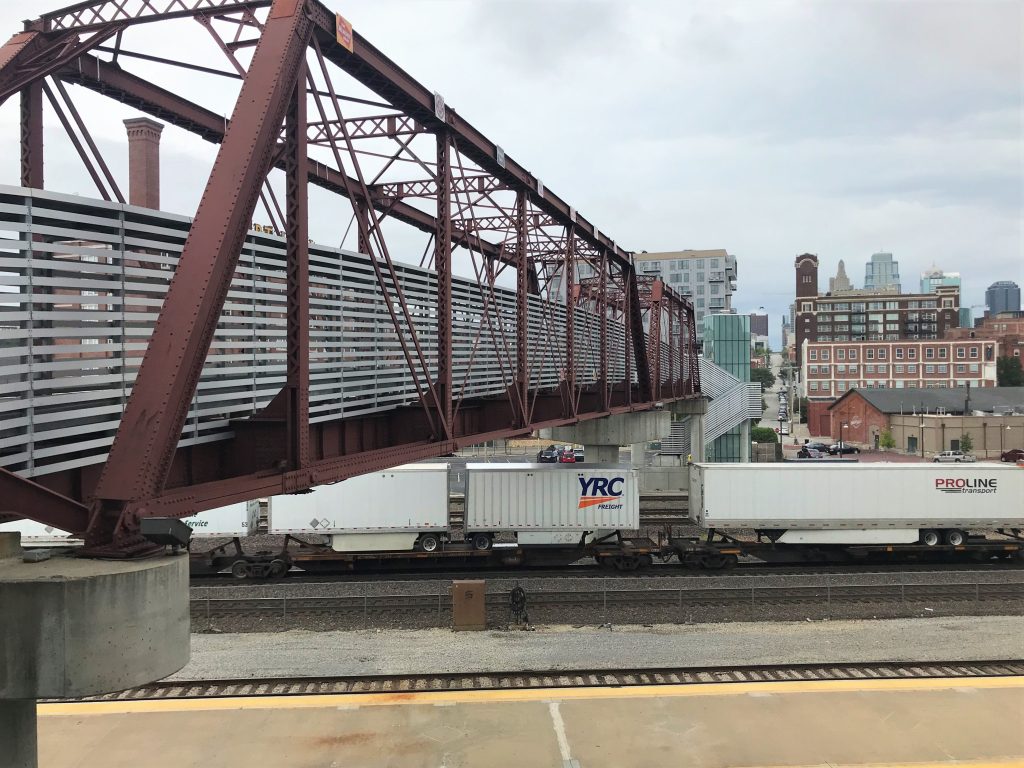
And a train’s going right under it!
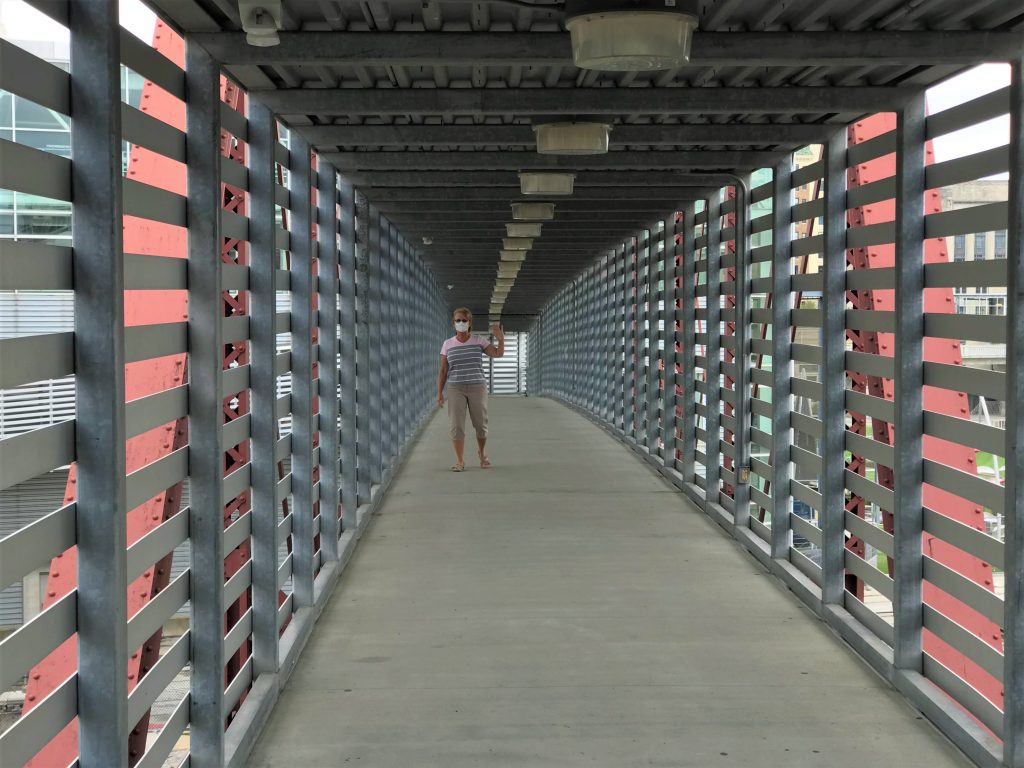
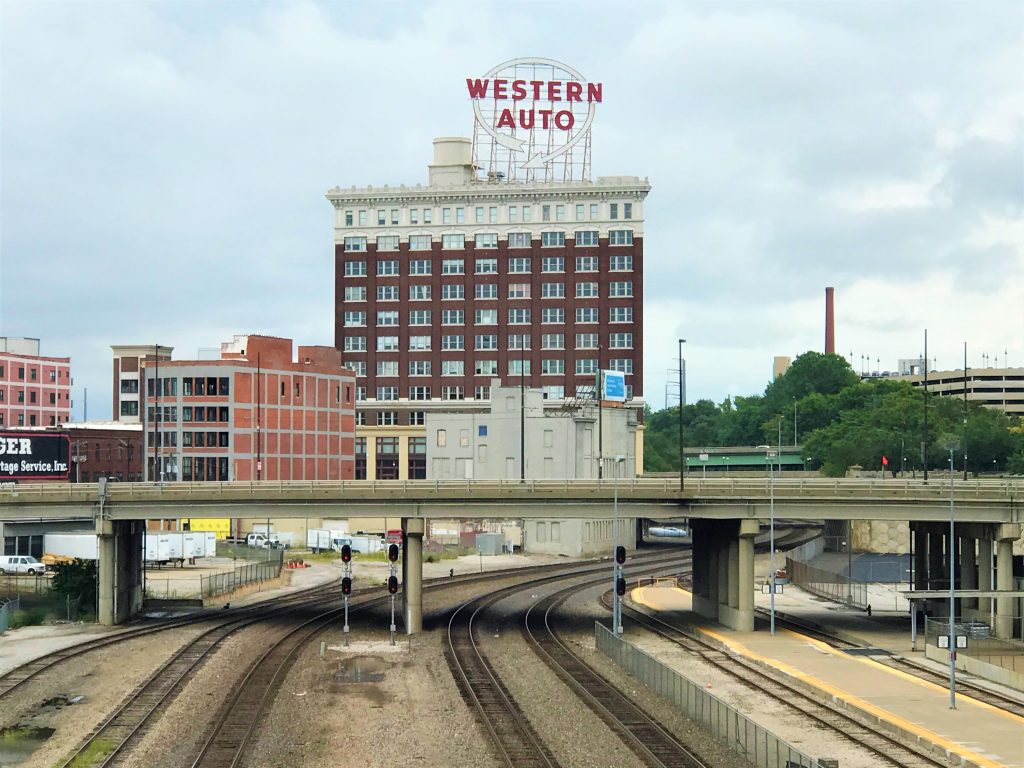
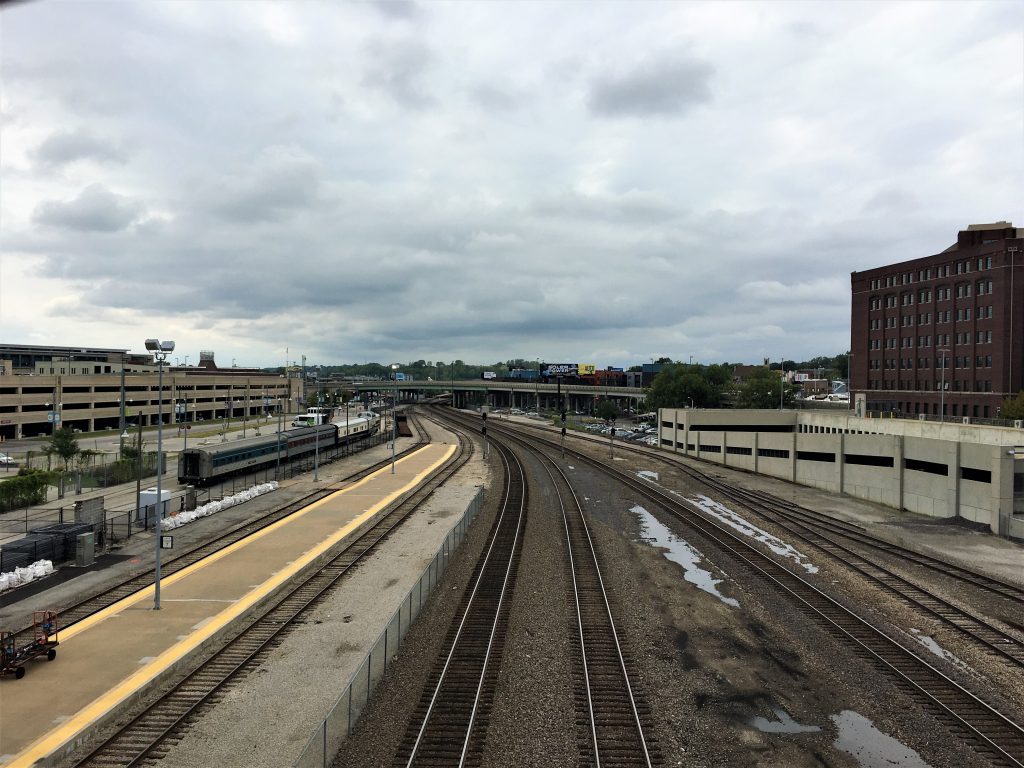
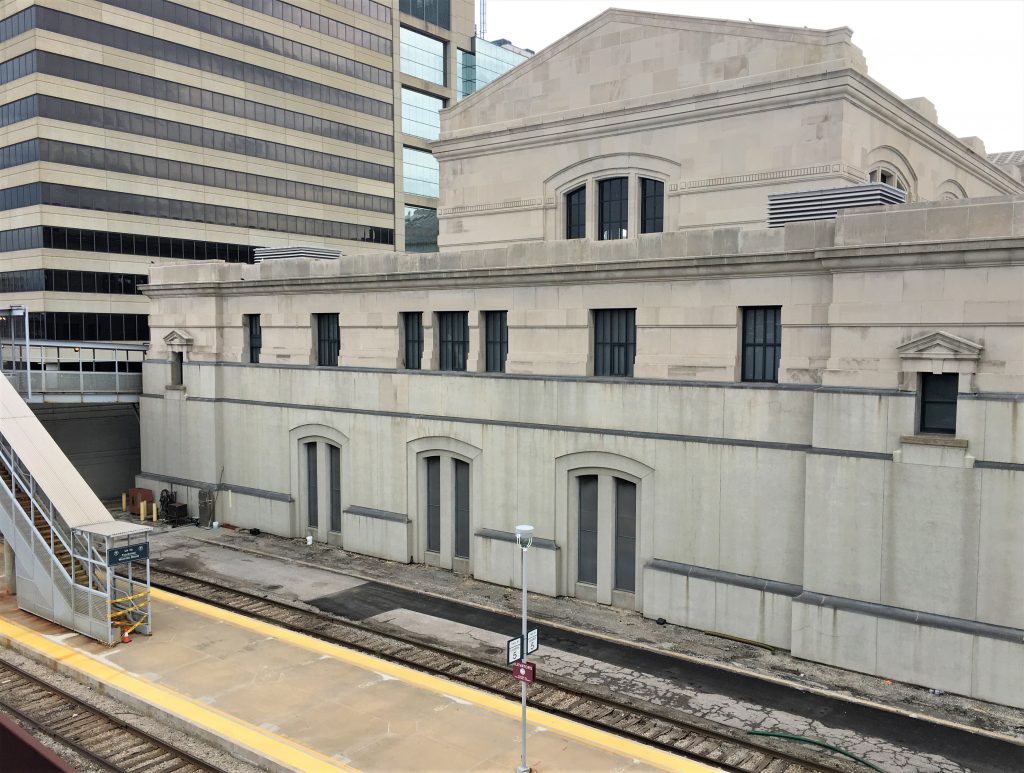
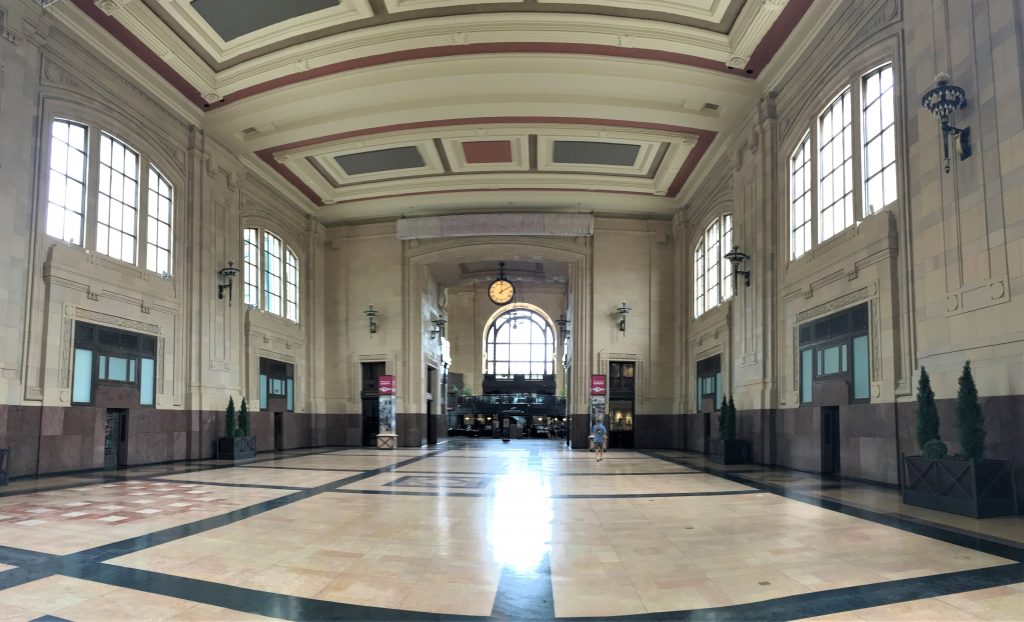
I took this short panoramic. That’s Blaine up there. Just look how small he looks!
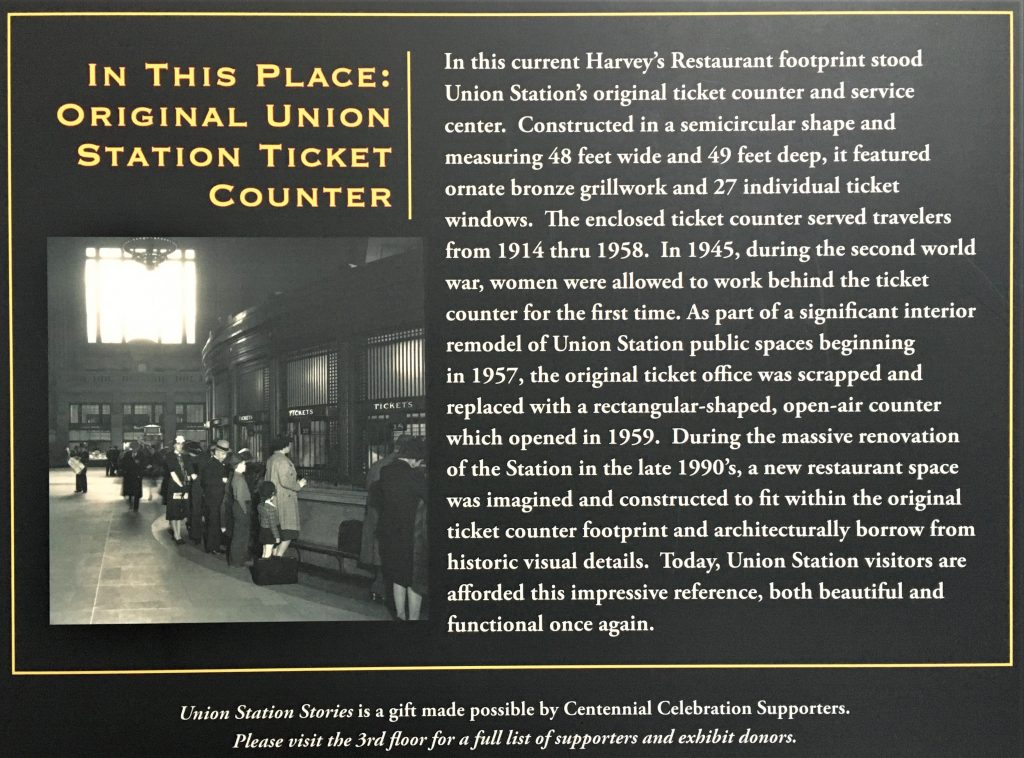
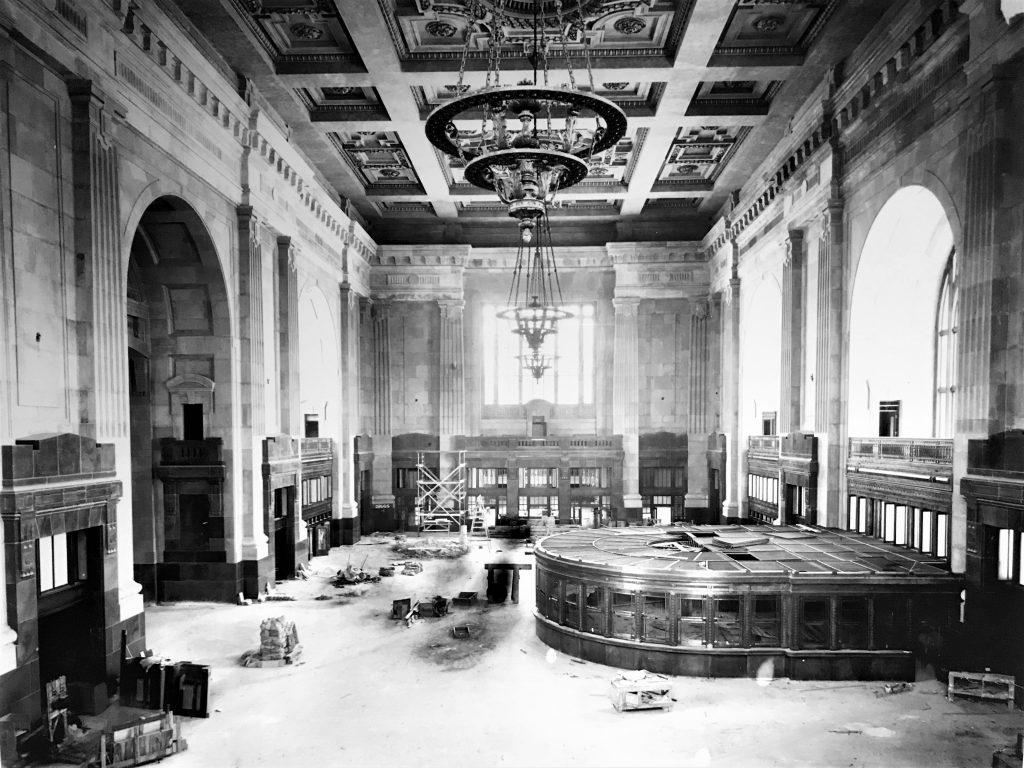
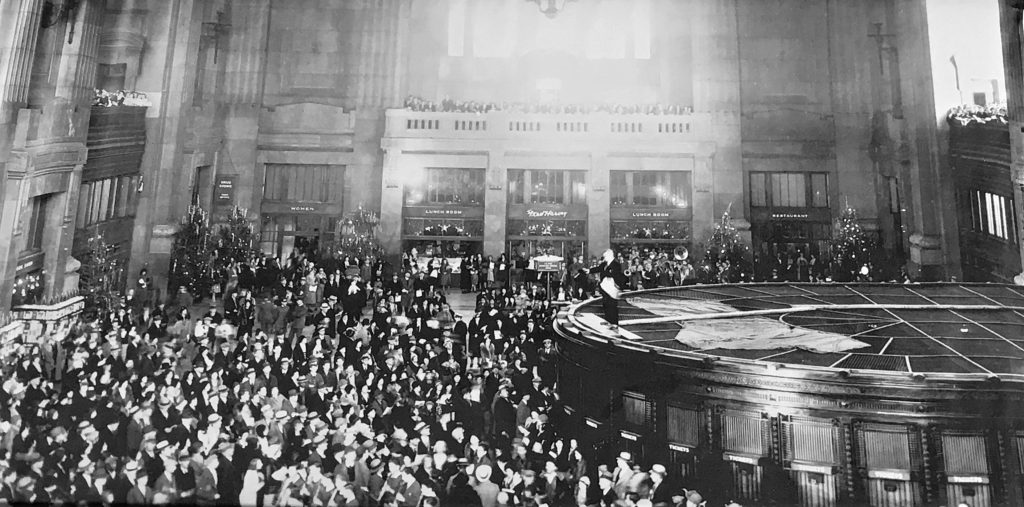

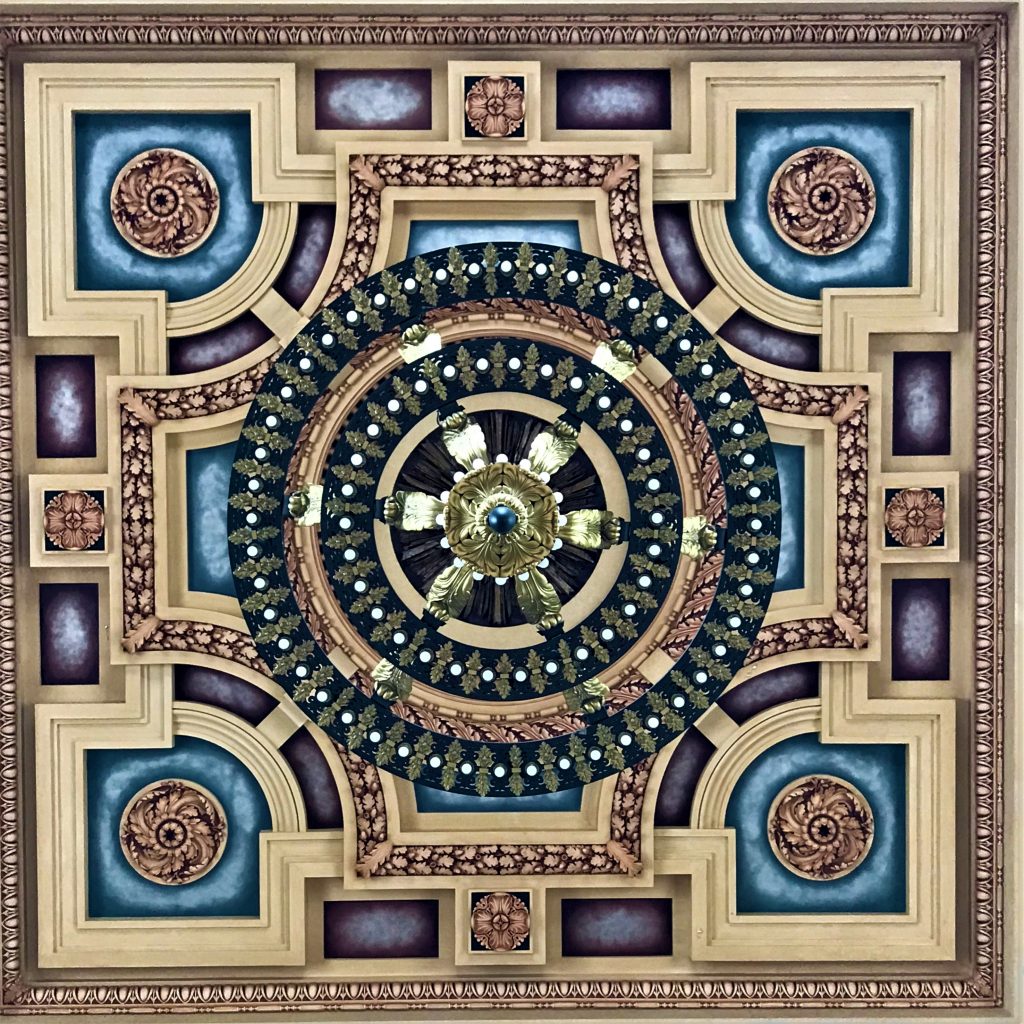
Pretty cool, don’t you think???
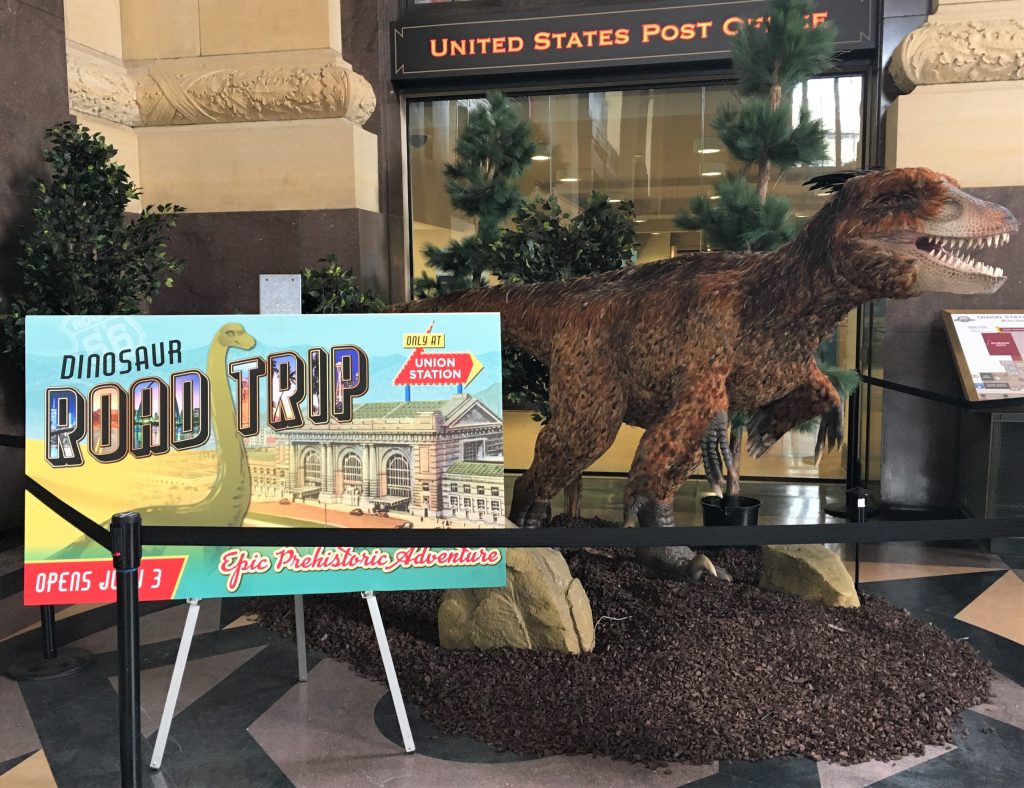
Can anyone tell me how they know this dinosaur had feathers?
Oh! And this one was animated today, moving his head, opening his mouth, and flapping his “wings”.
No sound though . . . at least not today.
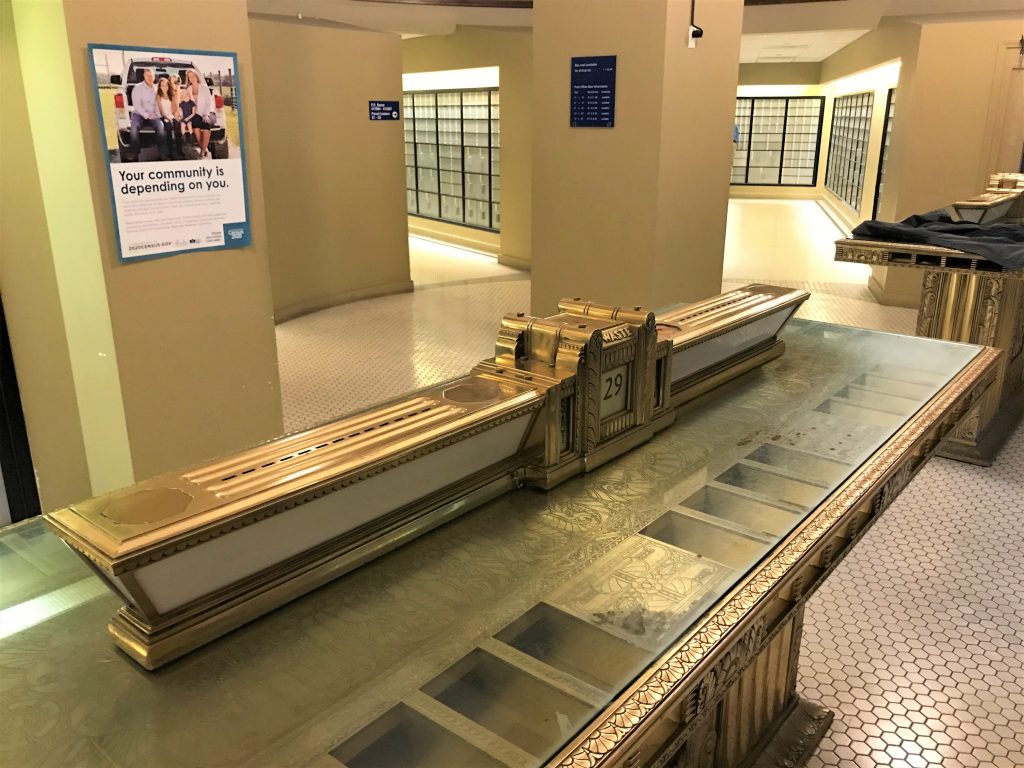
it seems that once upon a time, it was a bank.


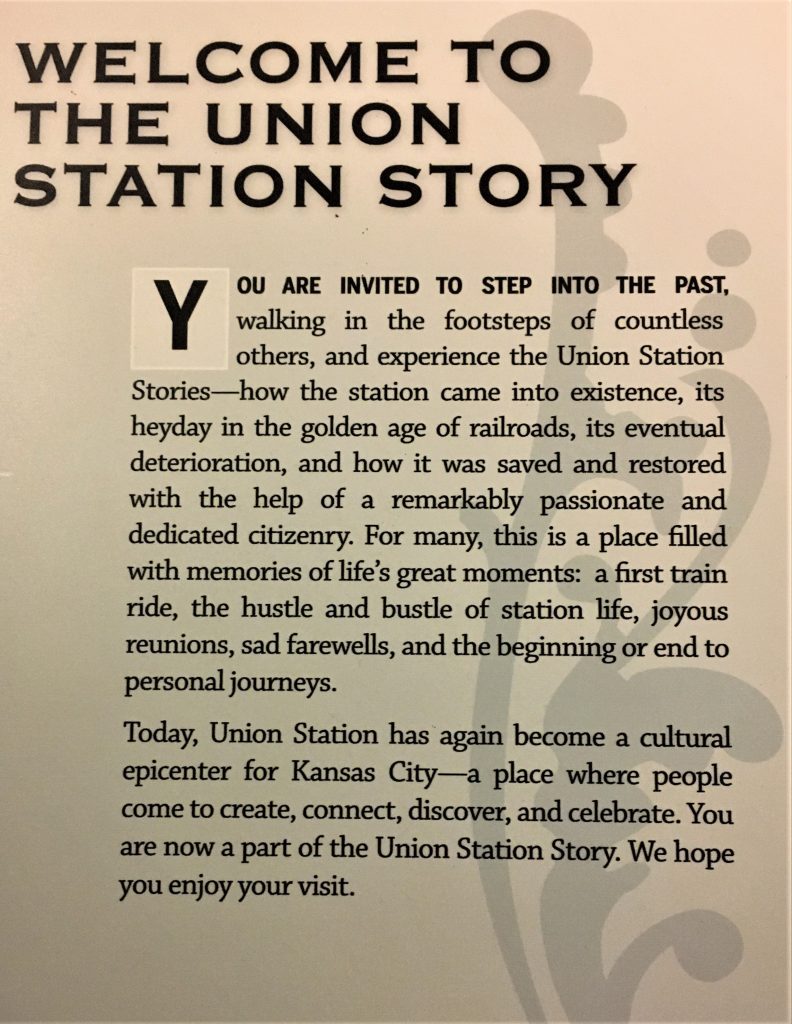
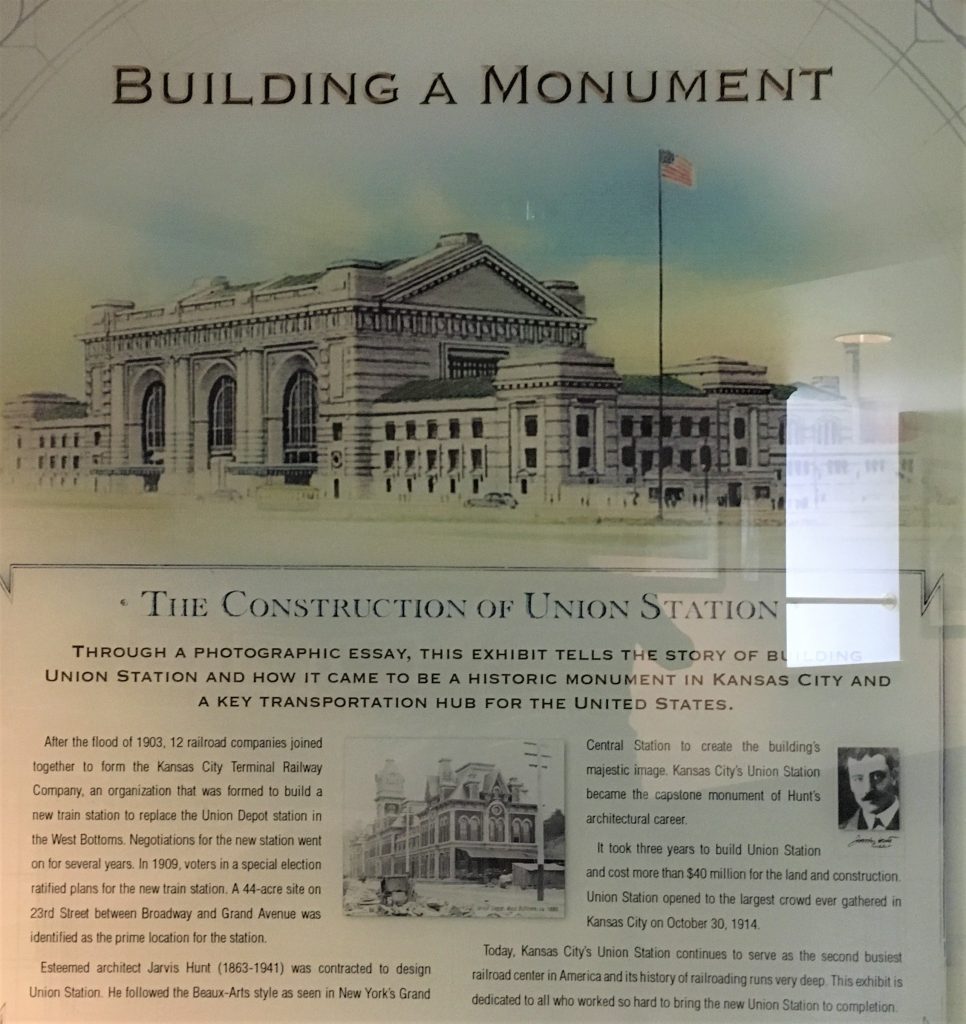

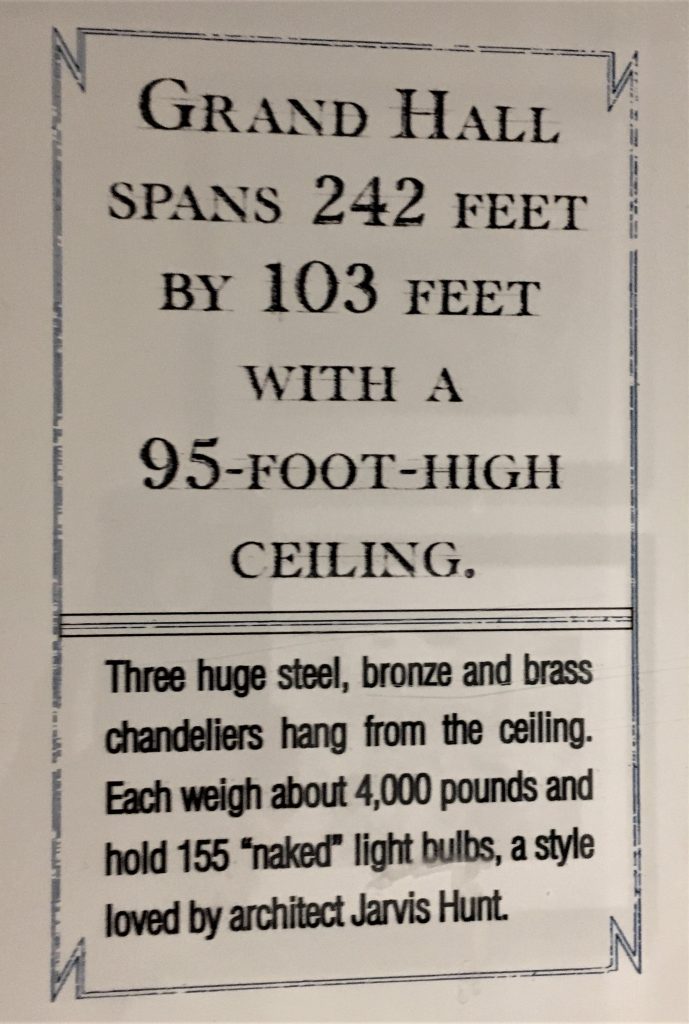
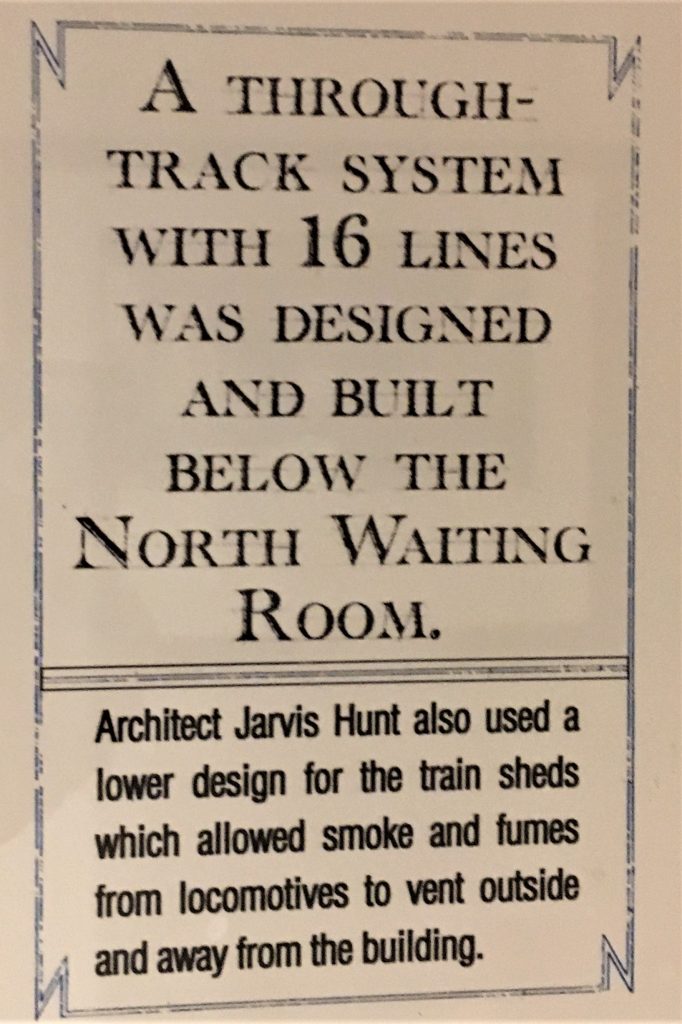
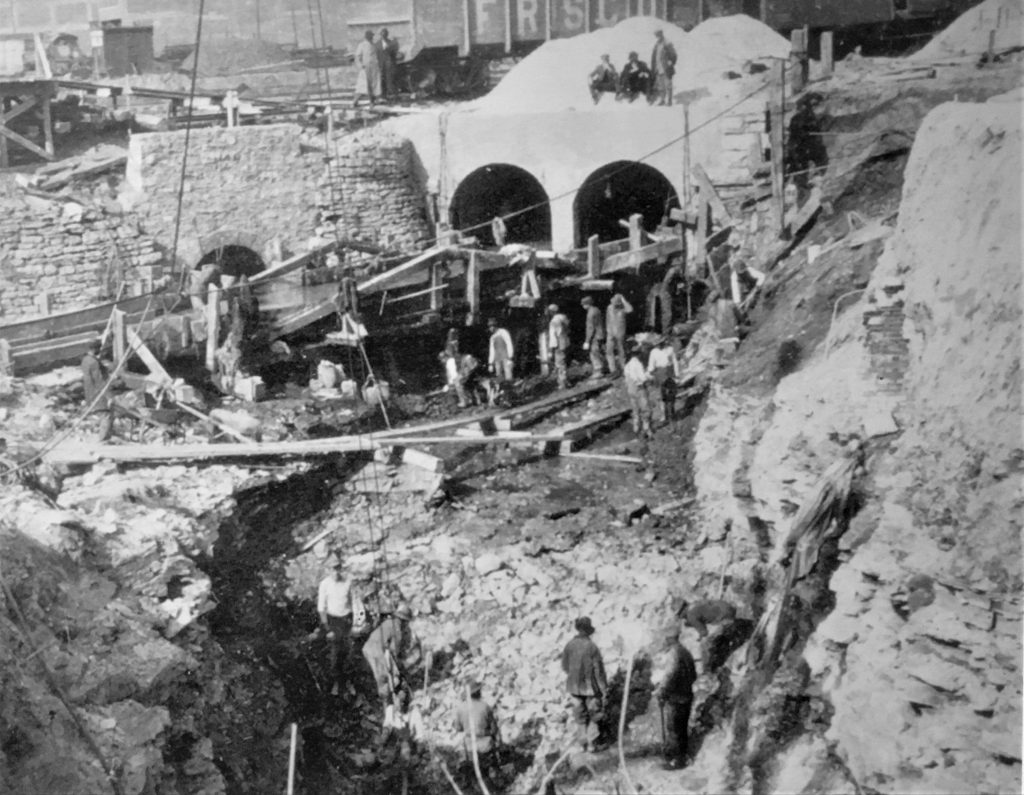
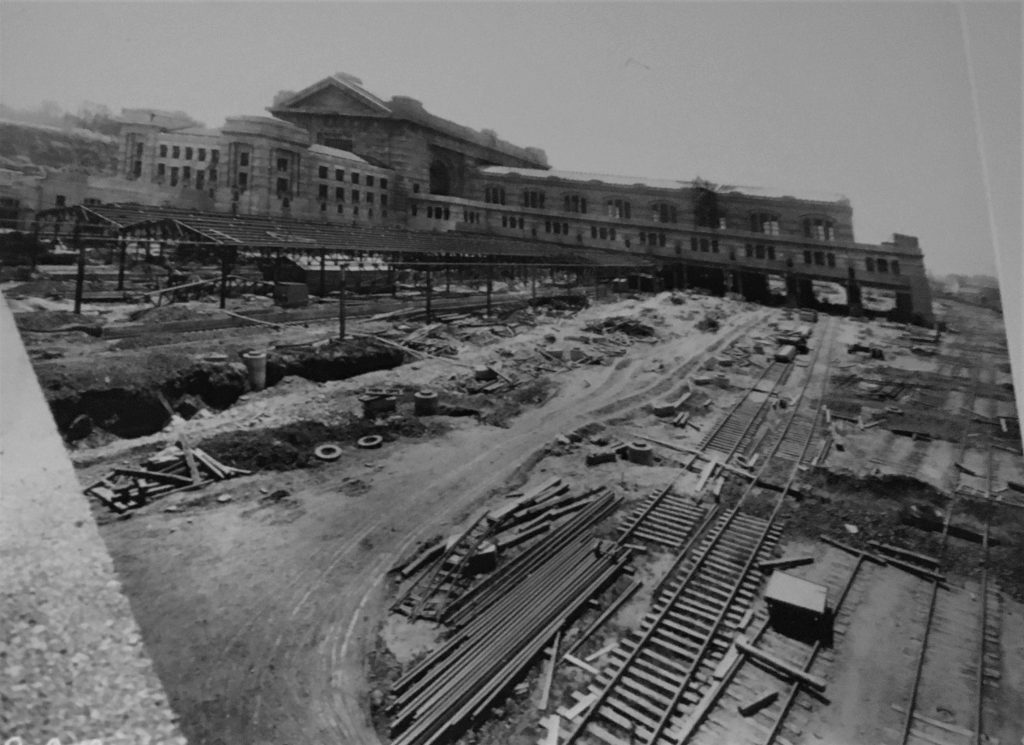
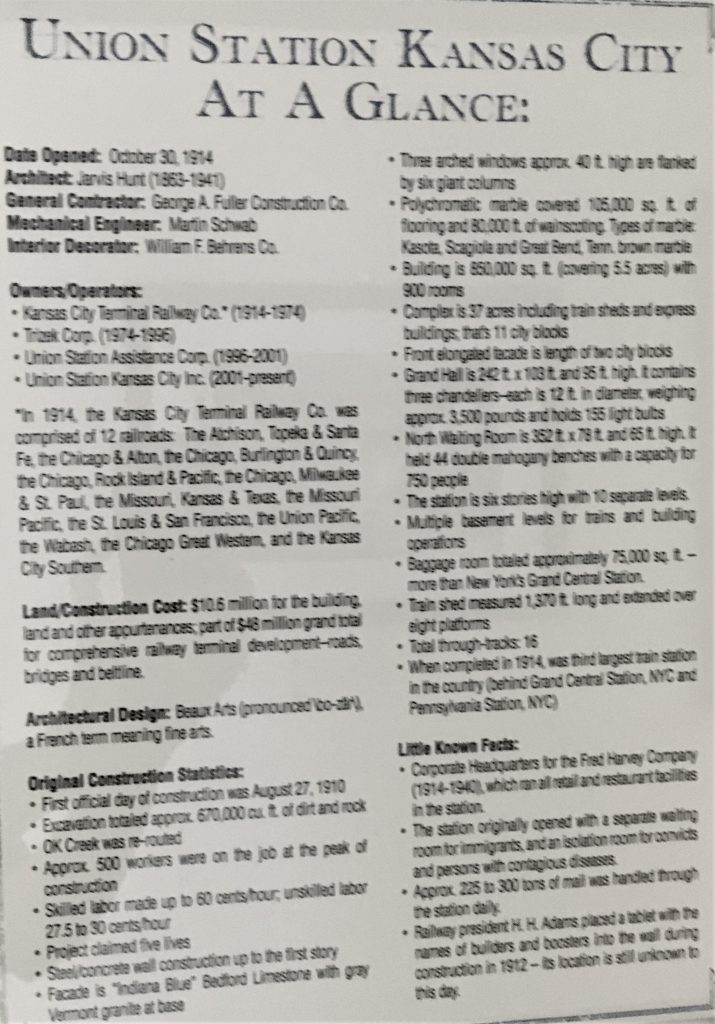
It’s probably because pictures were really difficult to take, between the lighting and glare.
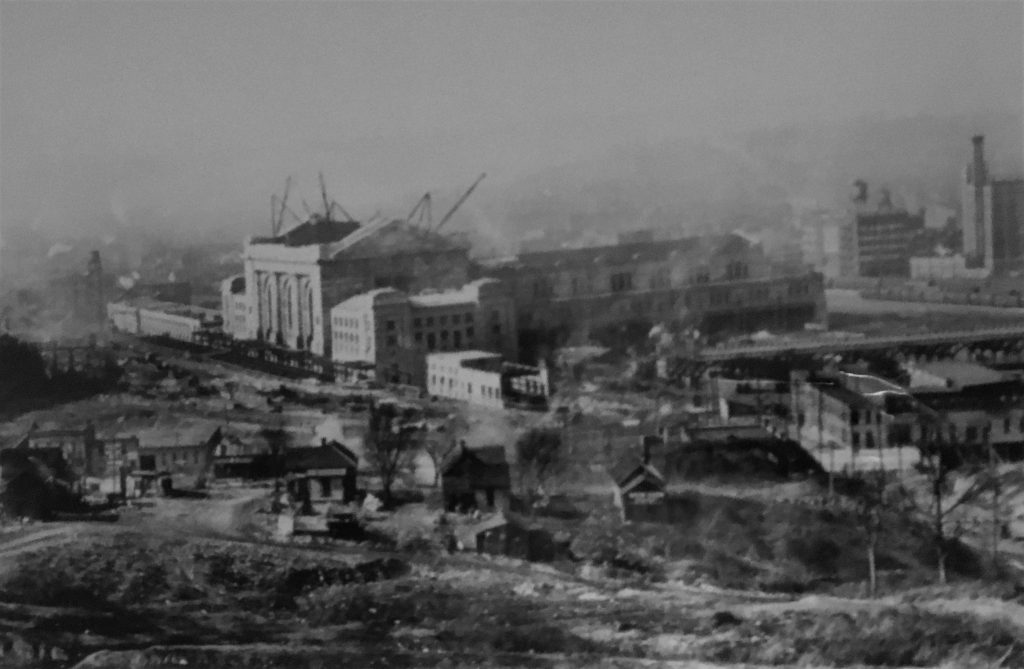
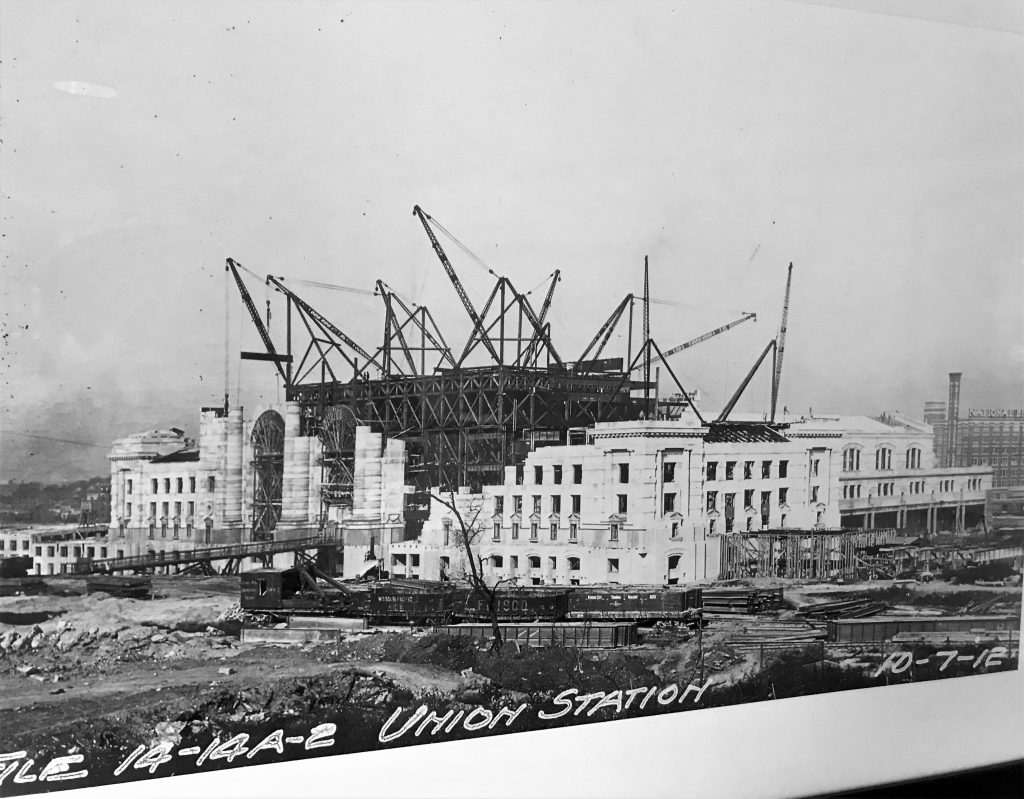
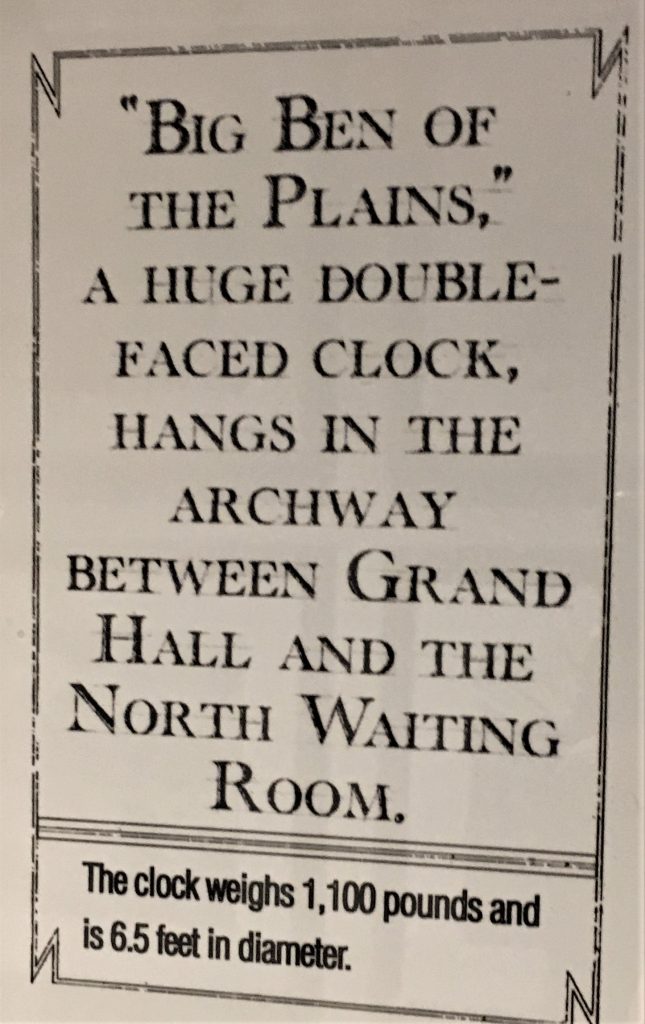
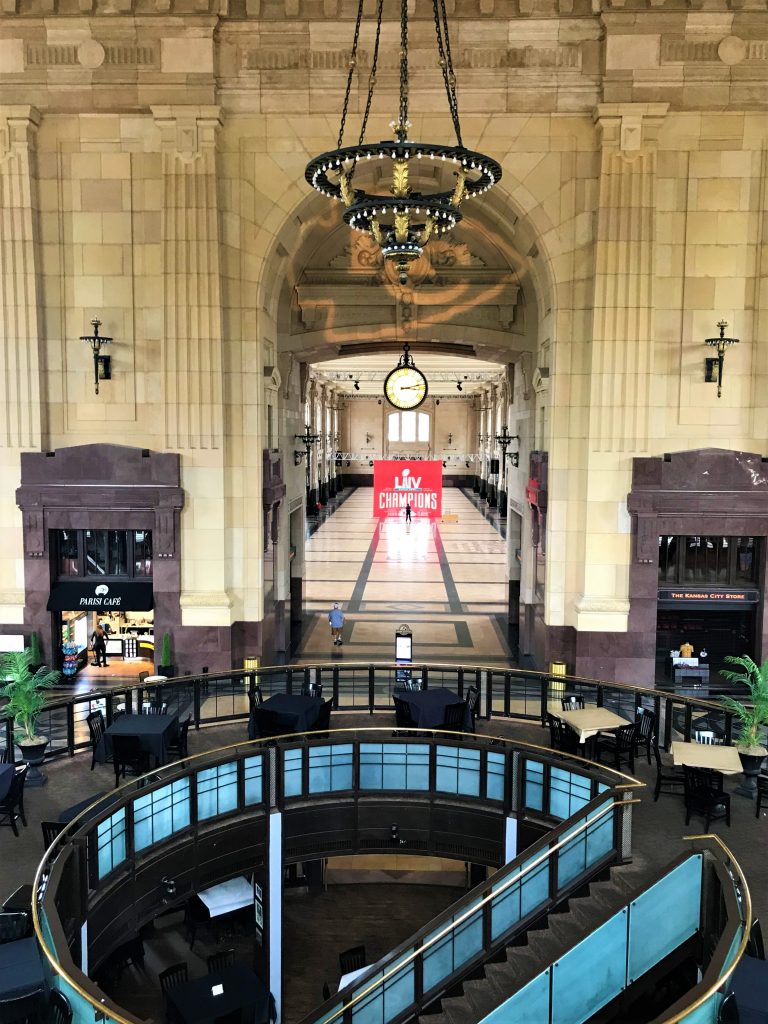
That’s it, hanging over the entry to the waiting room.
We watched them raise the penant.
Personally, we preferred the American Flag. : )
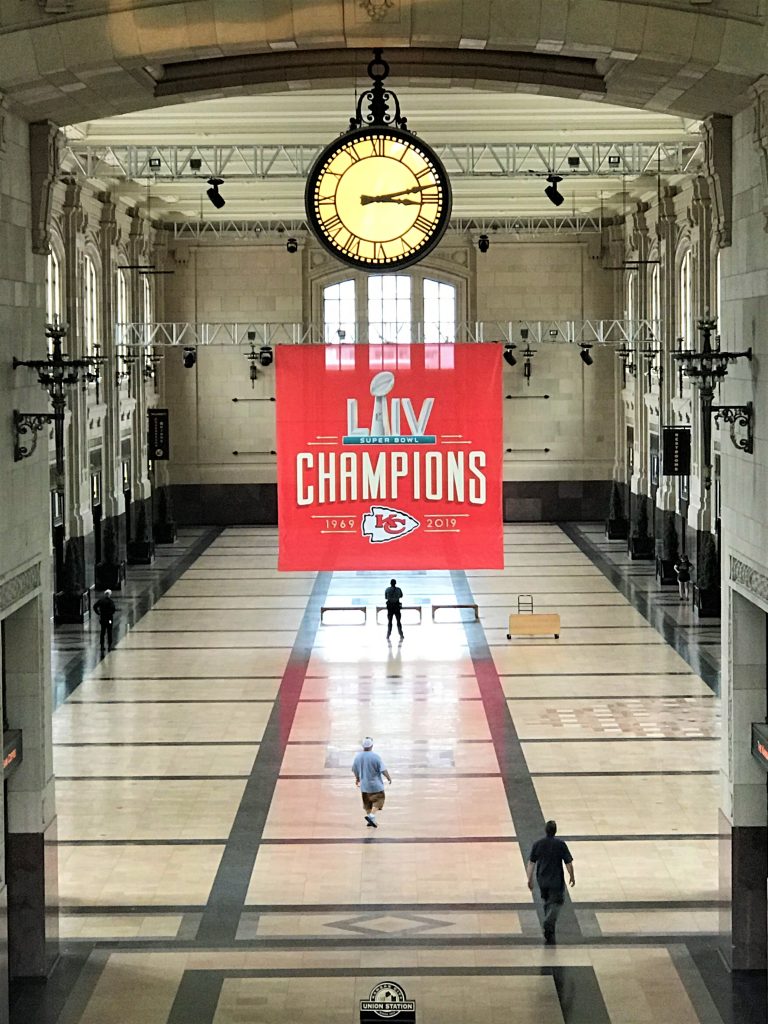

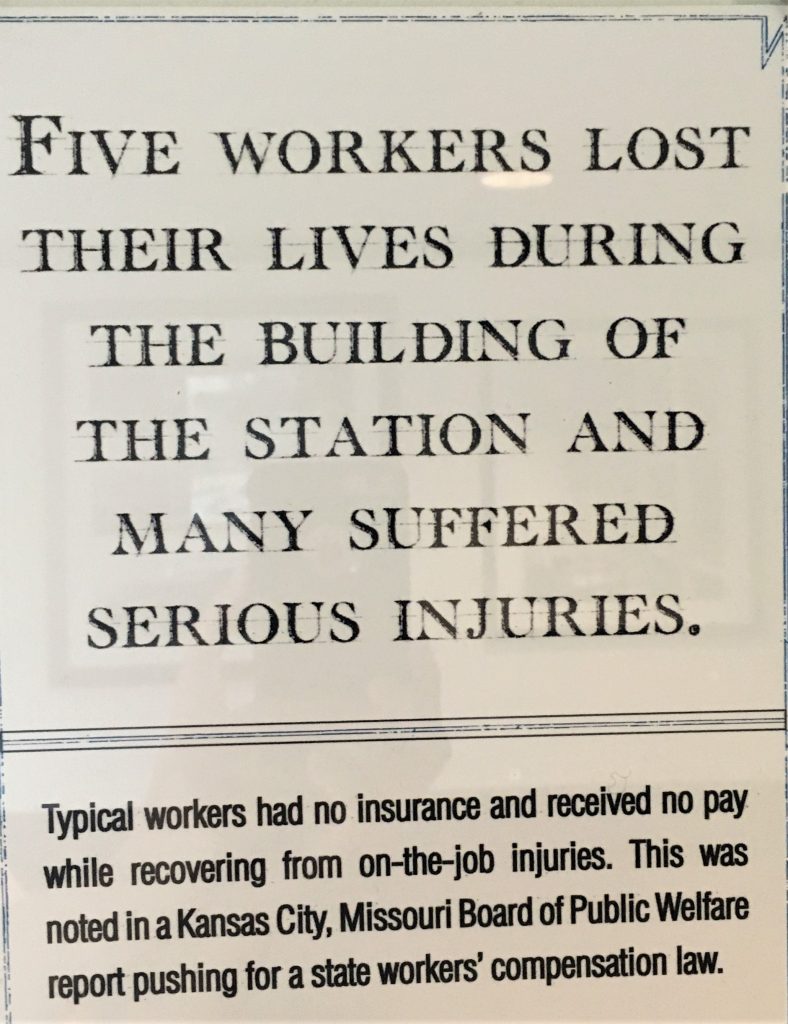
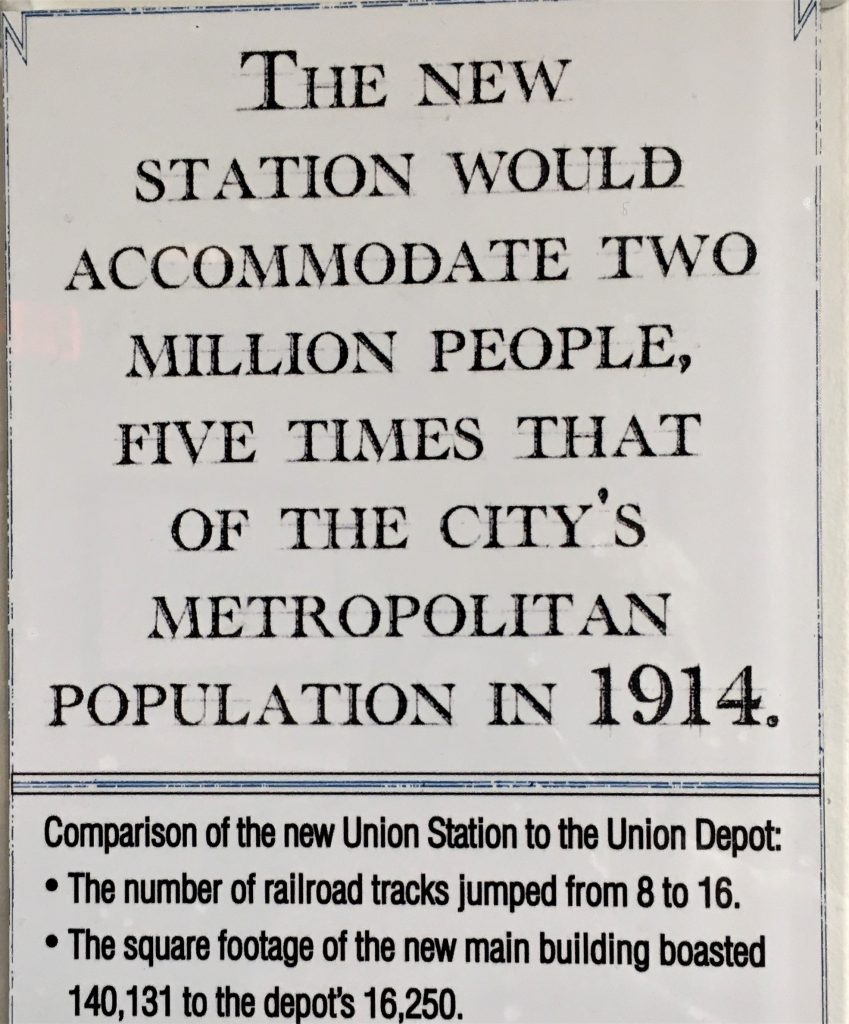

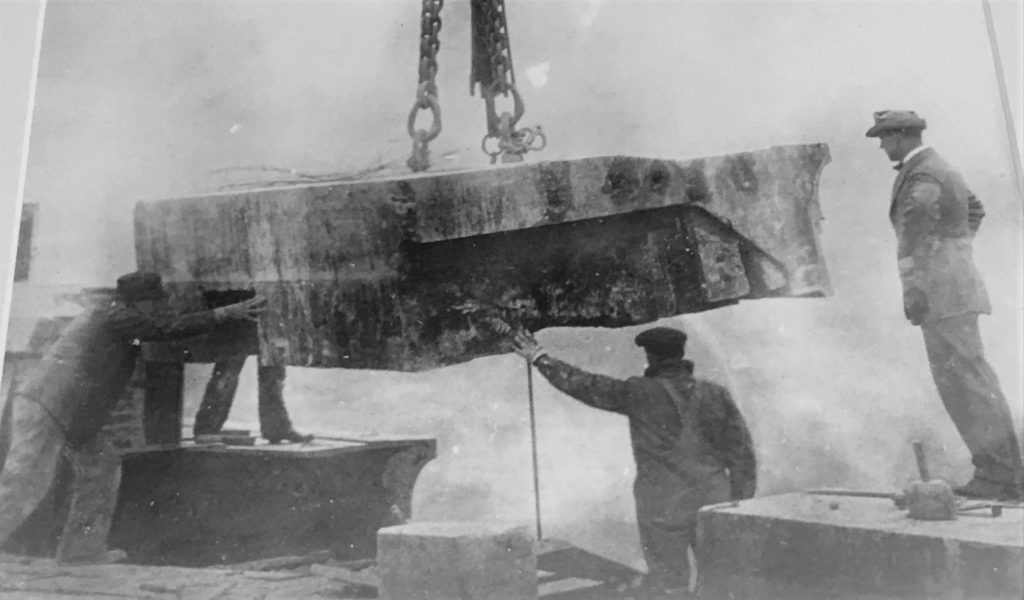
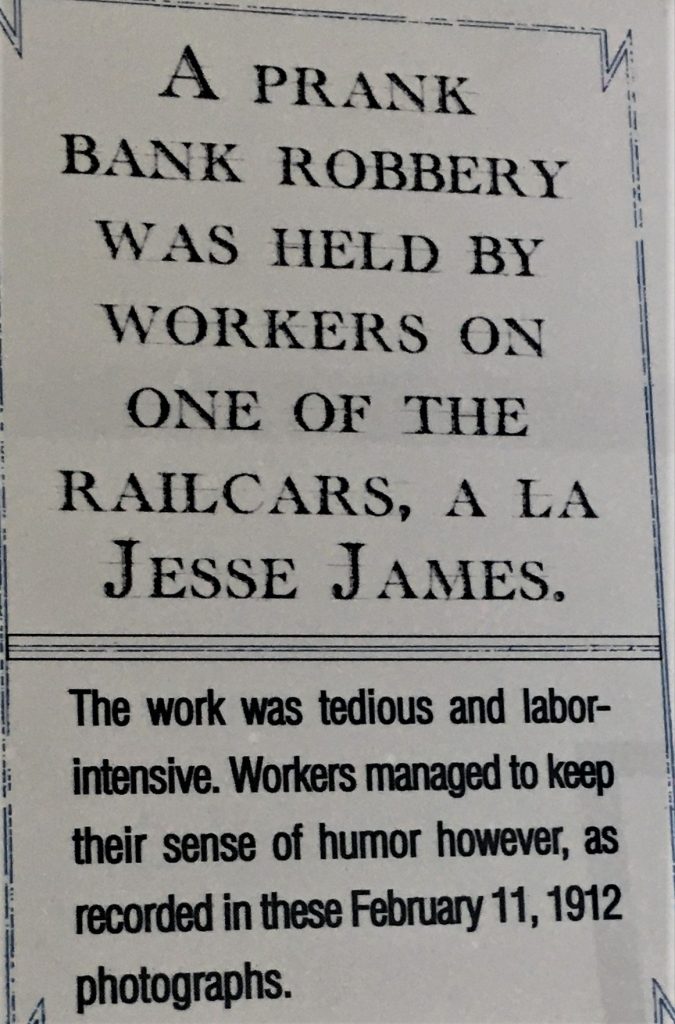
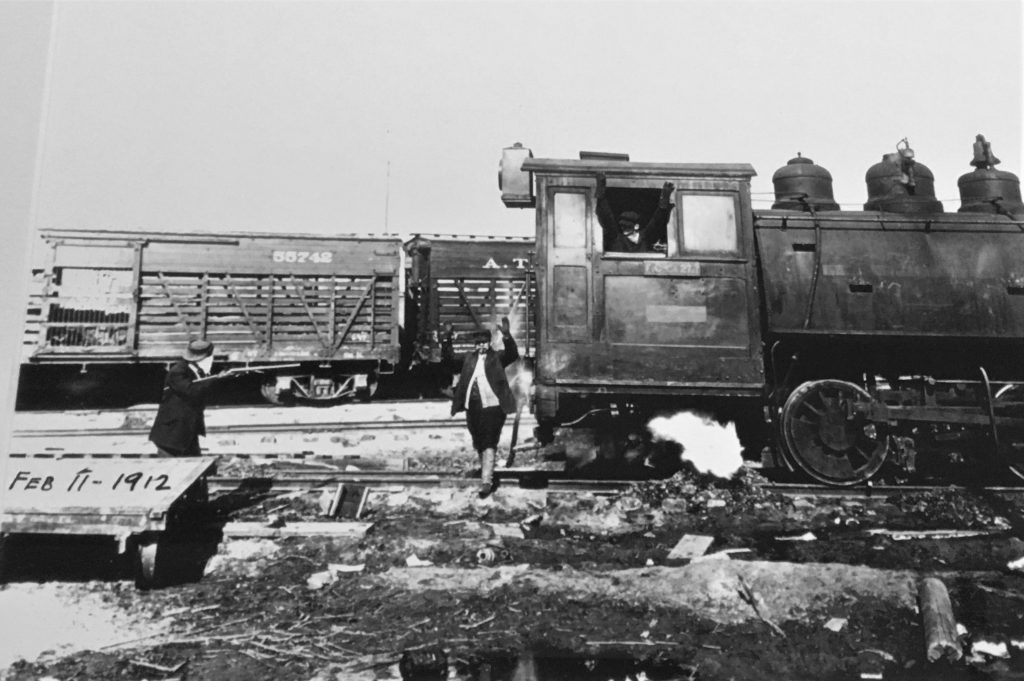
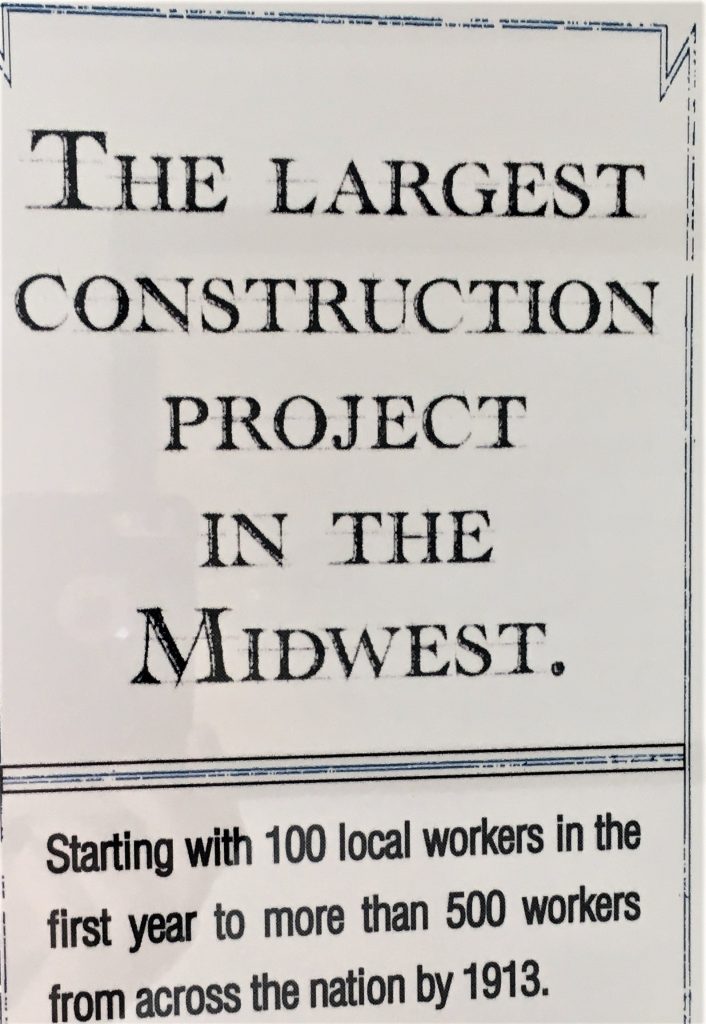

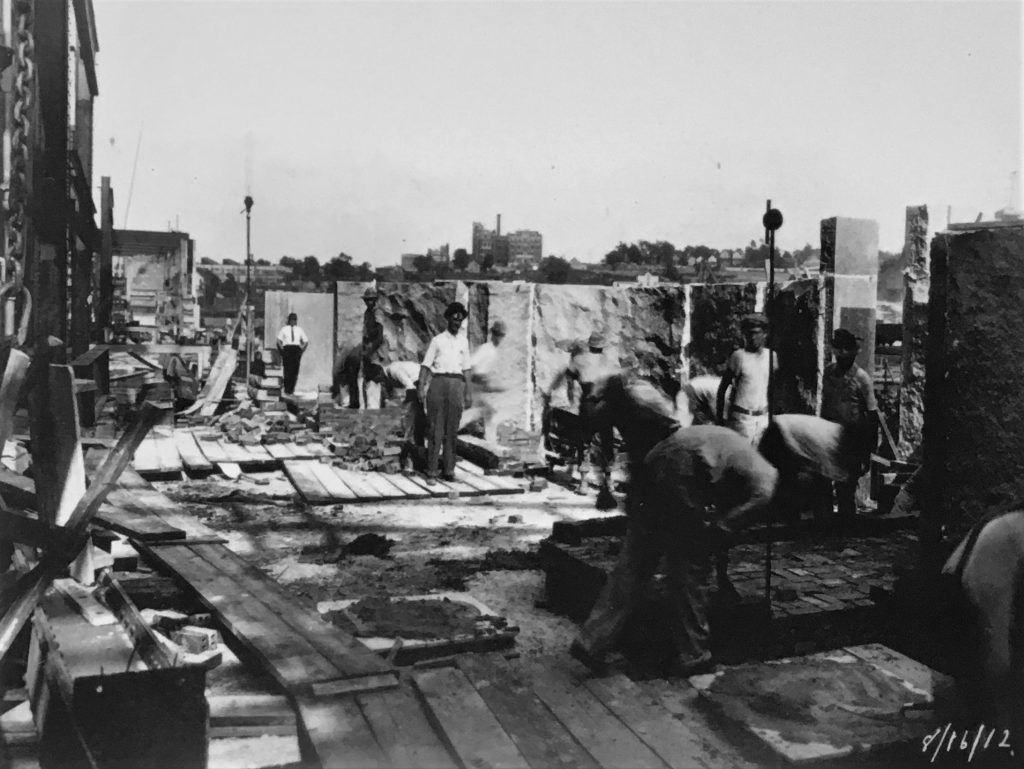
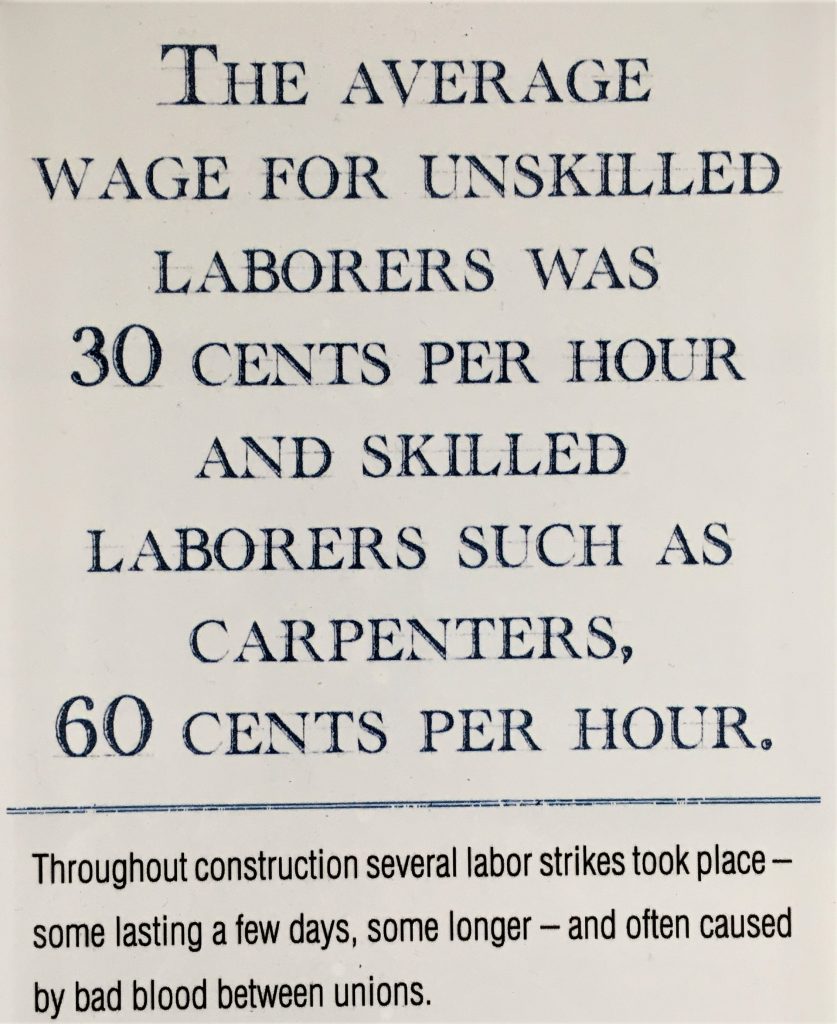
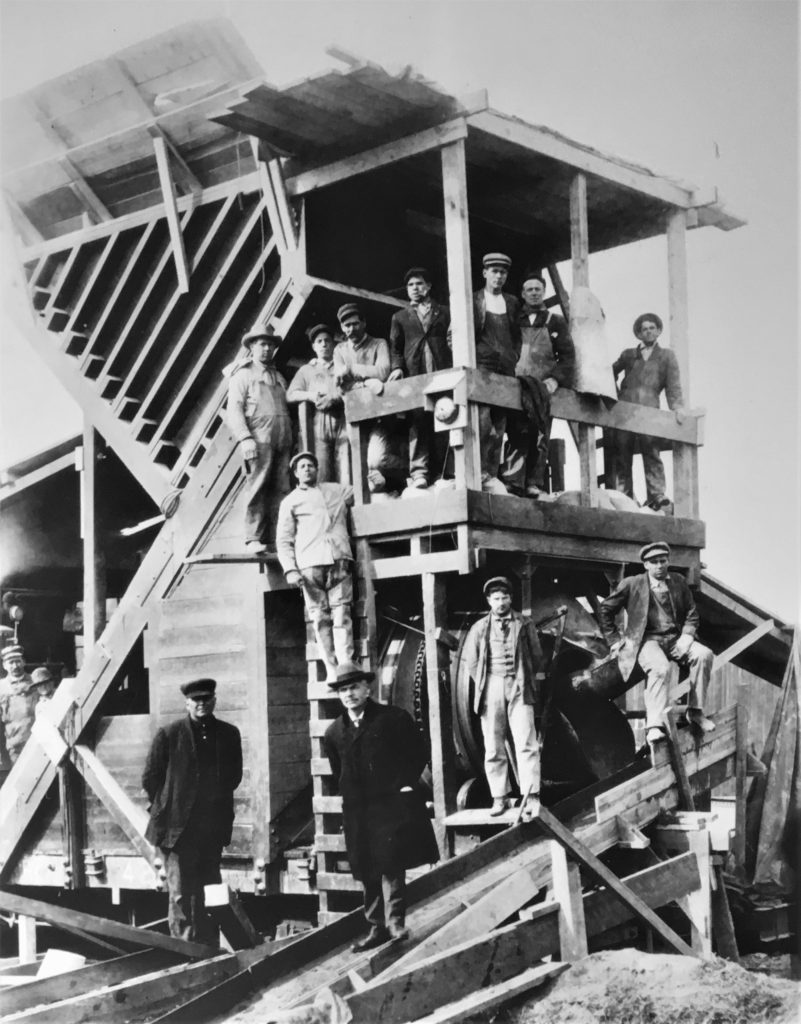
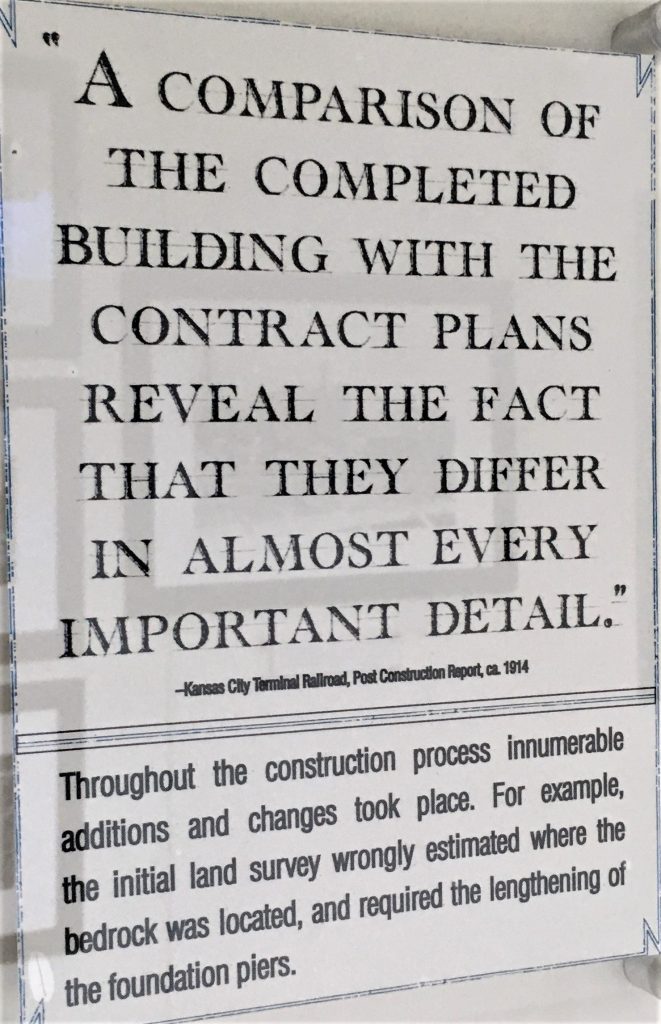
but this was a lot!
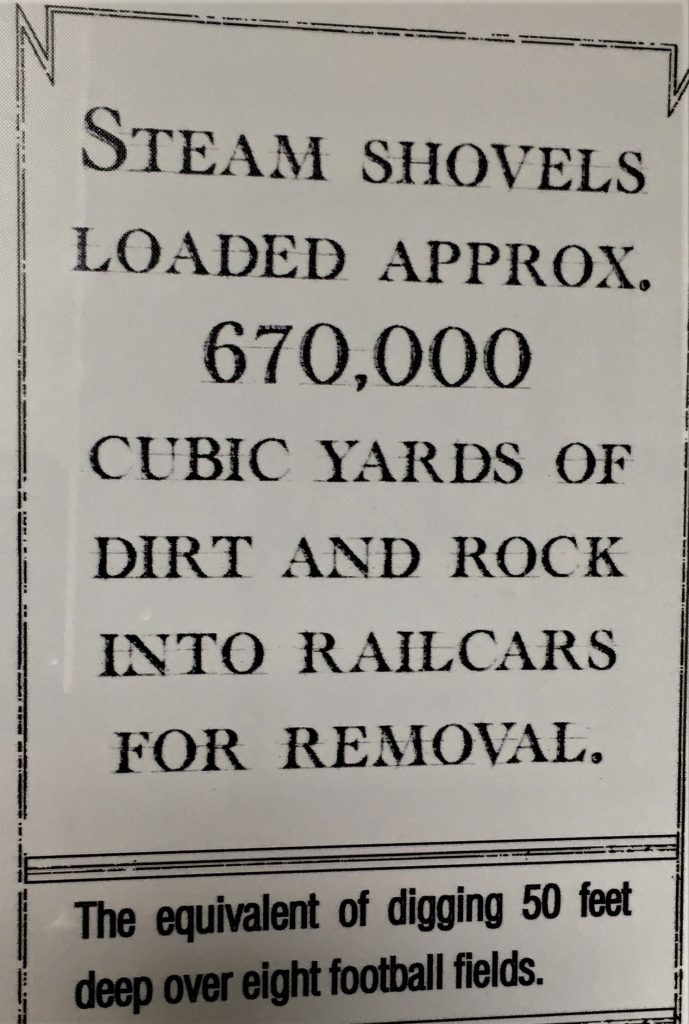
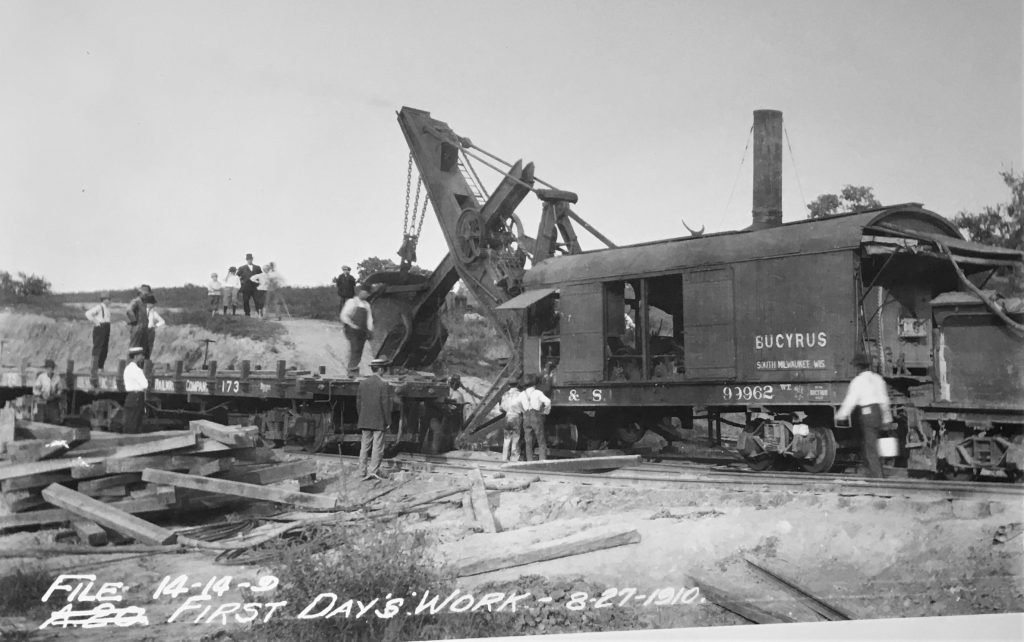
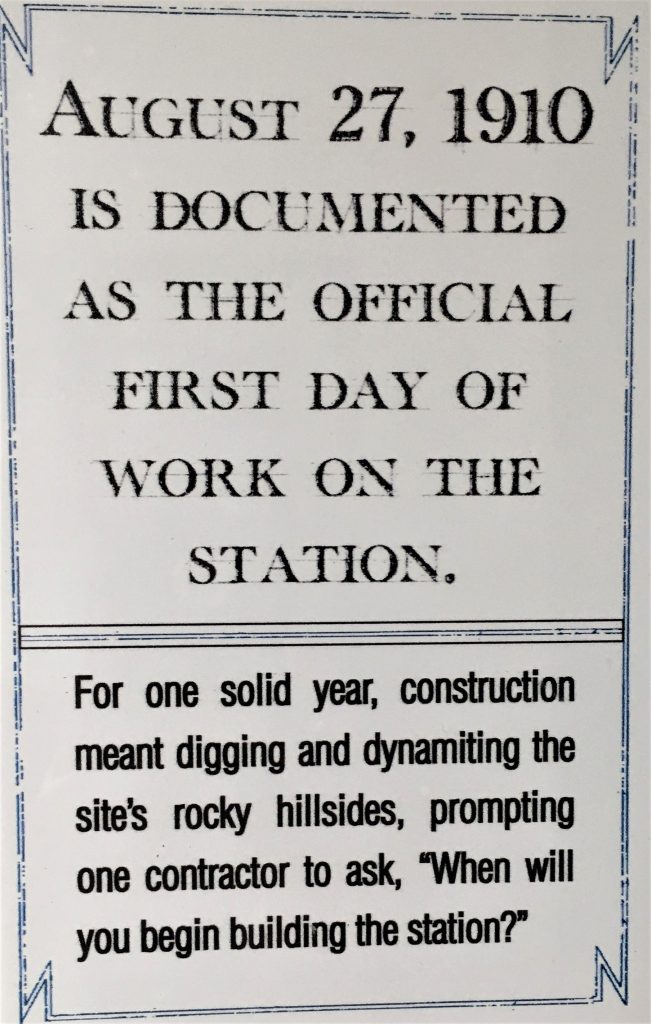
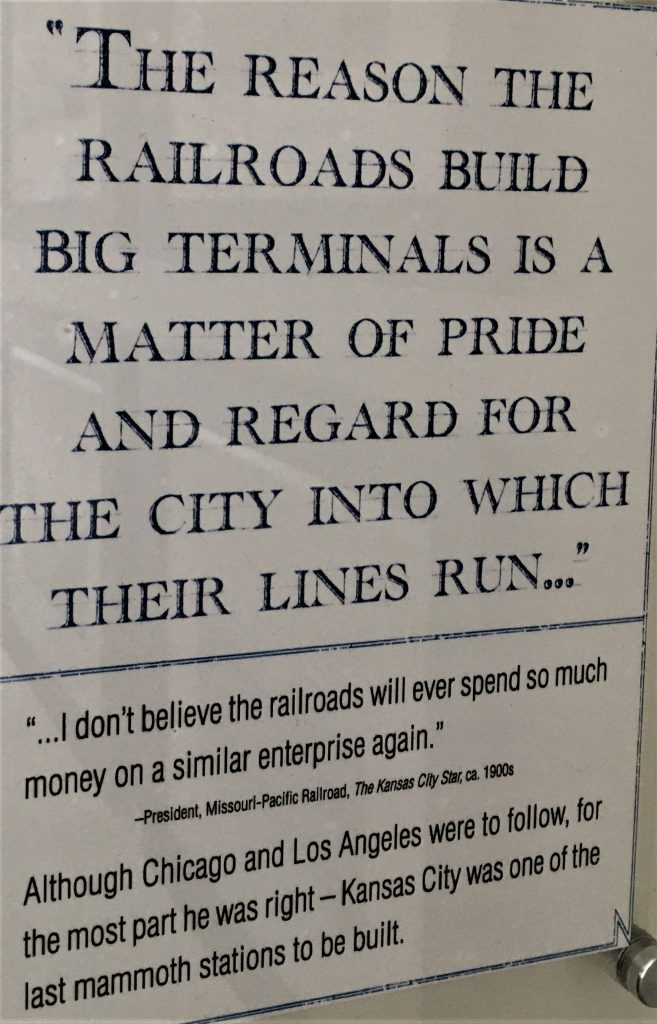

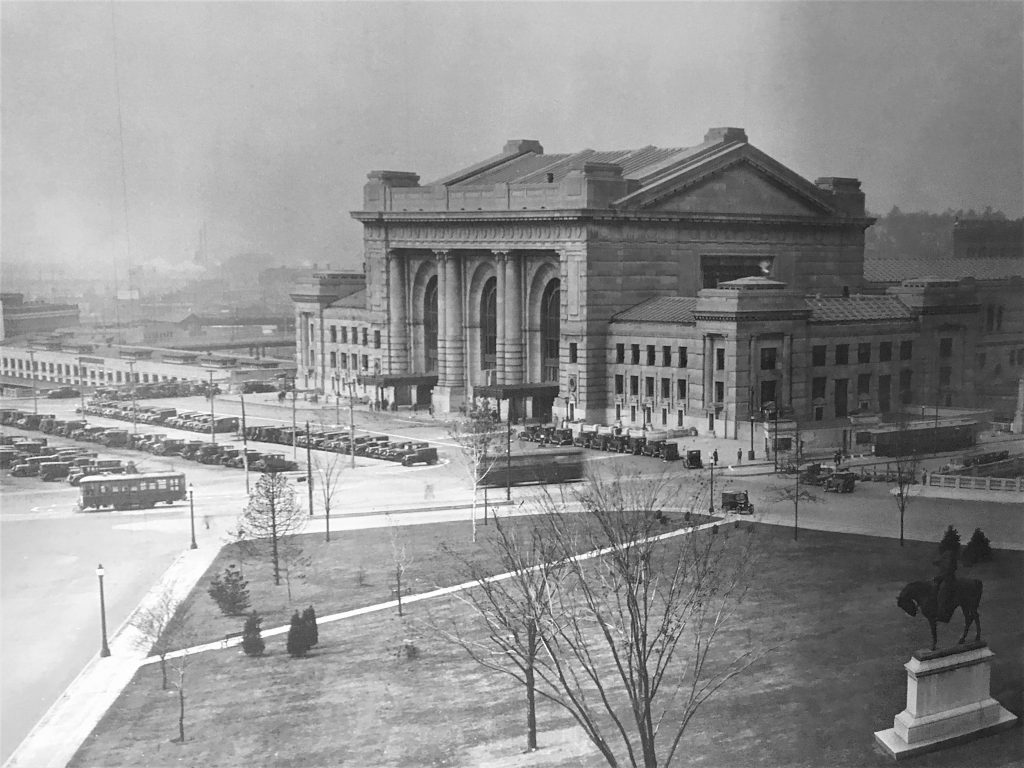
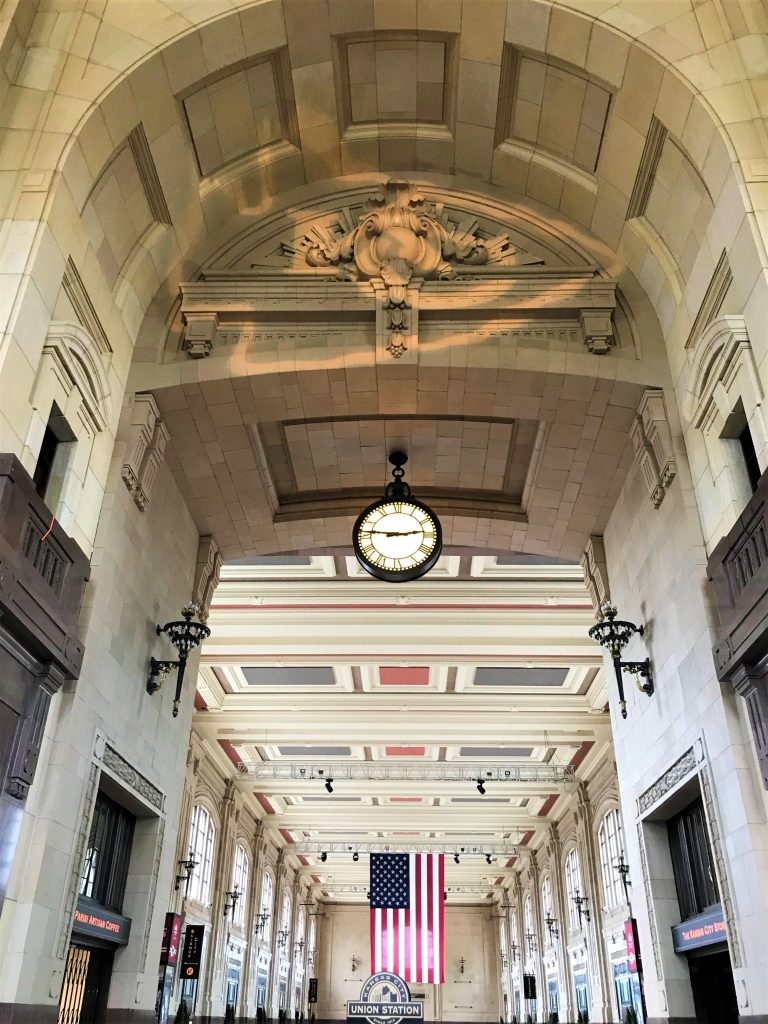
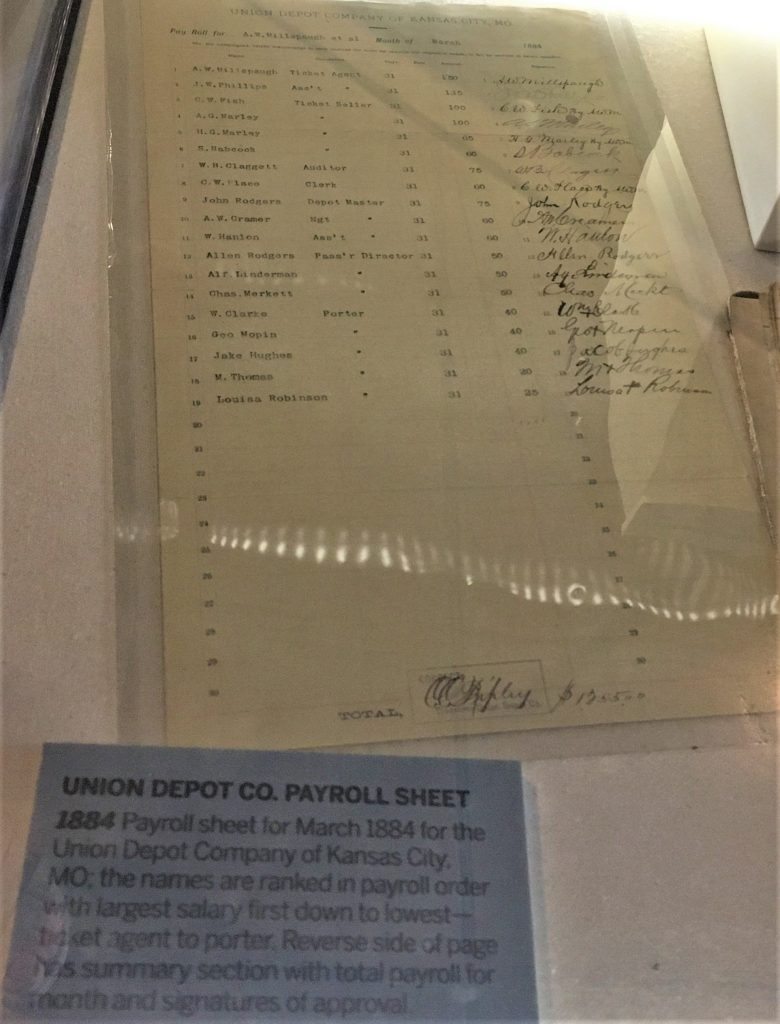
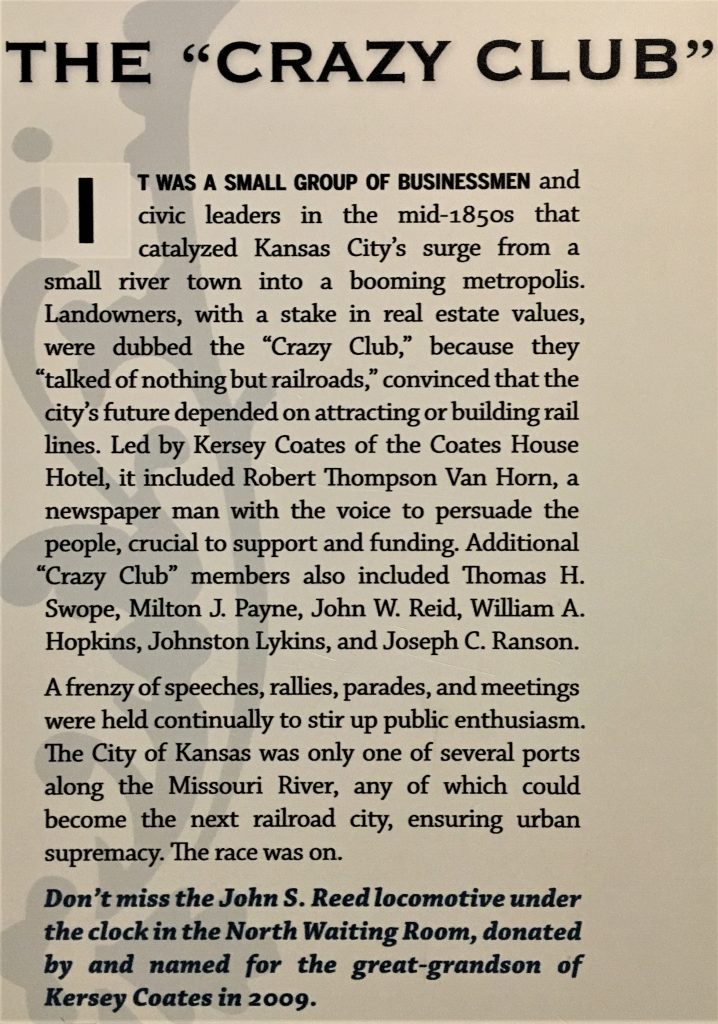
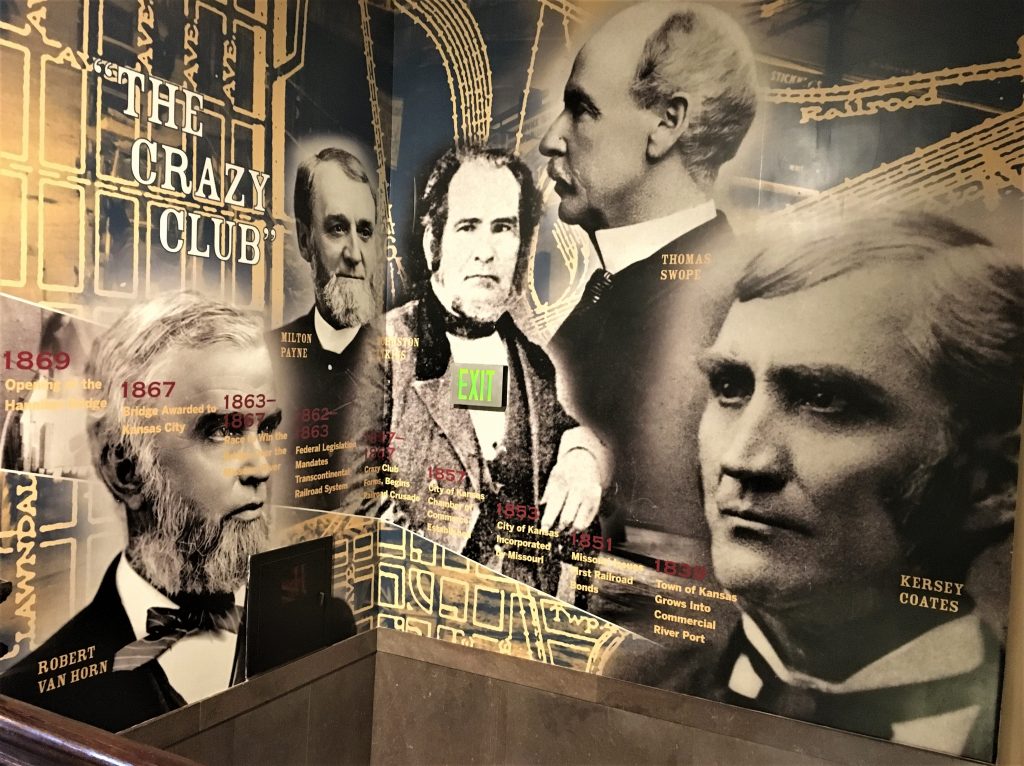
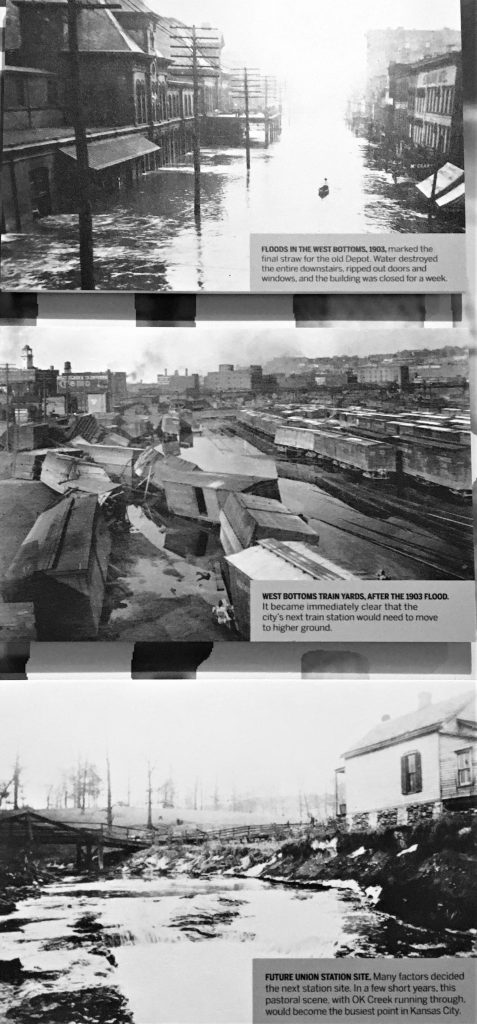
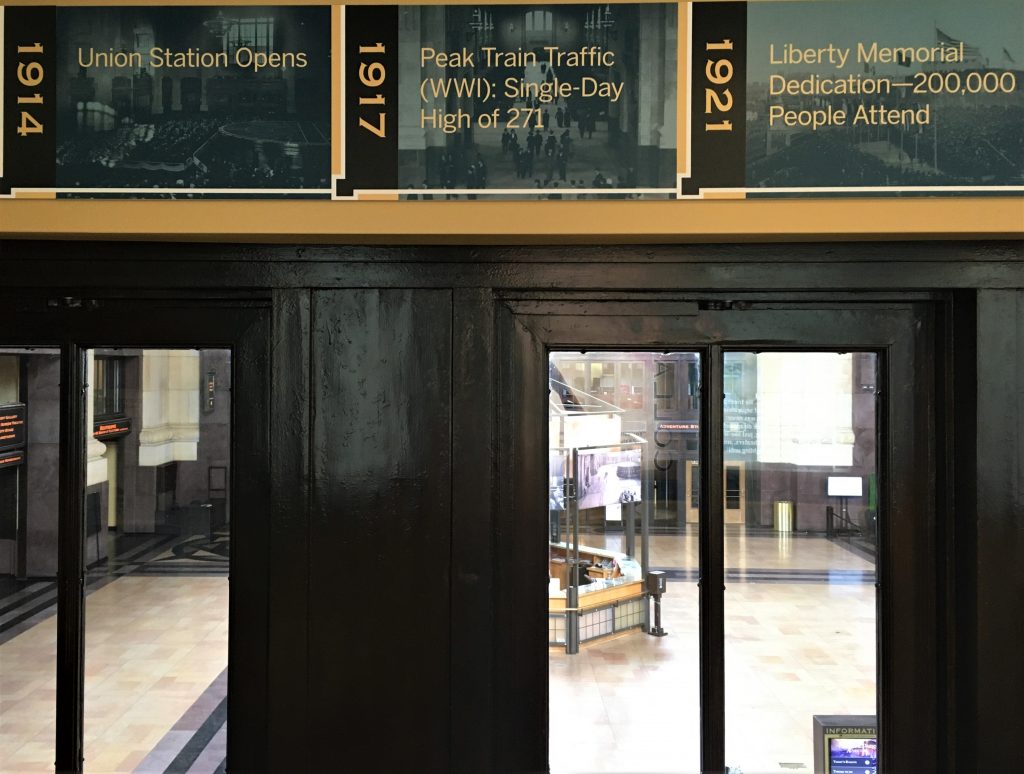
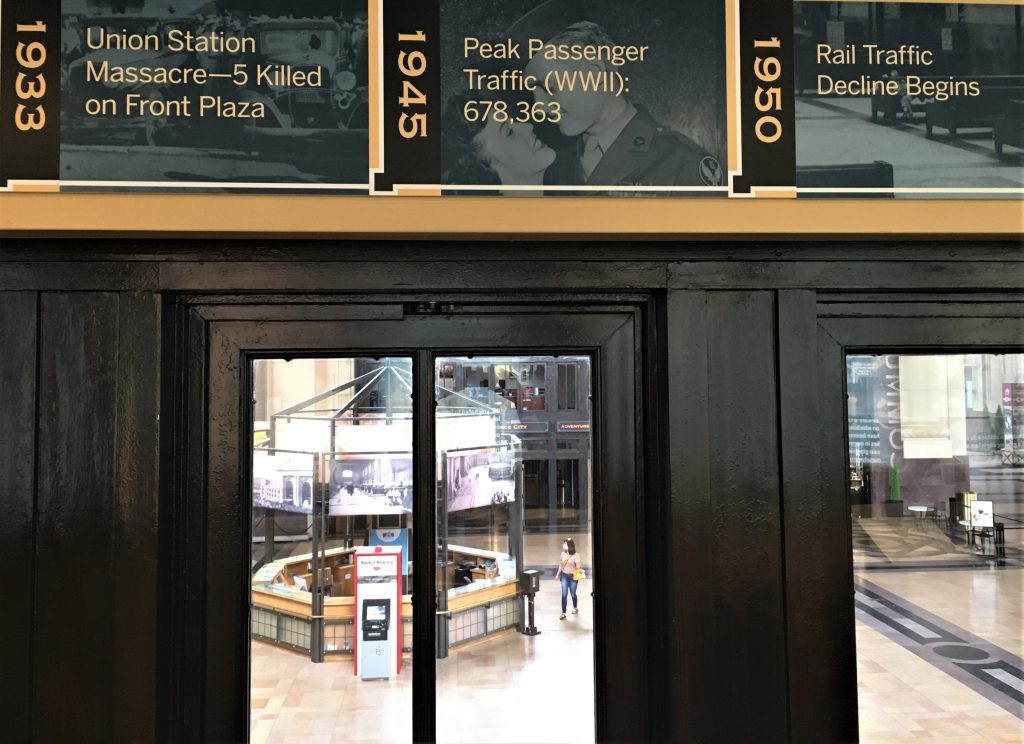
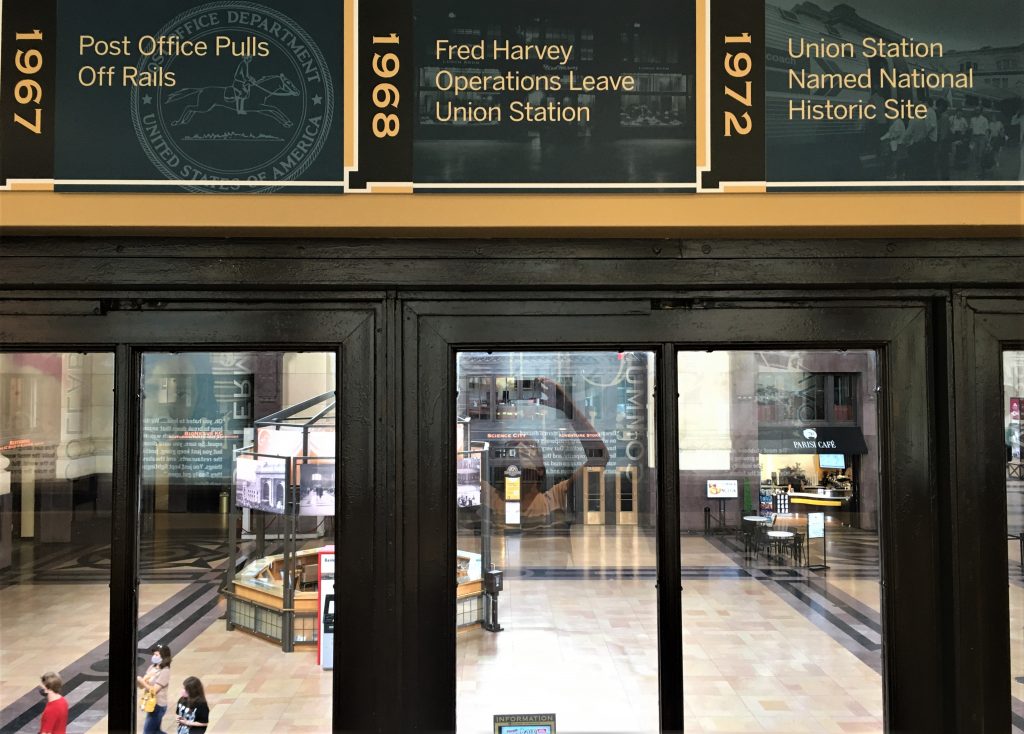
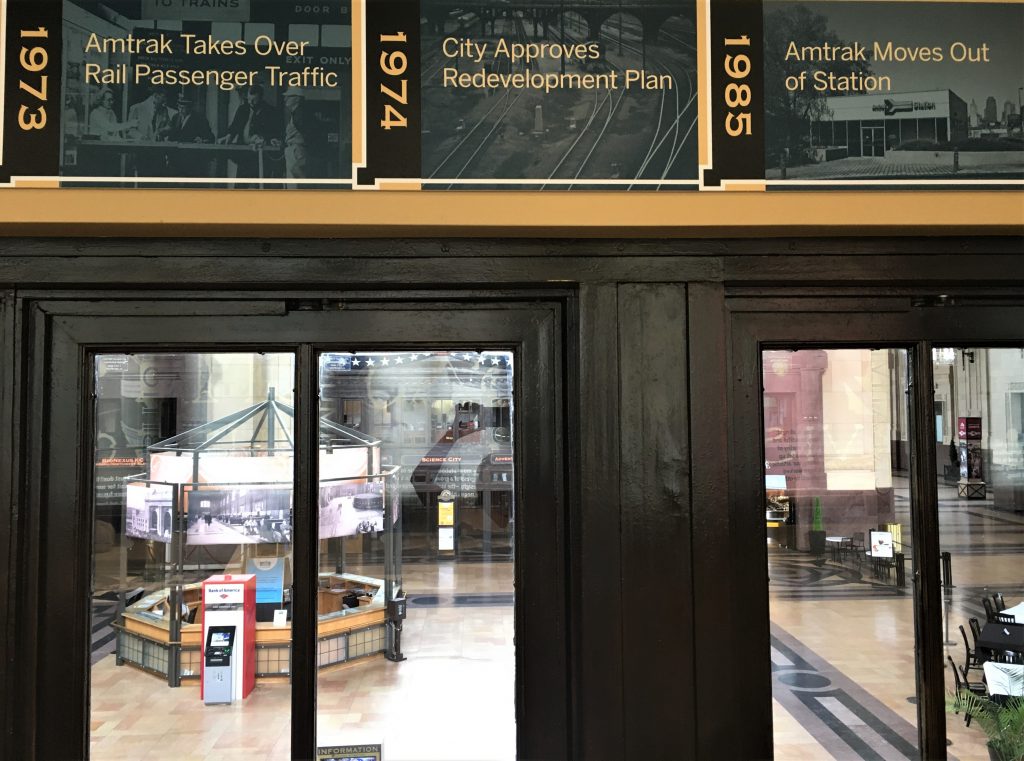

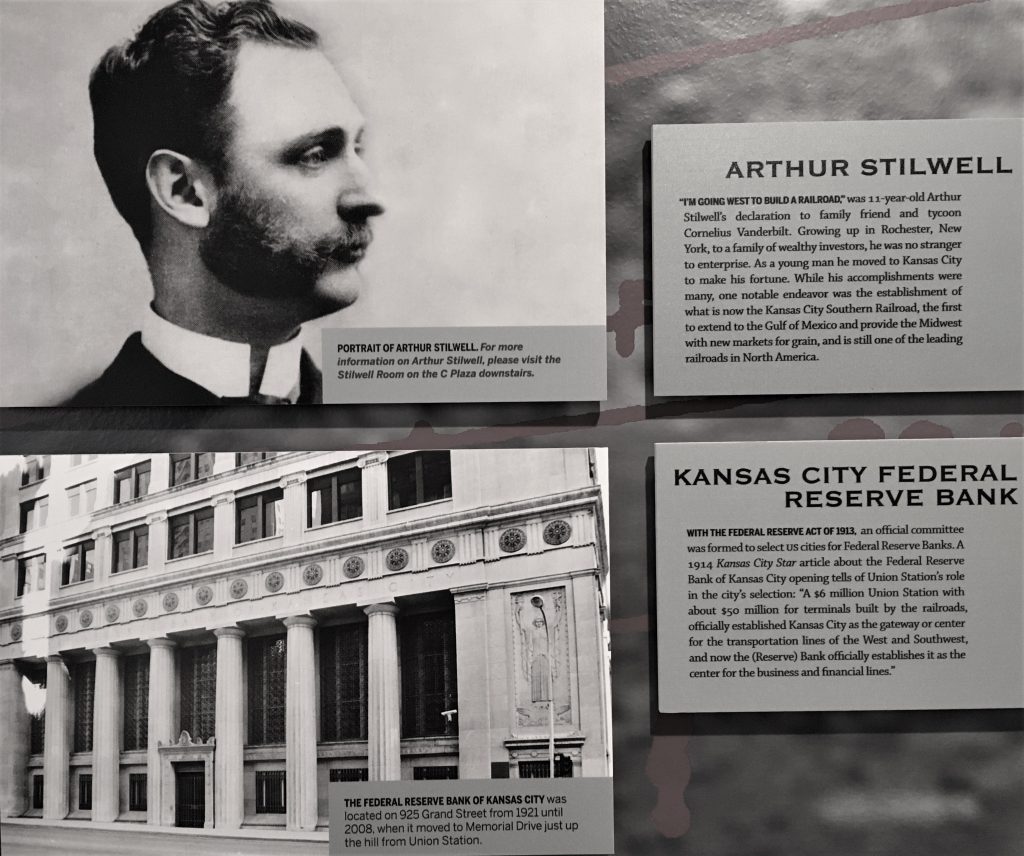
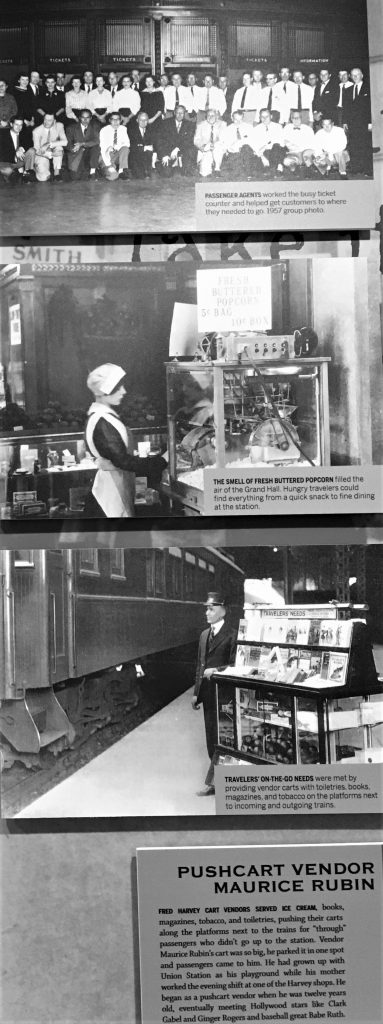
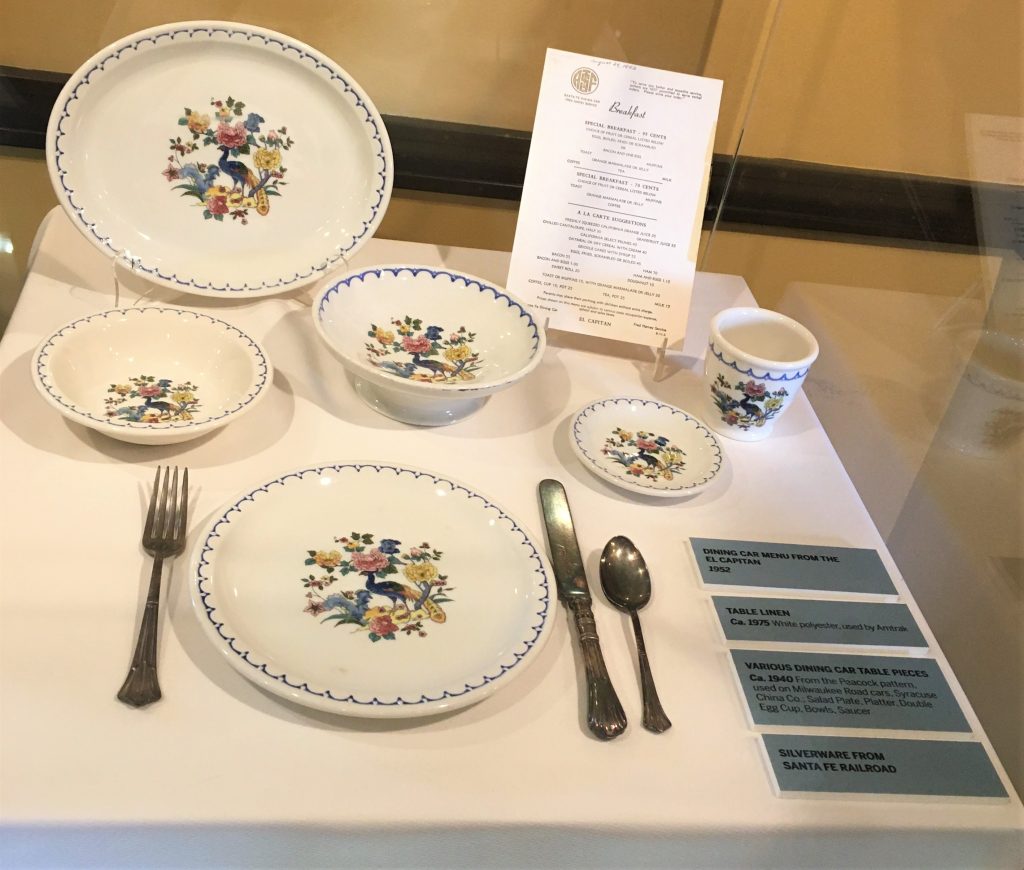
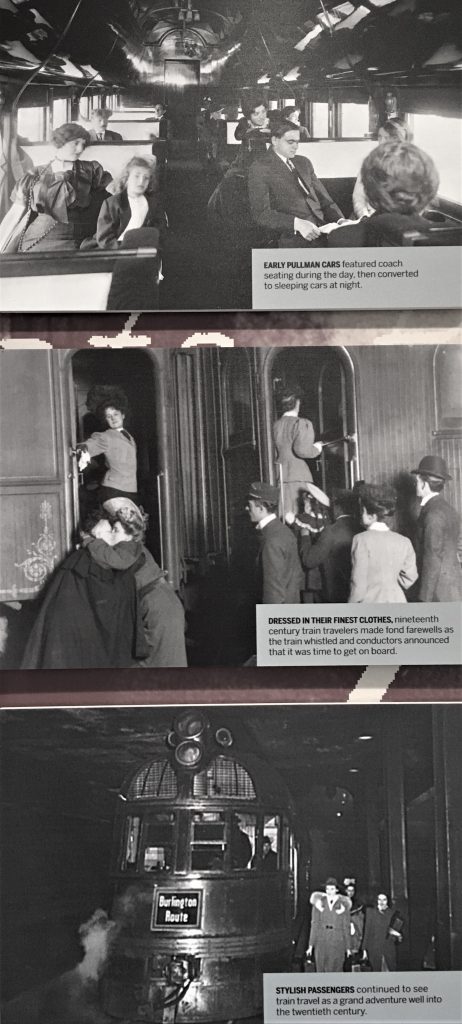
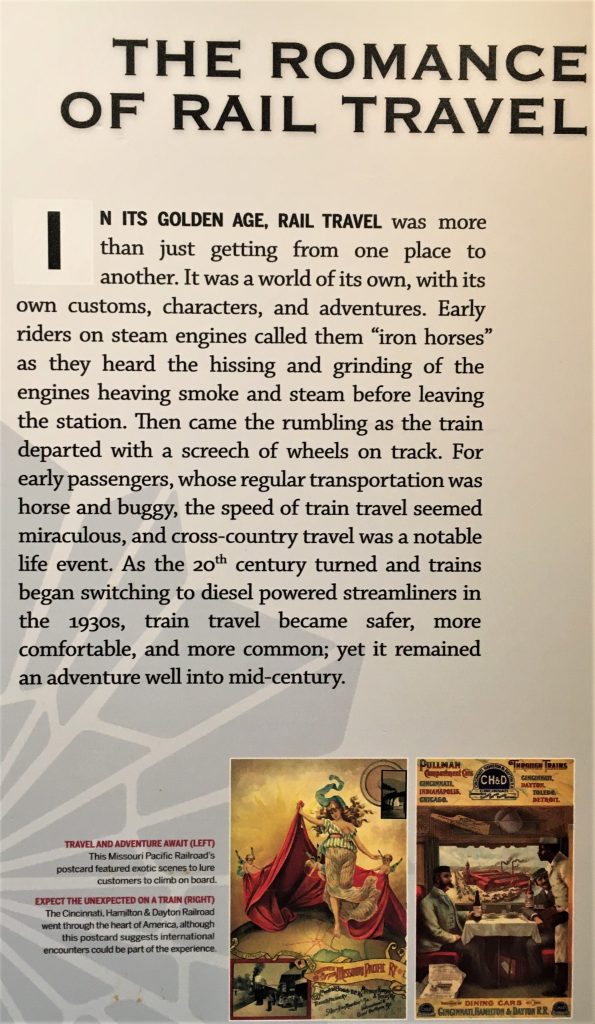

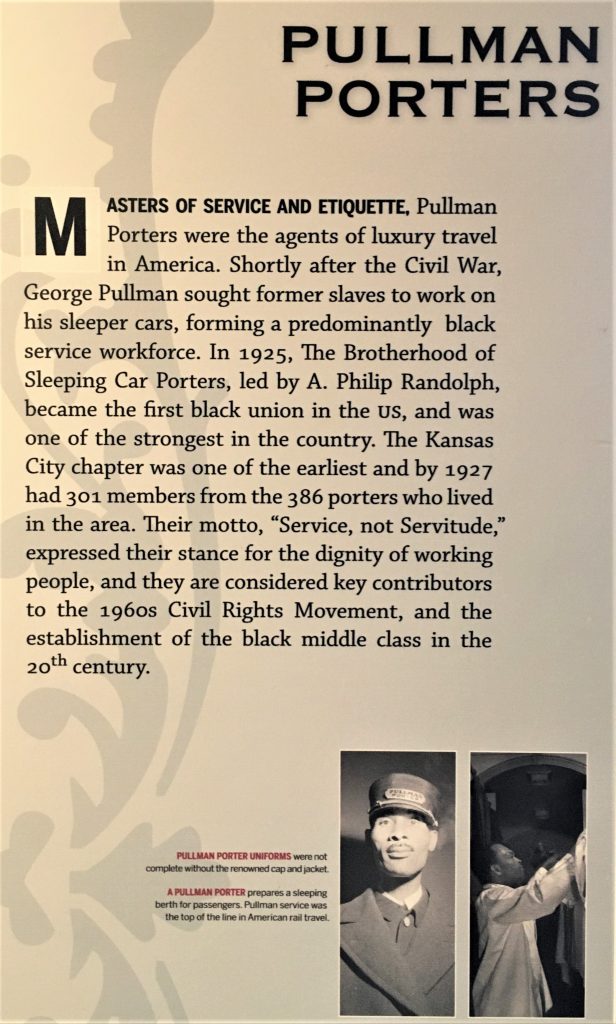
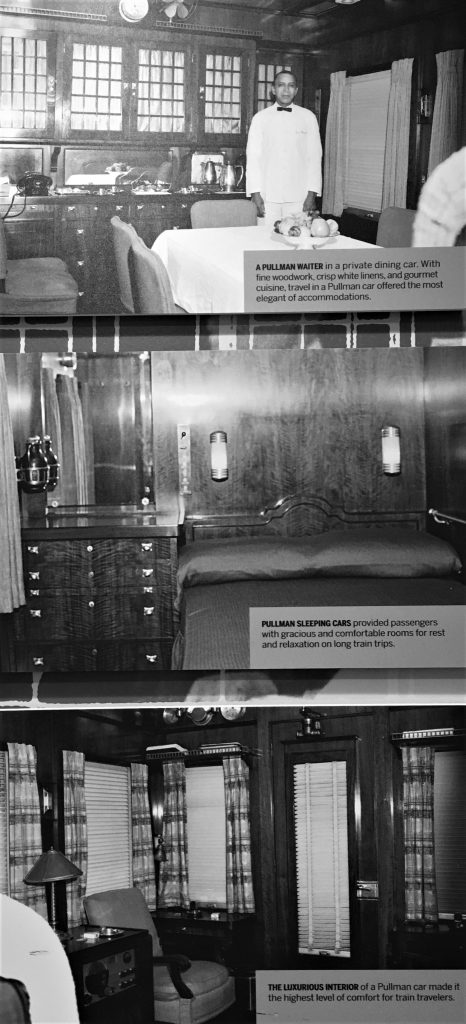
We came across another Harvey history section . . .
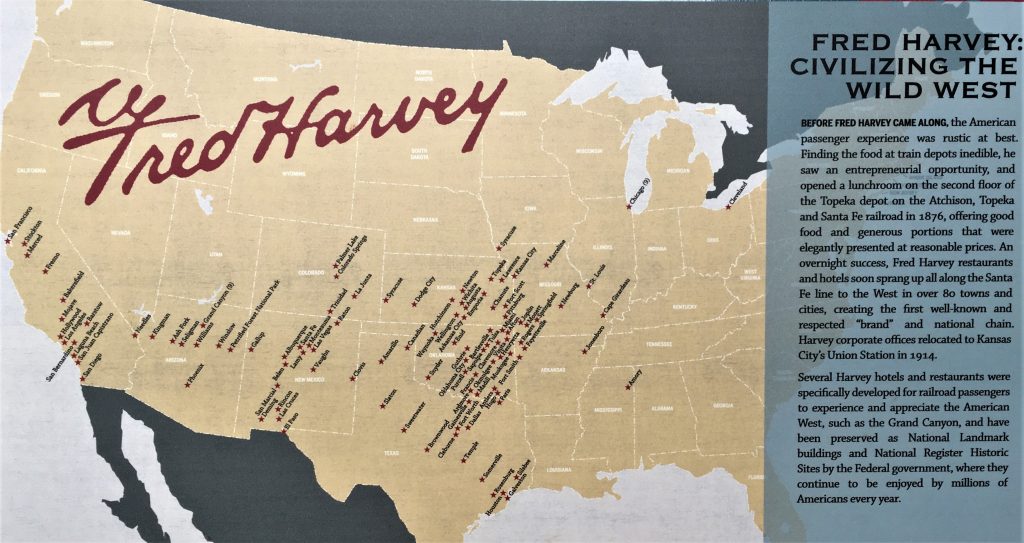
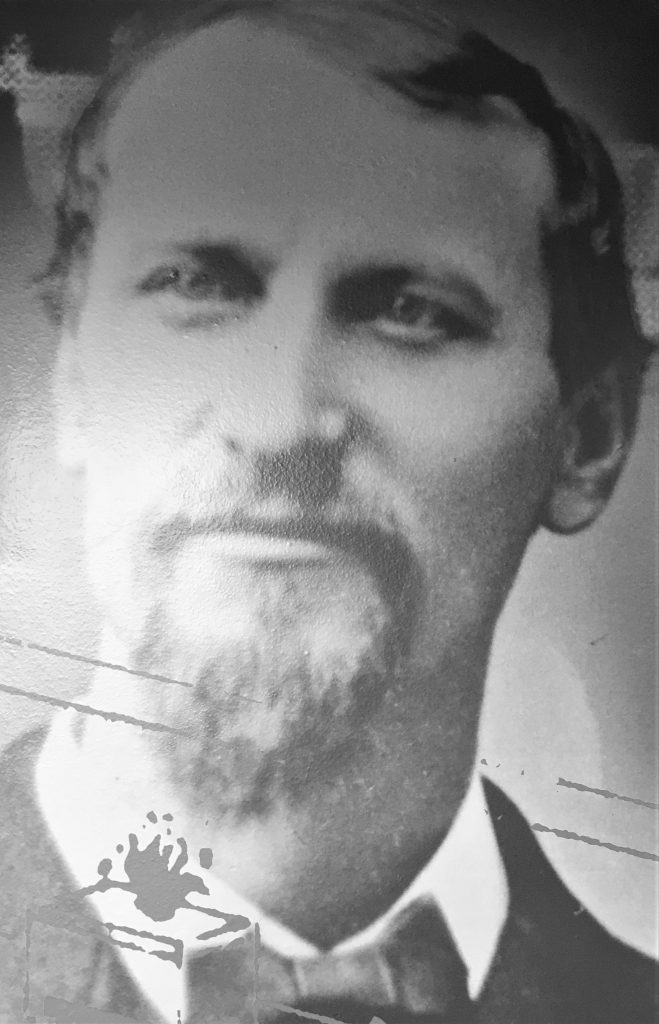
He set the standard for quality food and service, and demanded his patrons also behave and dress decently.
If they didn’t, they were asked to leave and not permitted to return.
When he died at age 65, he owned 47 restaurants, 30 dining cars, and 15 hotels.
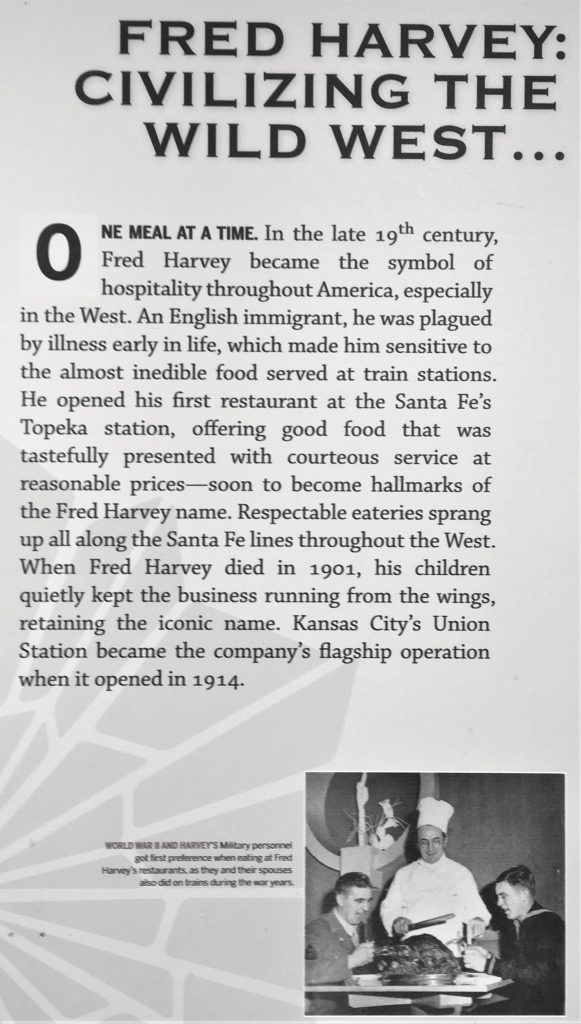

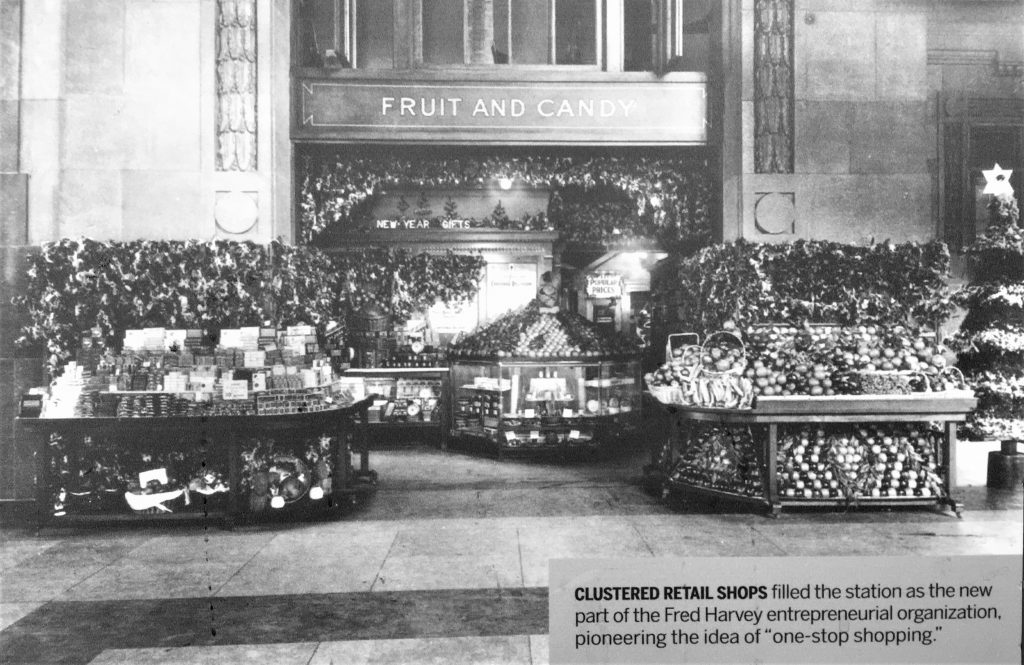
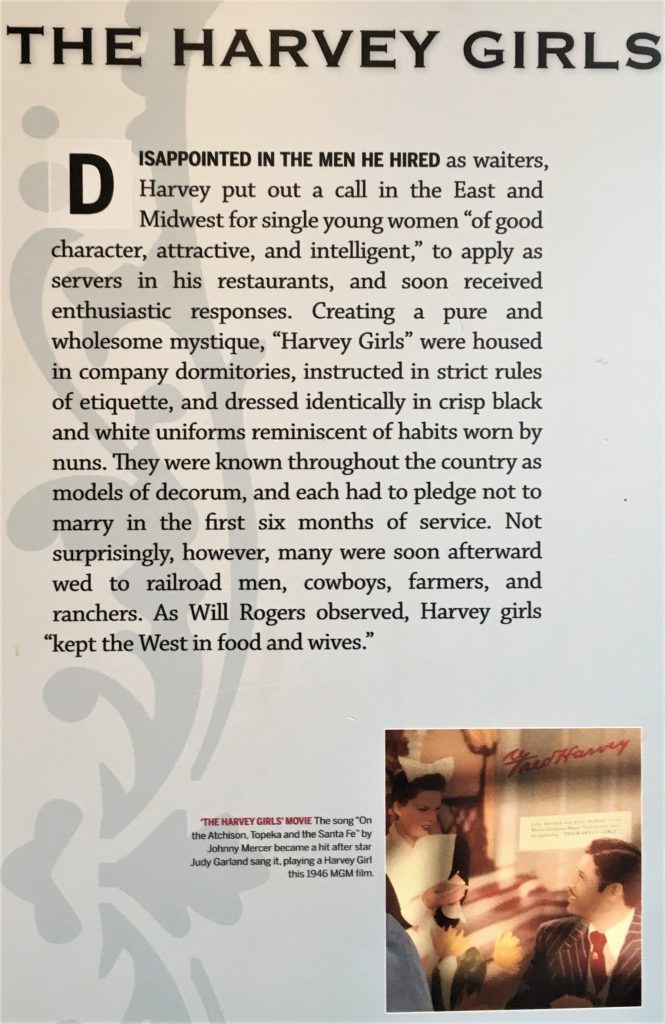

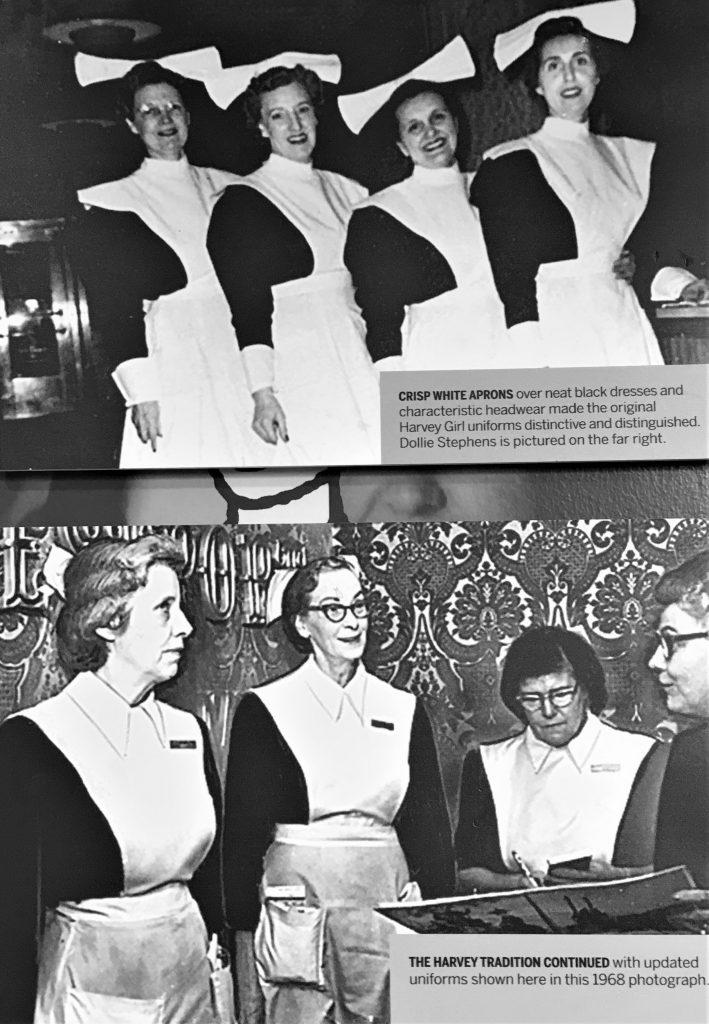
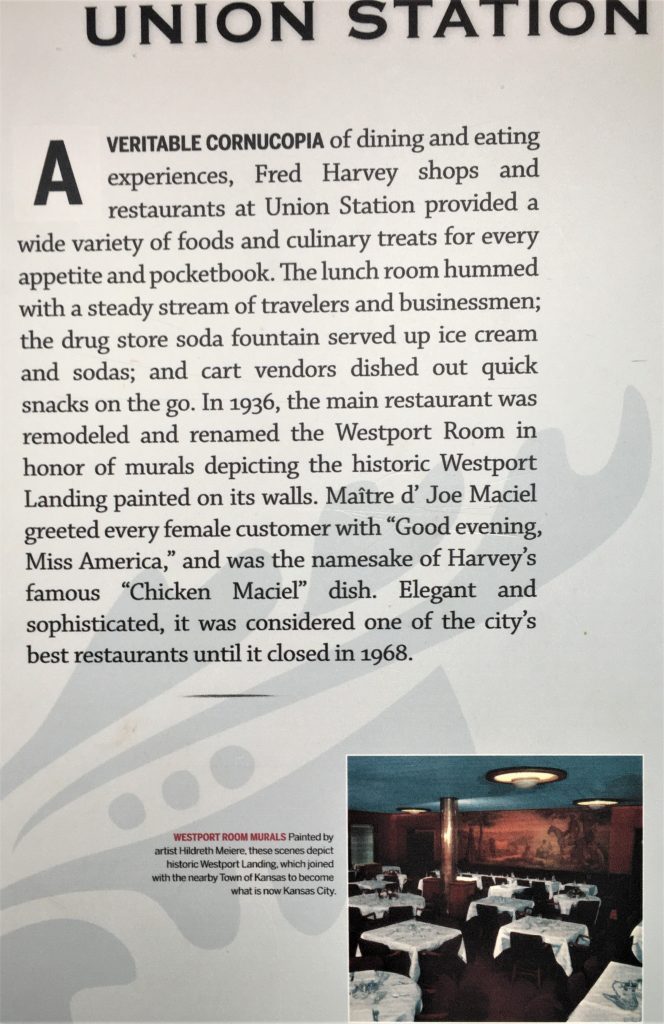
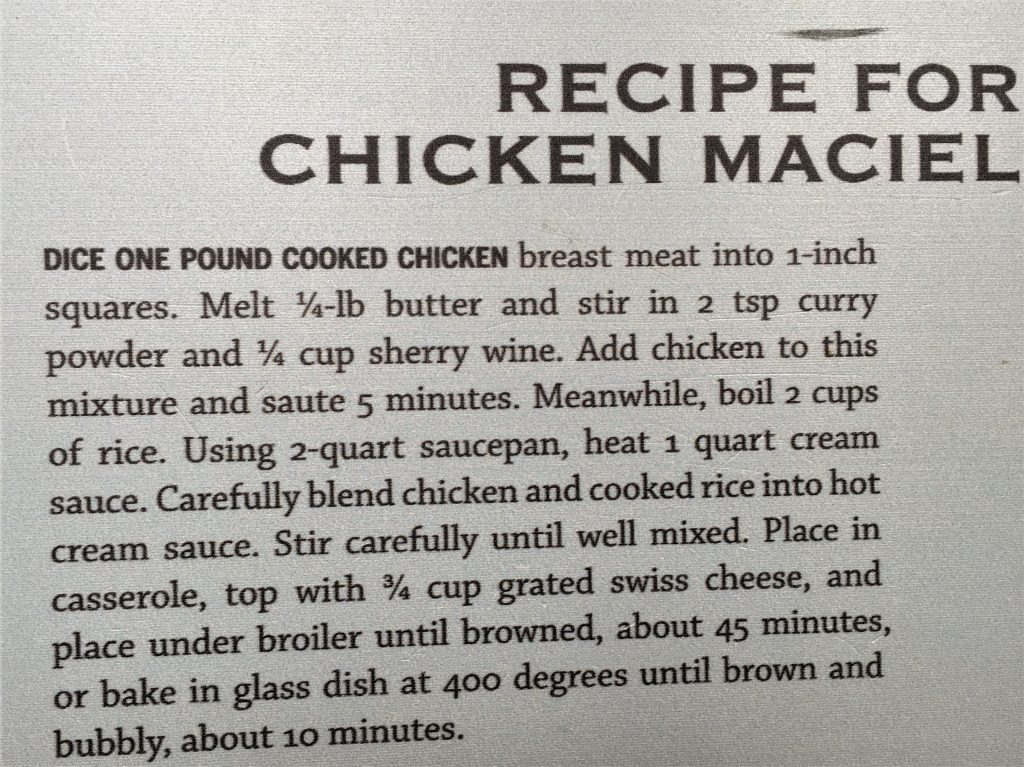
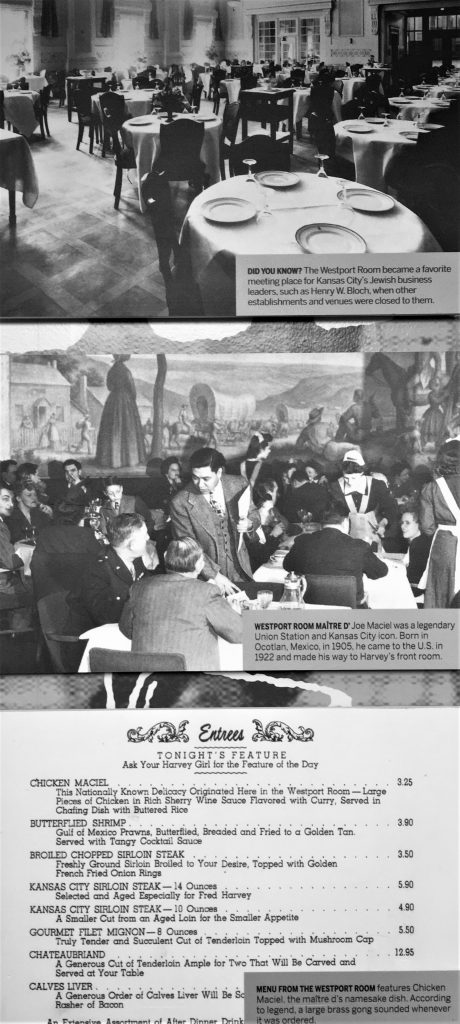

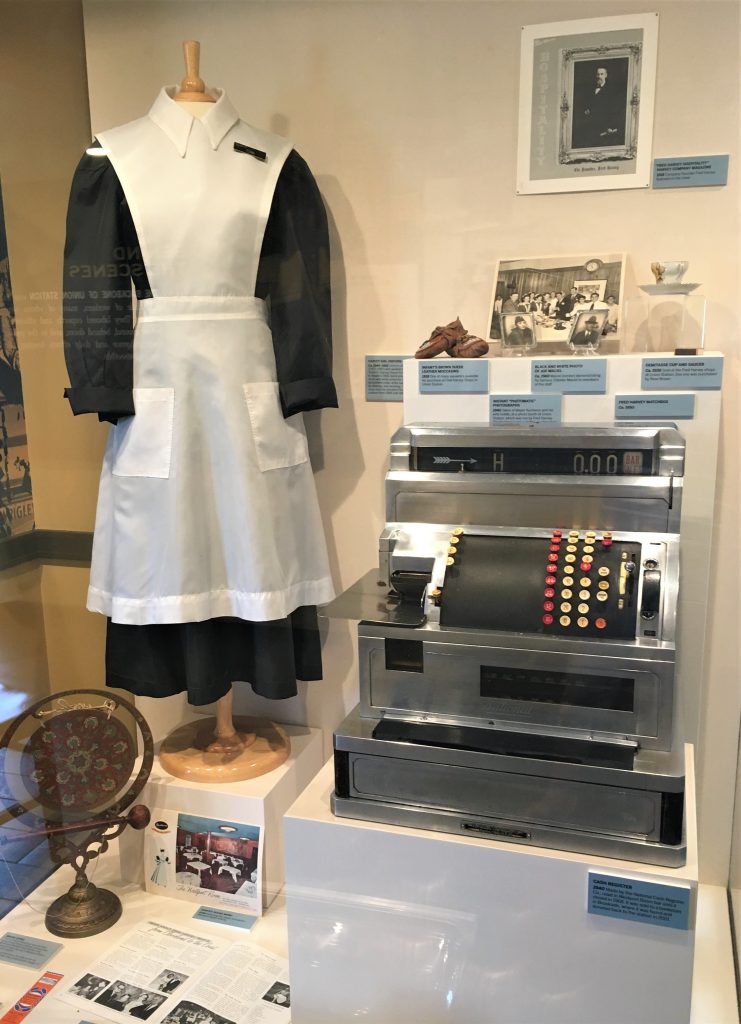
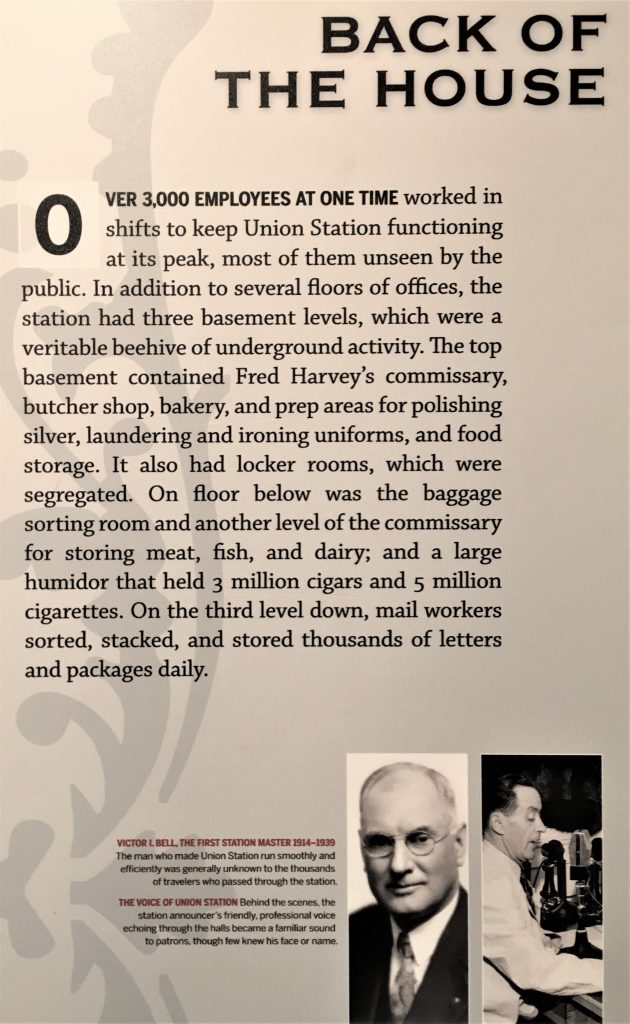
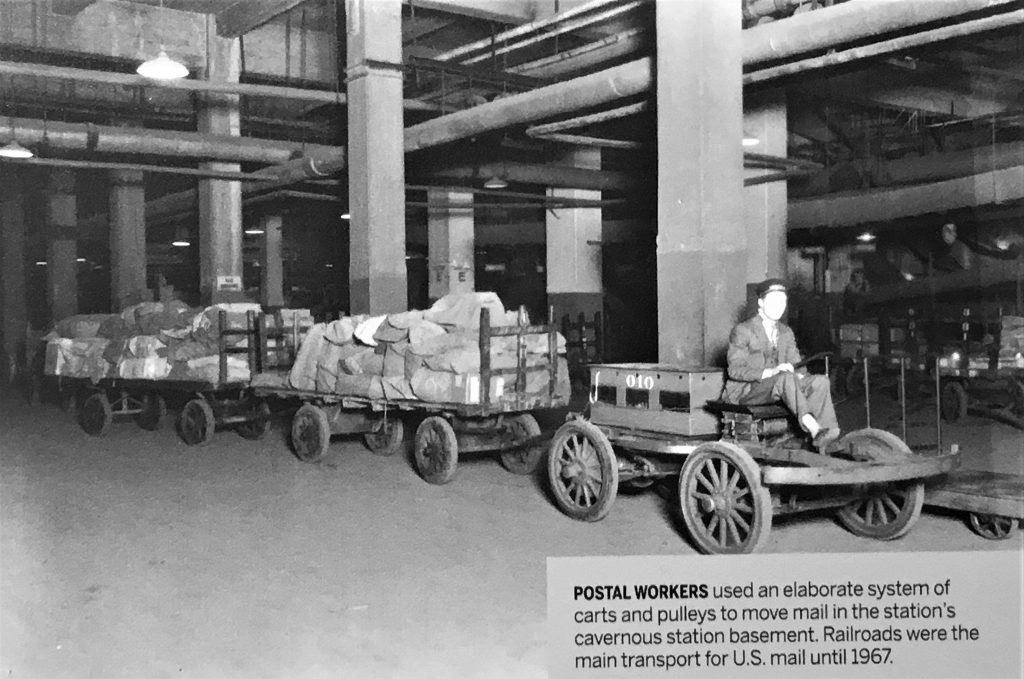
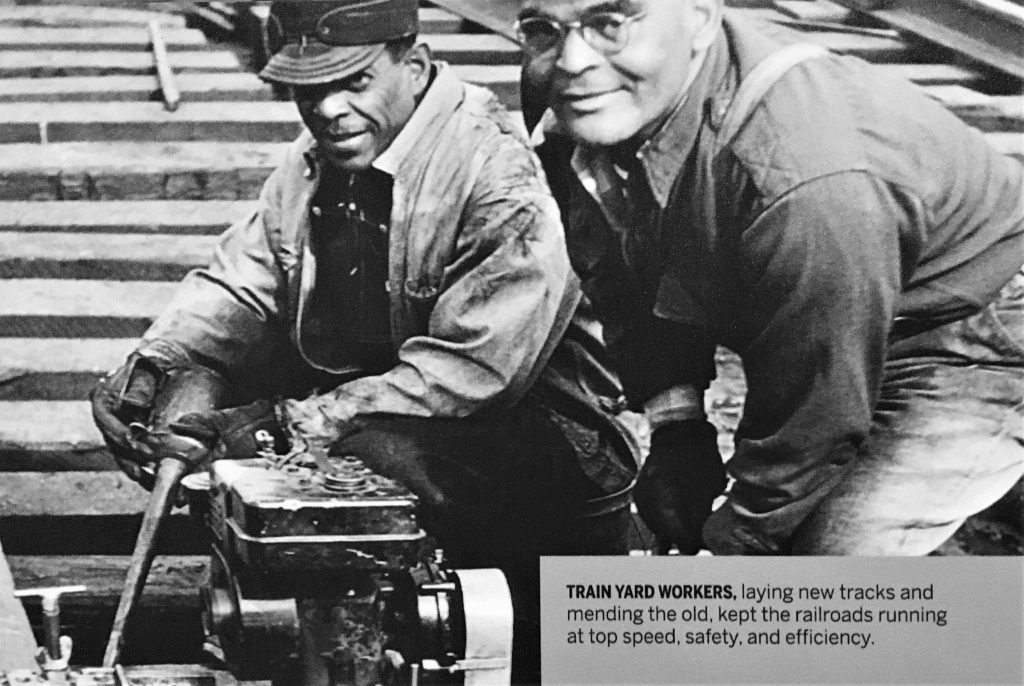
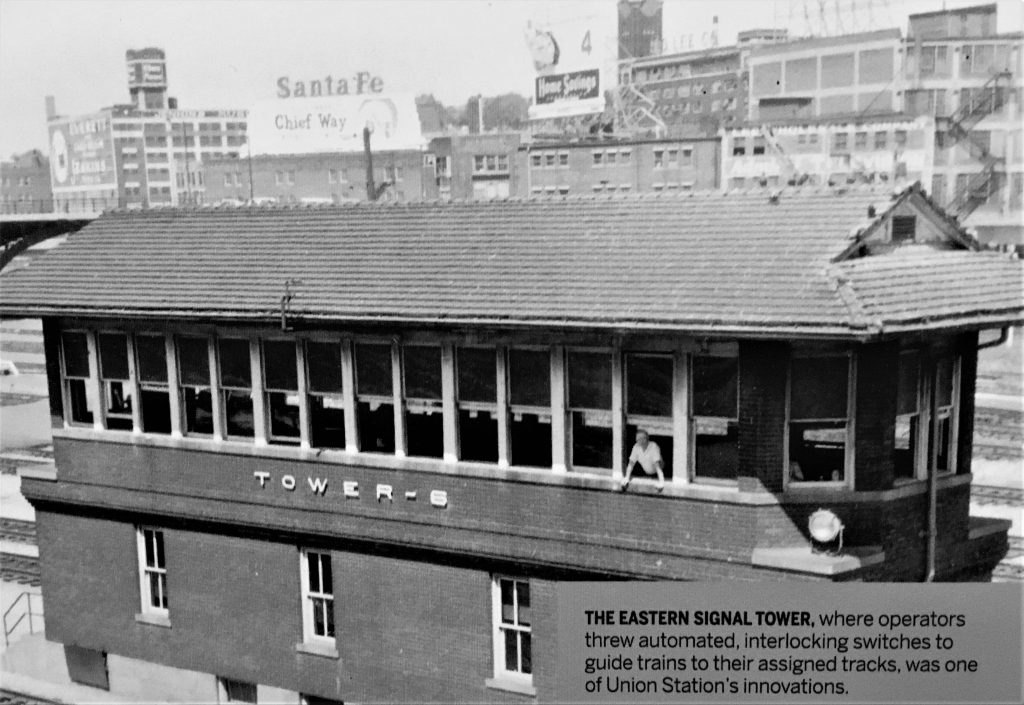
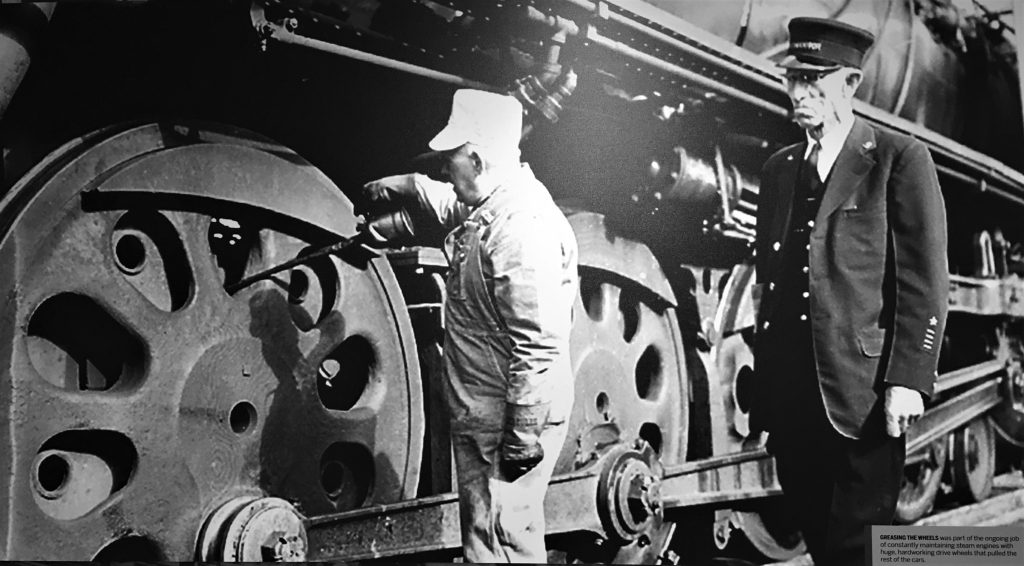
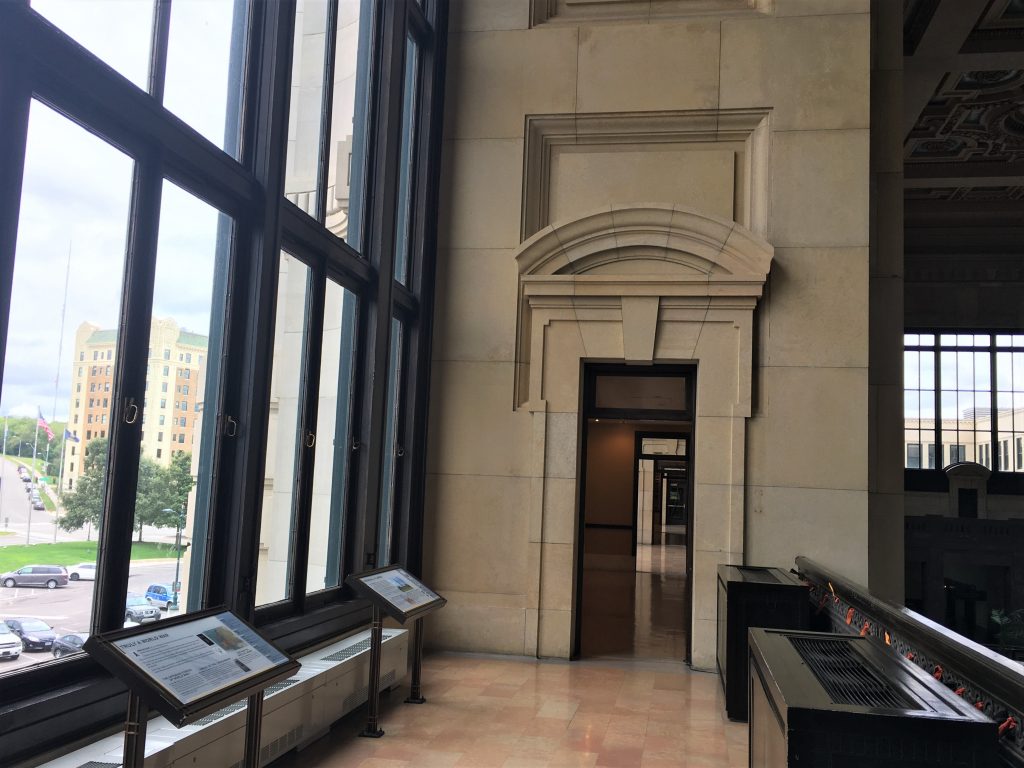
Our tour took us through that doorway.
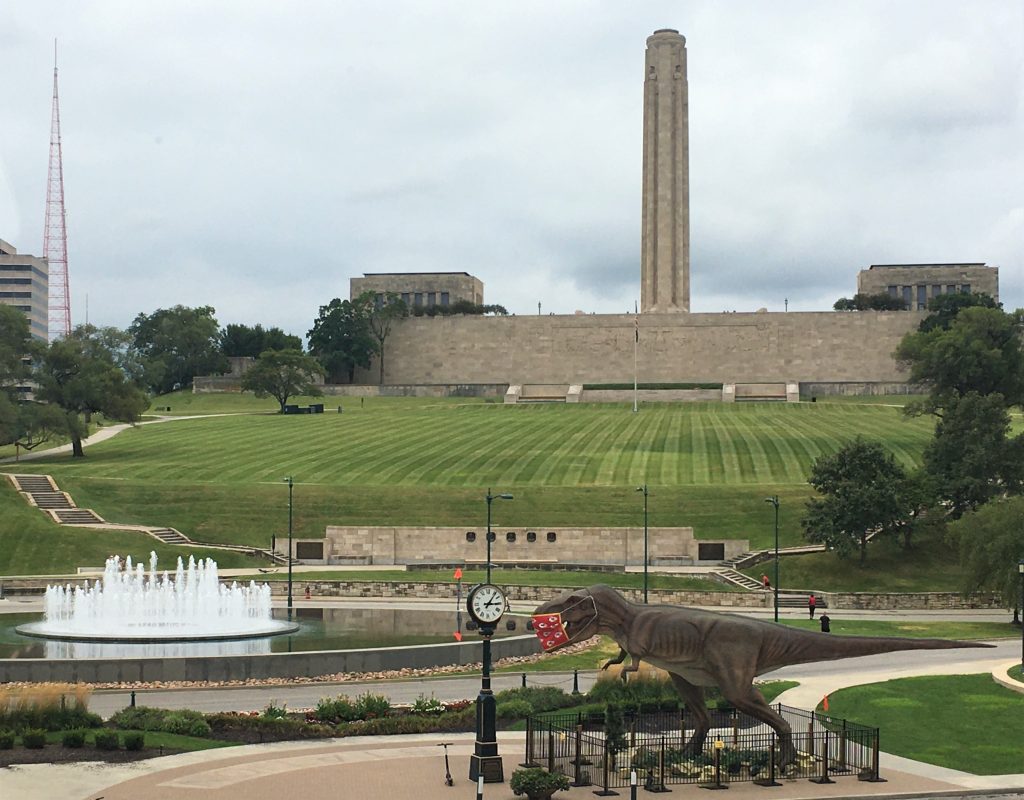
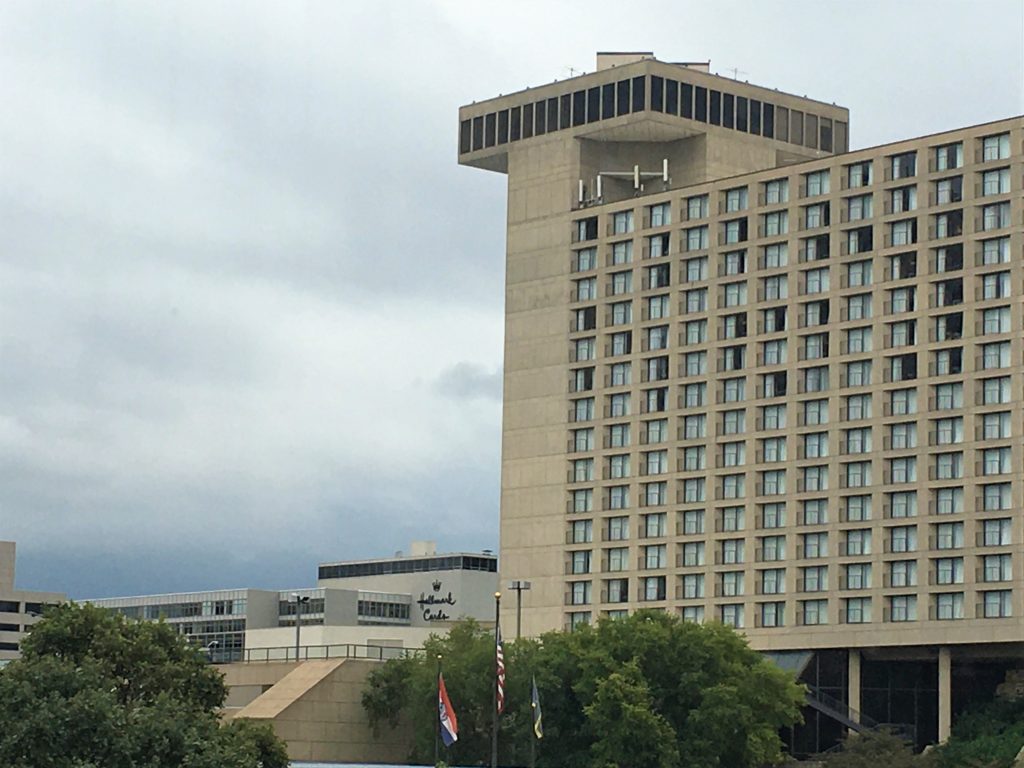
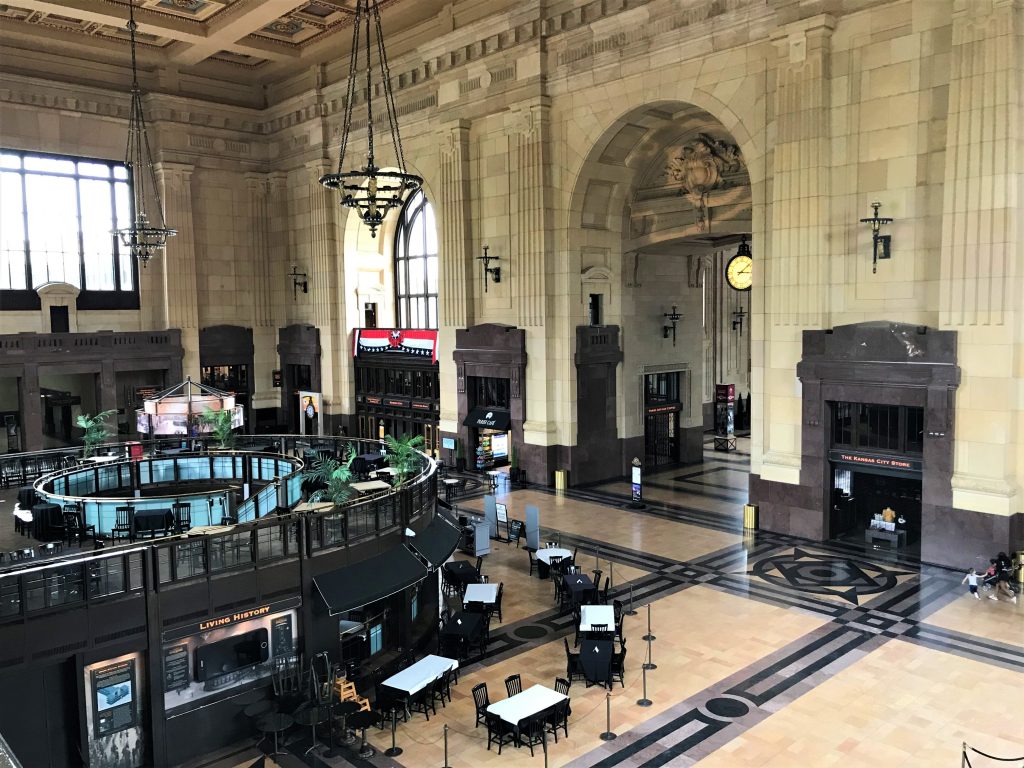
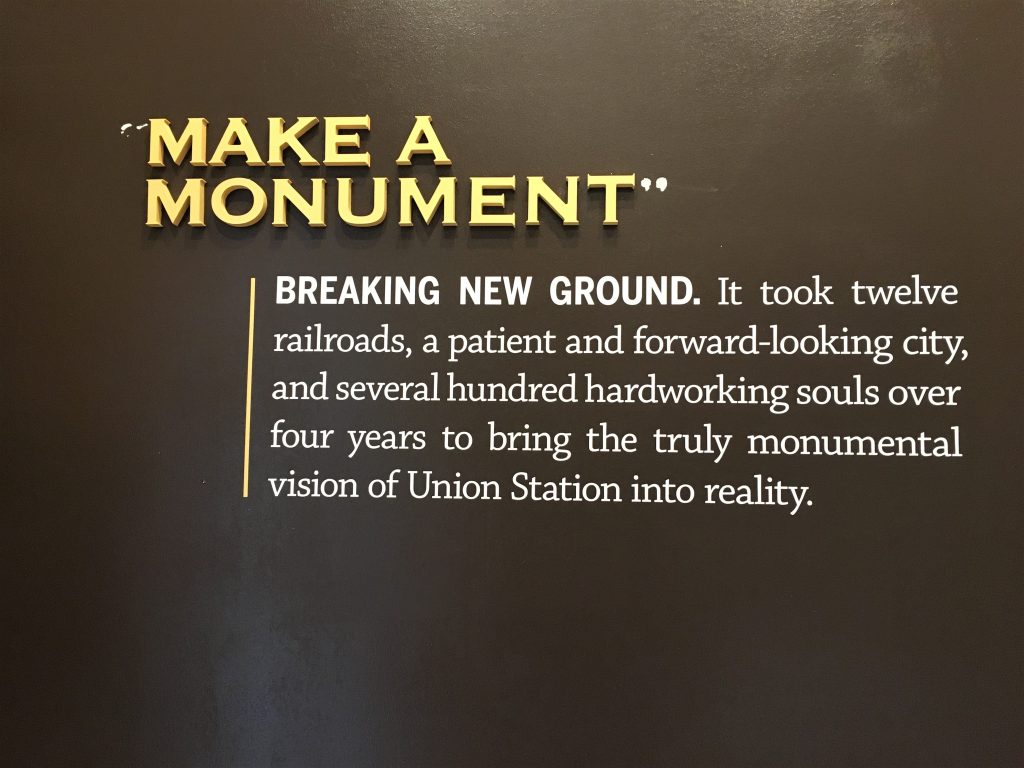
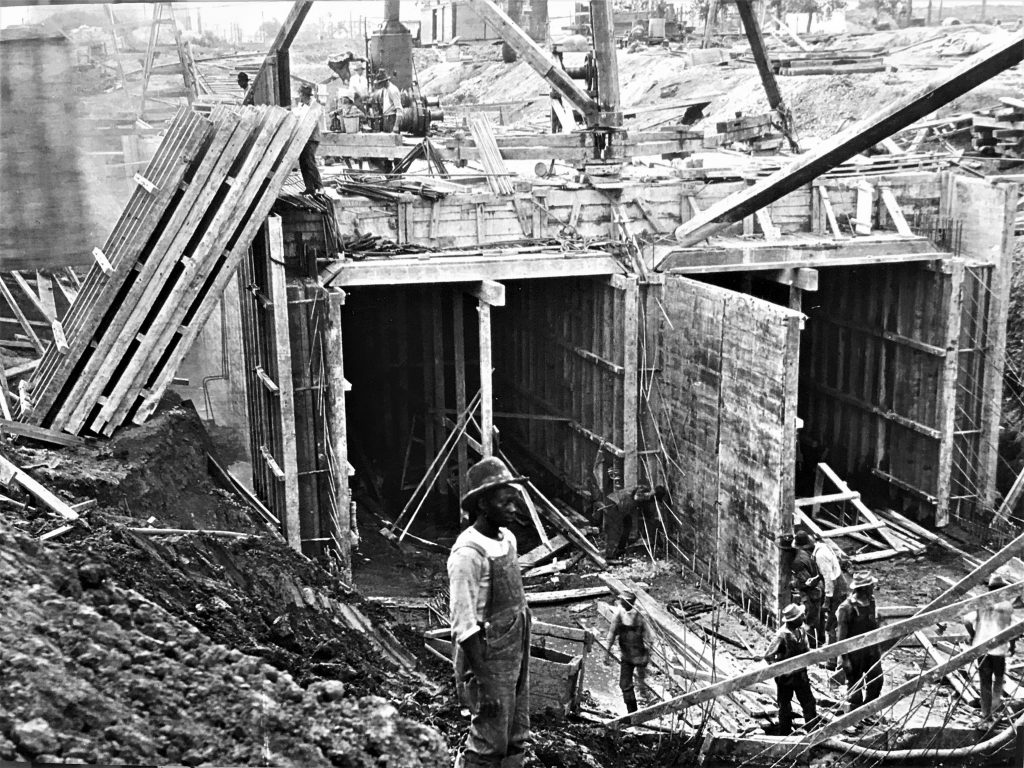
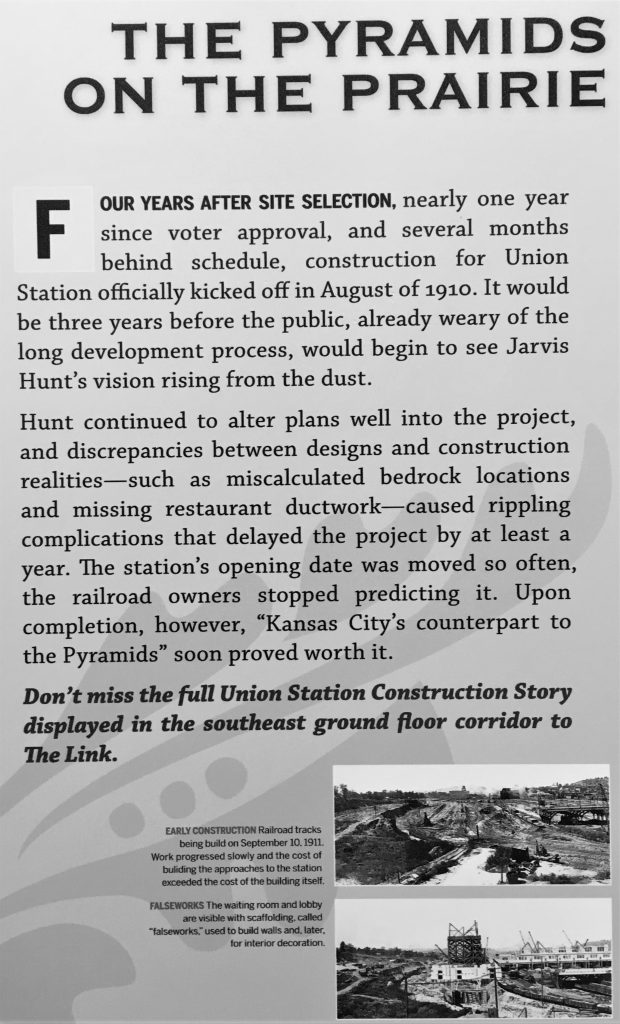
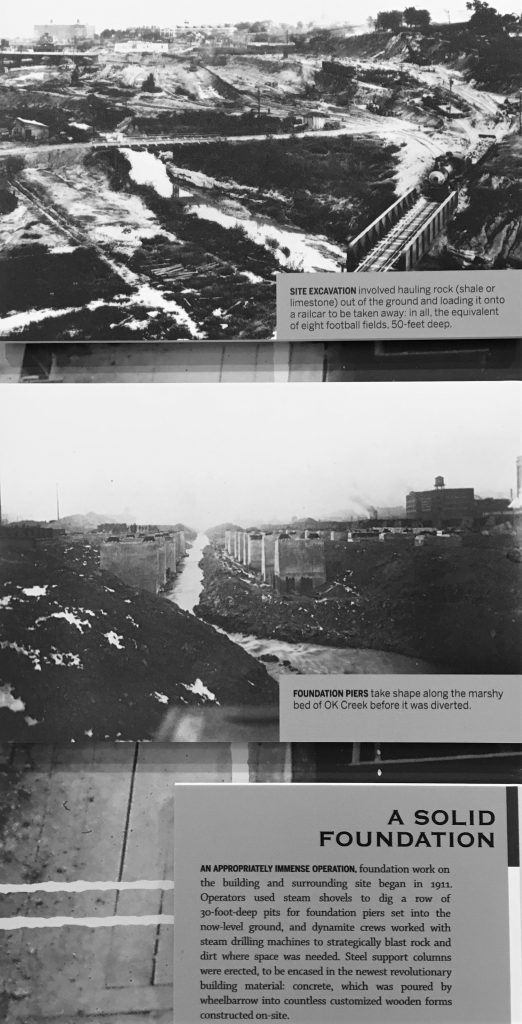
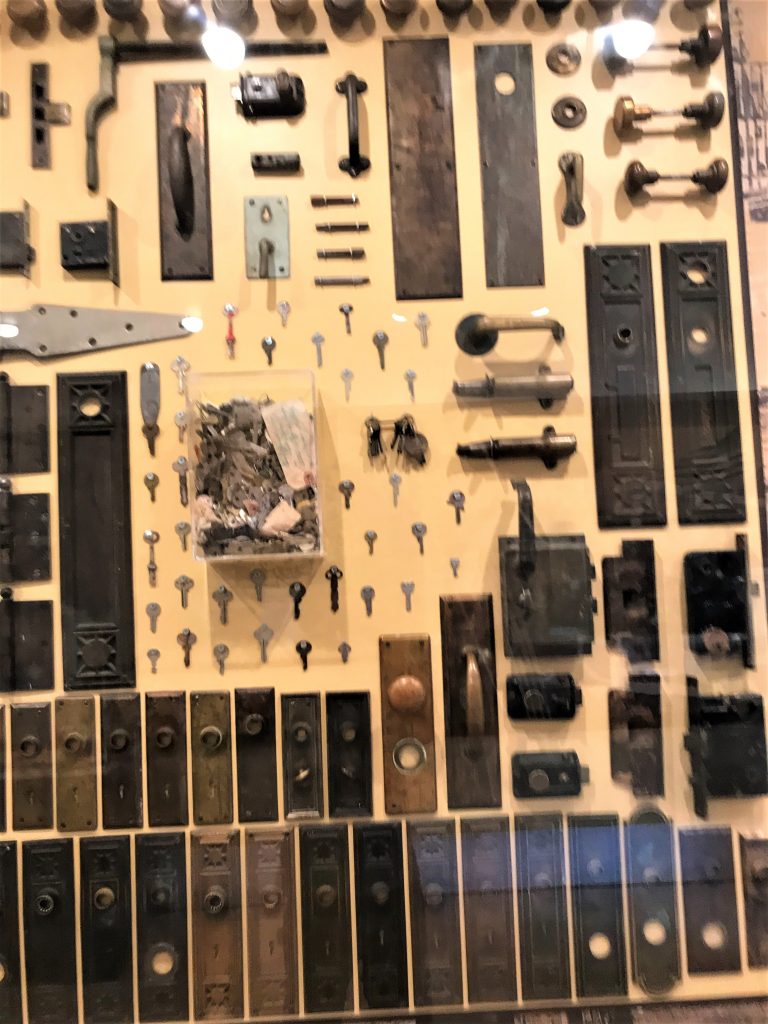
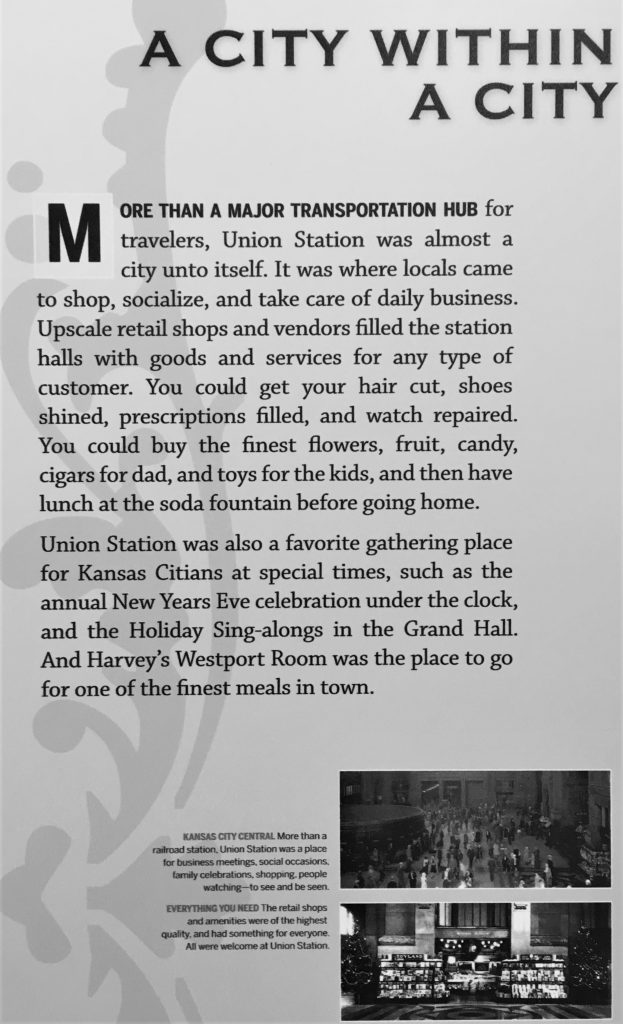
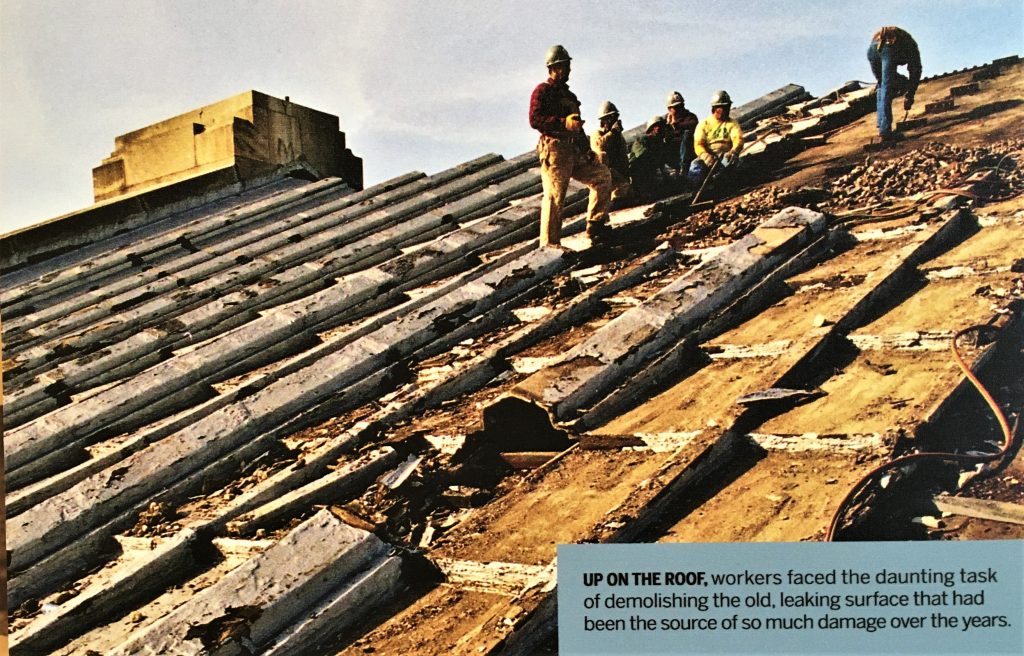
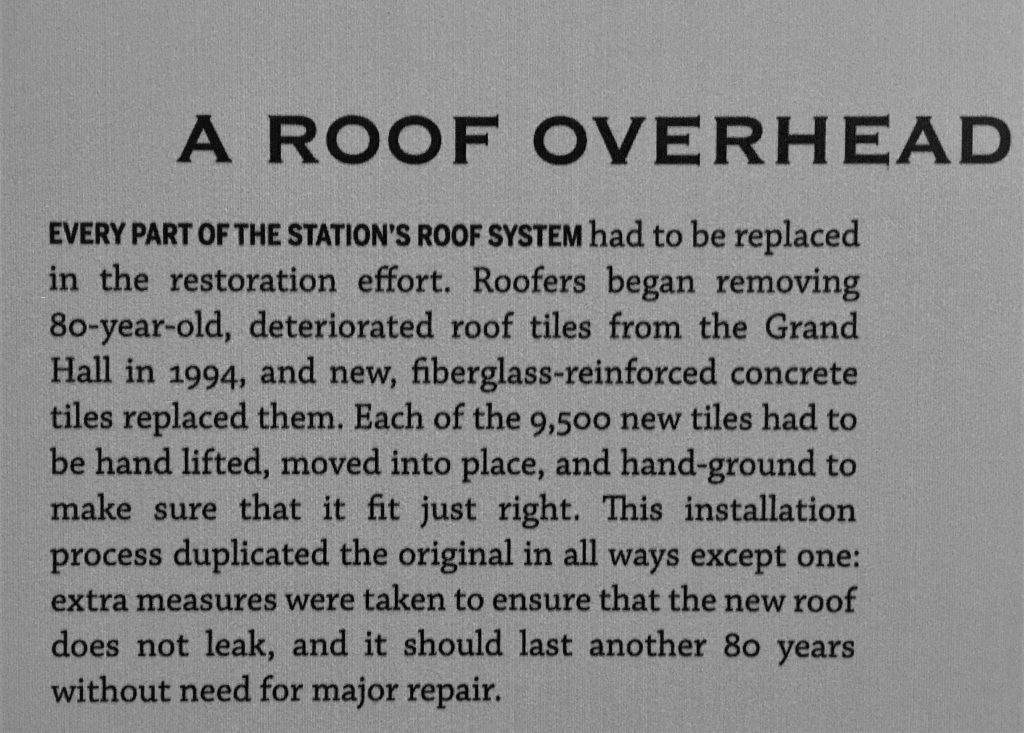
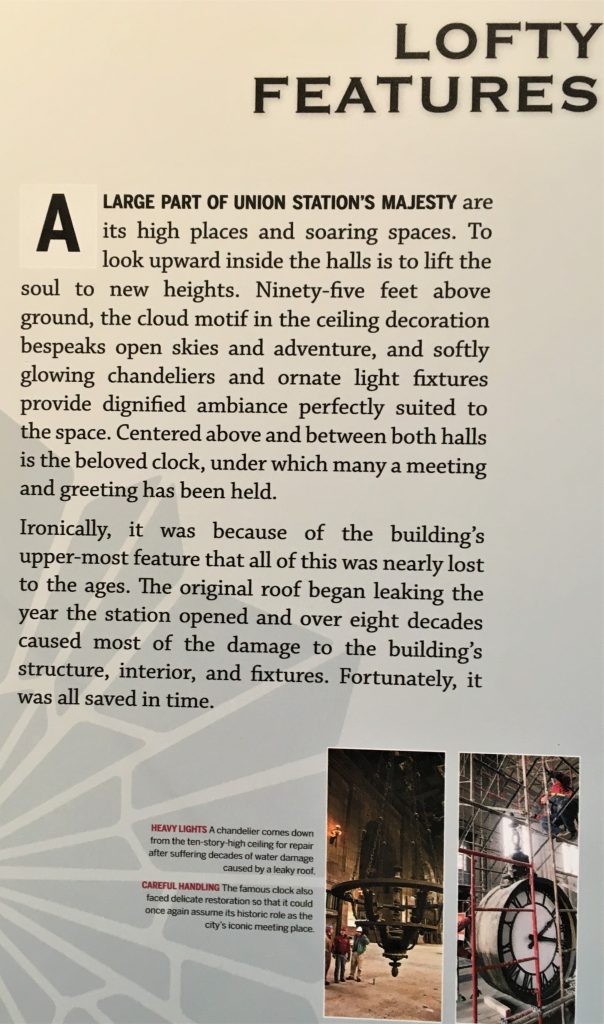
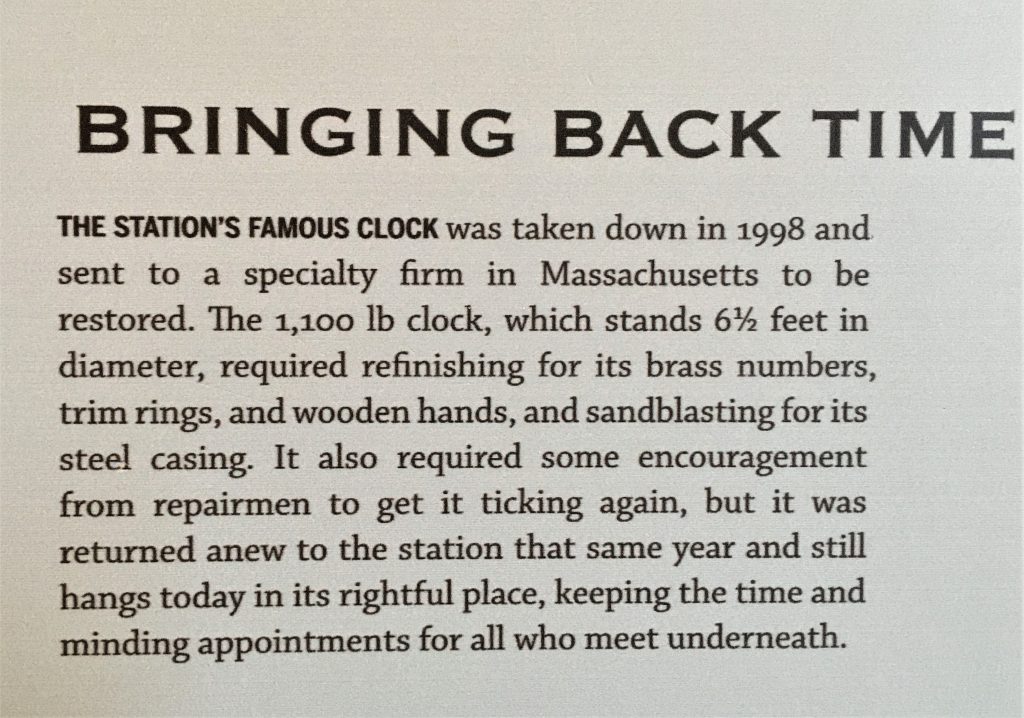
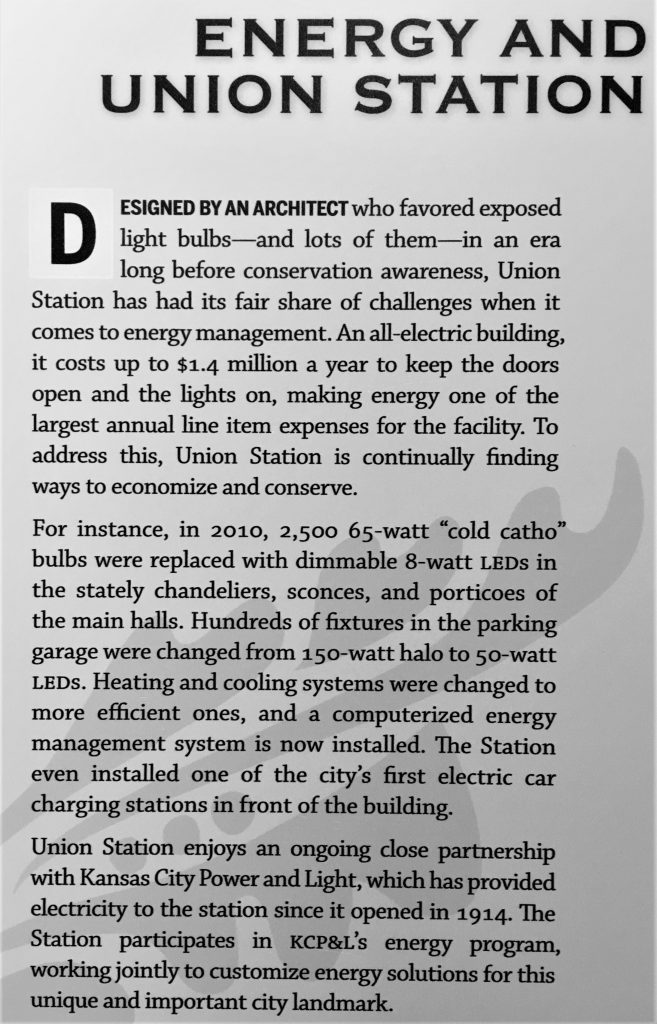
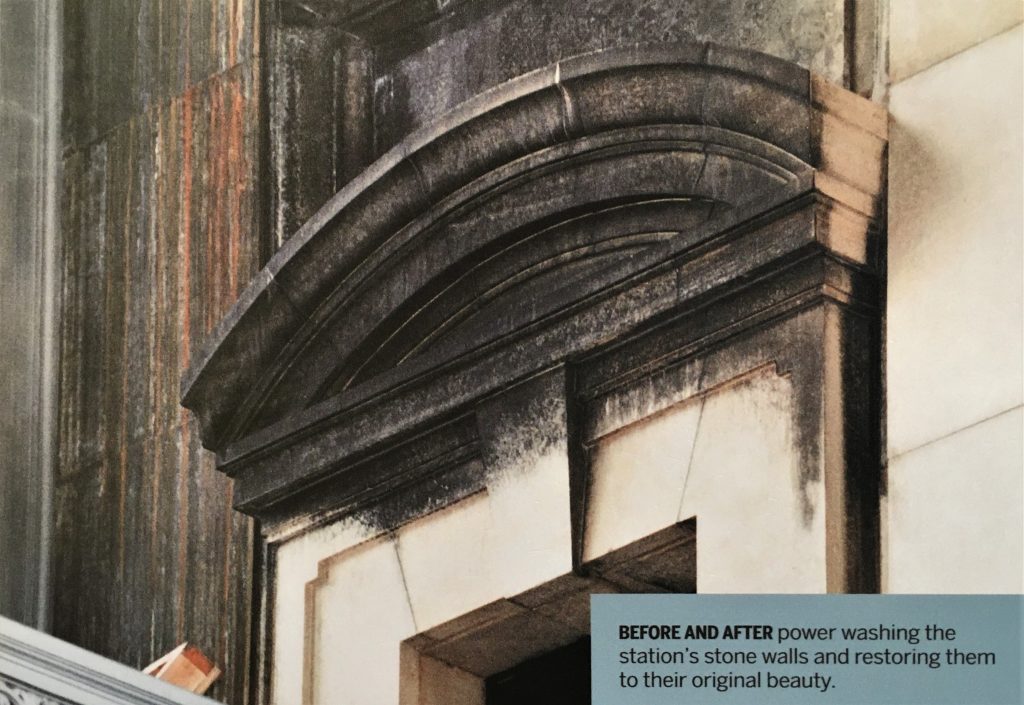
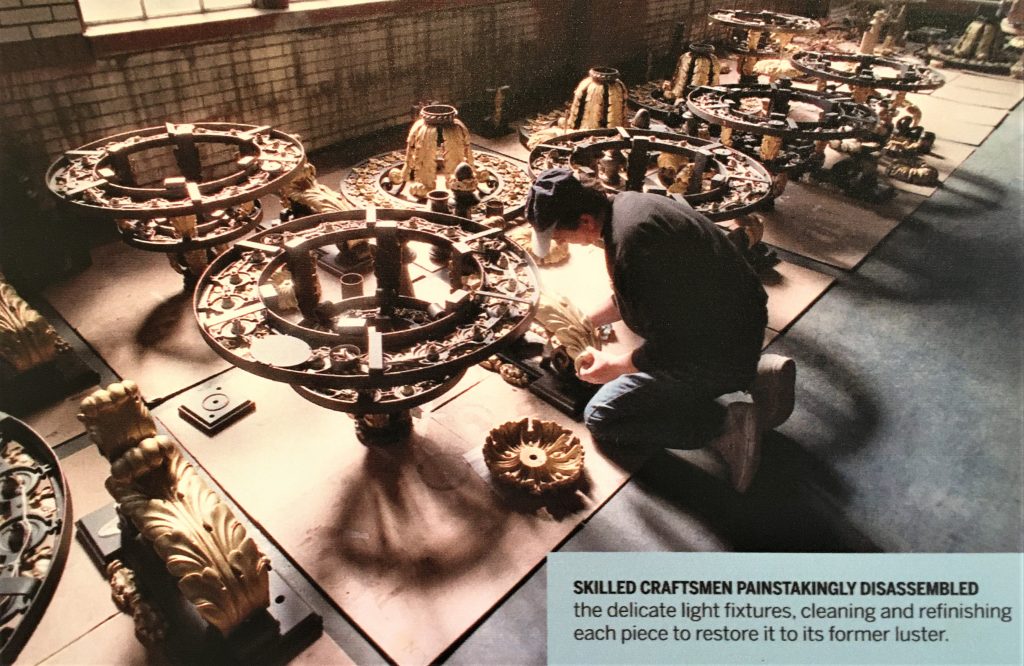
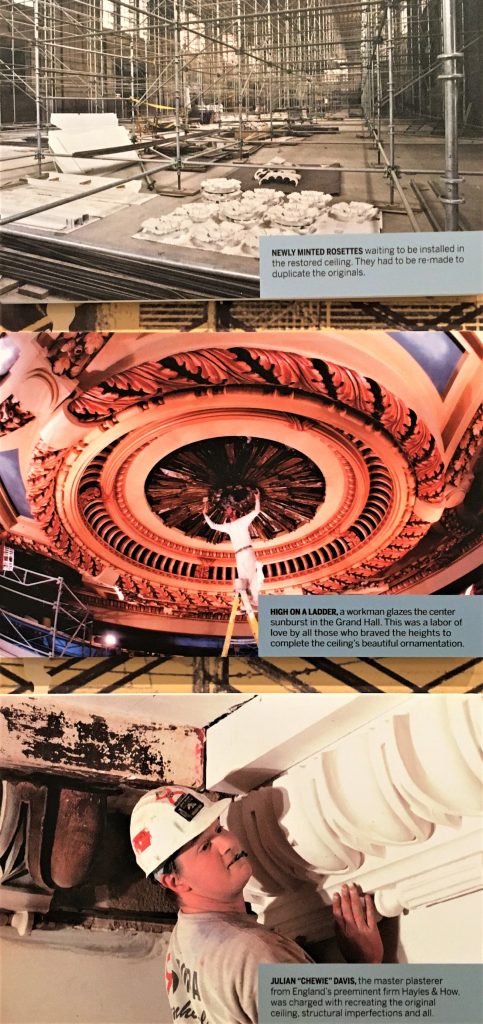
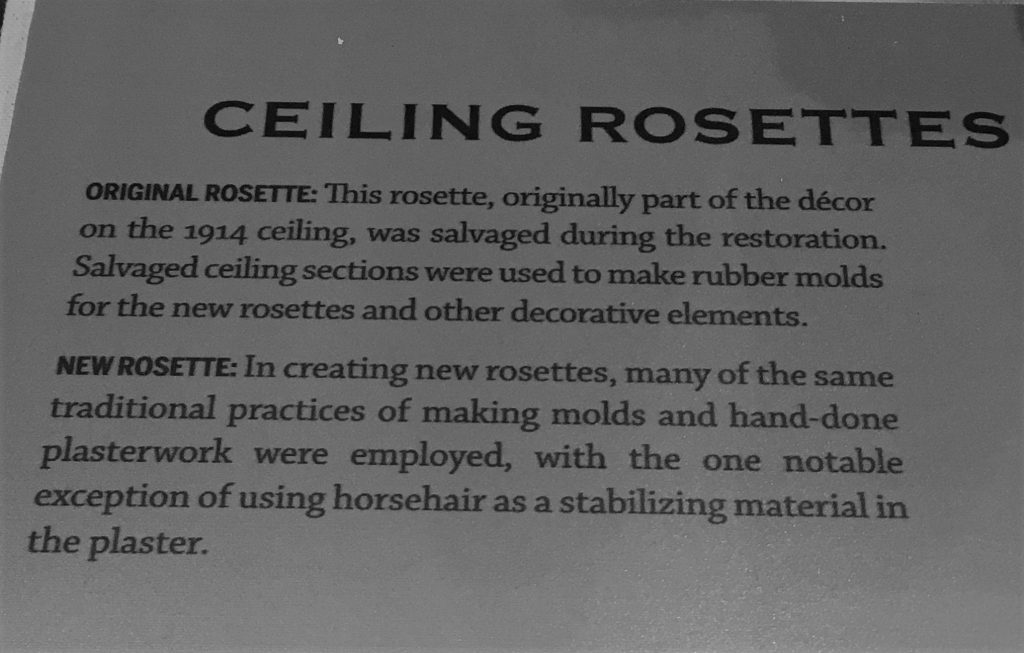
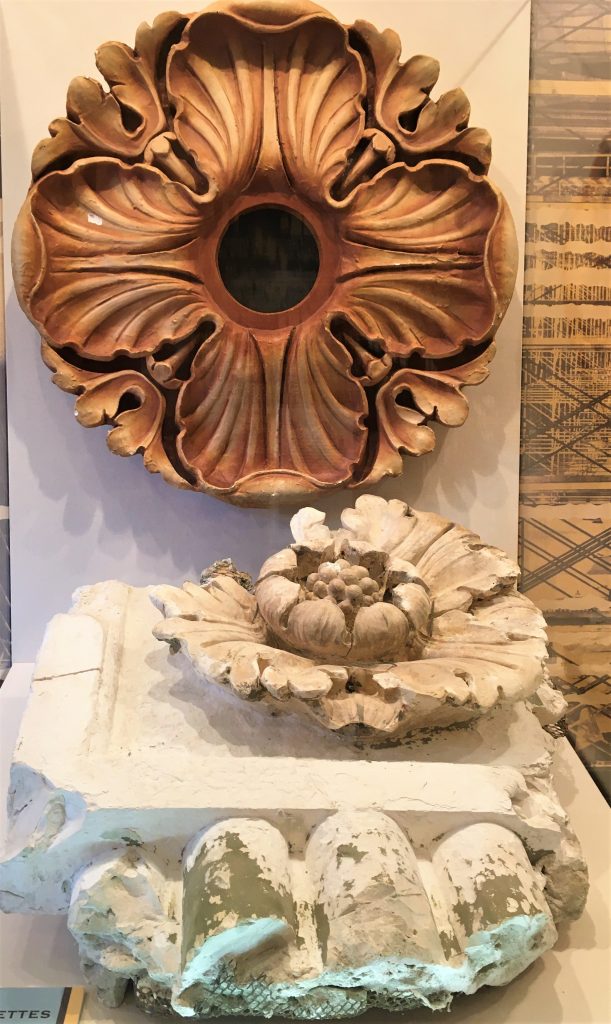
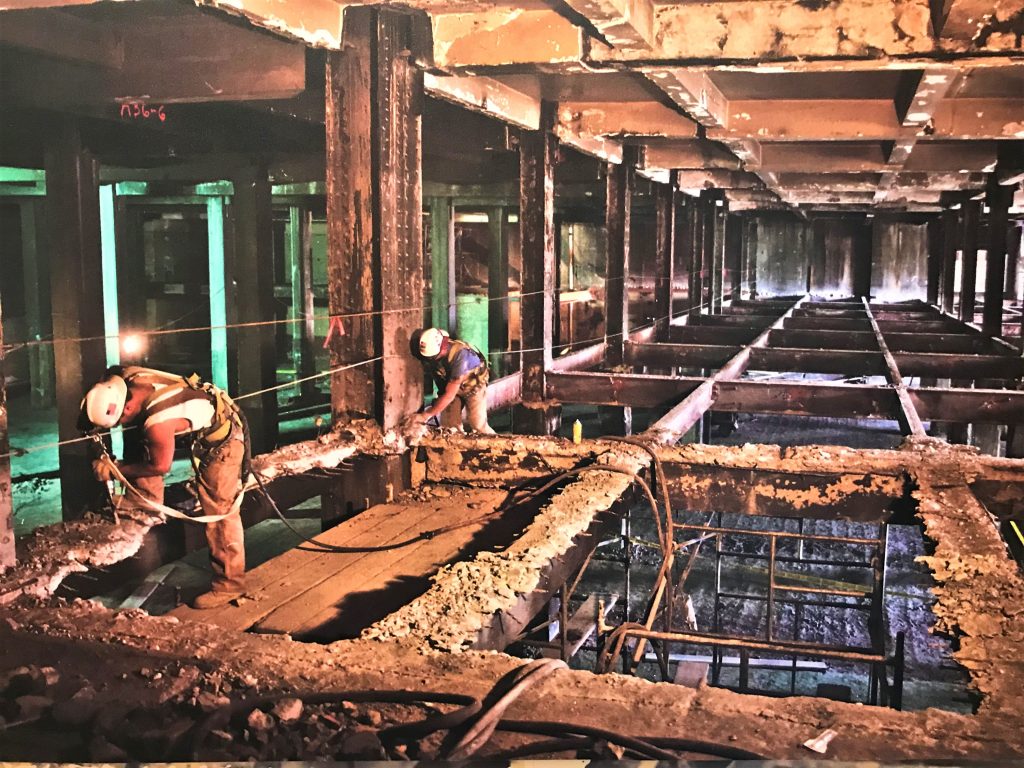
The restoration crew and responsible company(s) must be really proud of their monumental achievement!
How wonderful to be able to say, “I helped!”
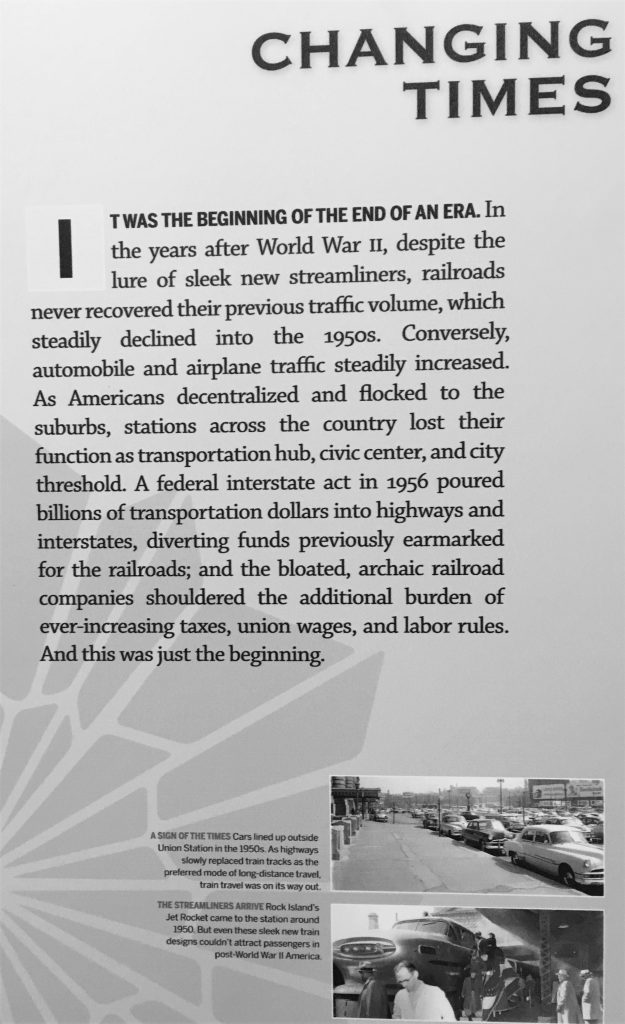
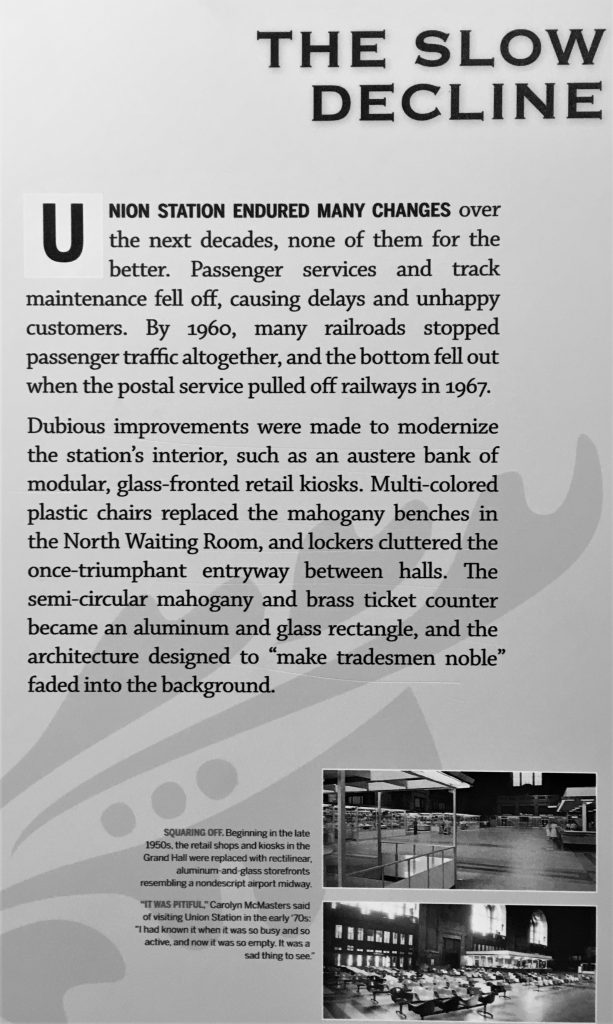
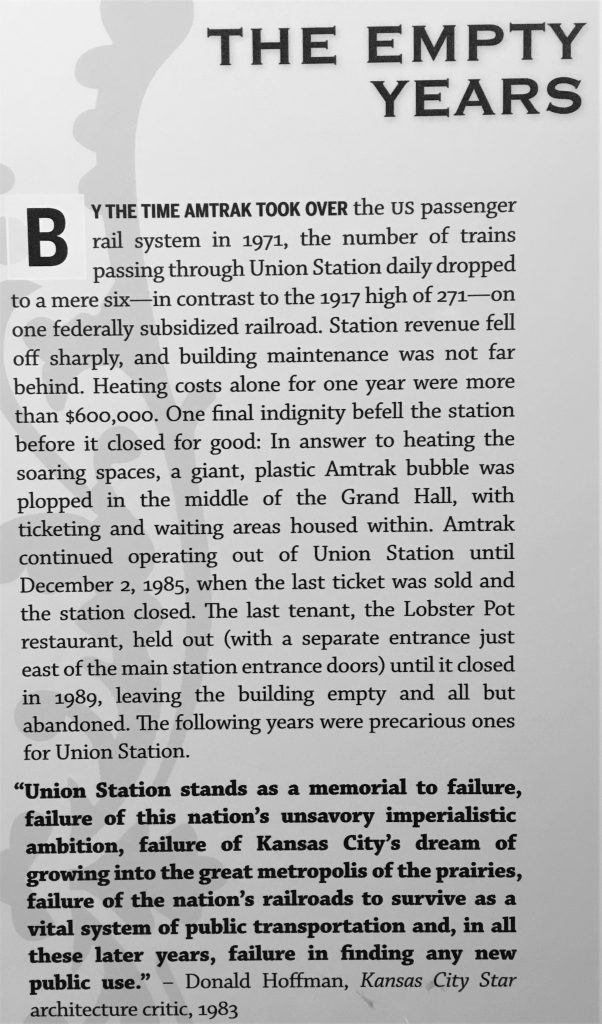
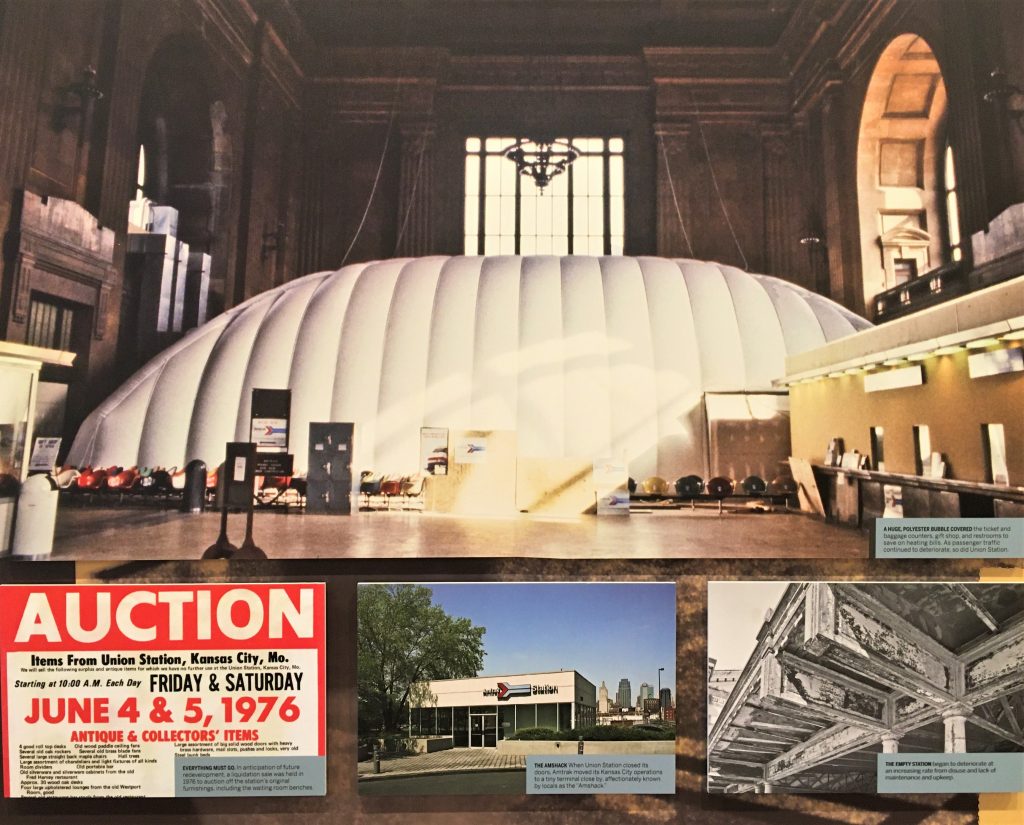
gift shop and restrooms were covered with a tent to save on heating bills.
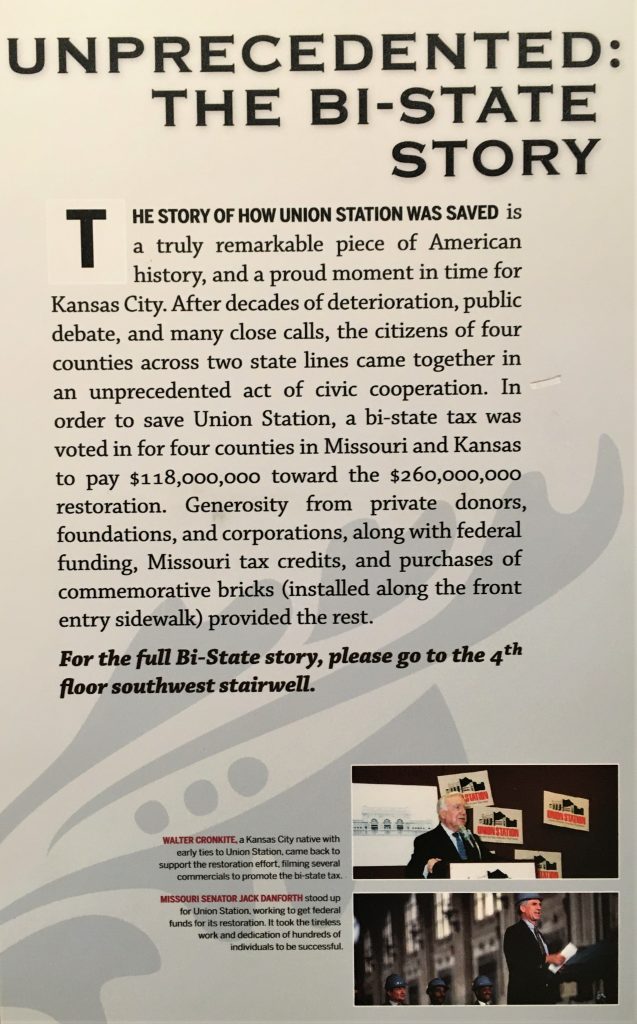
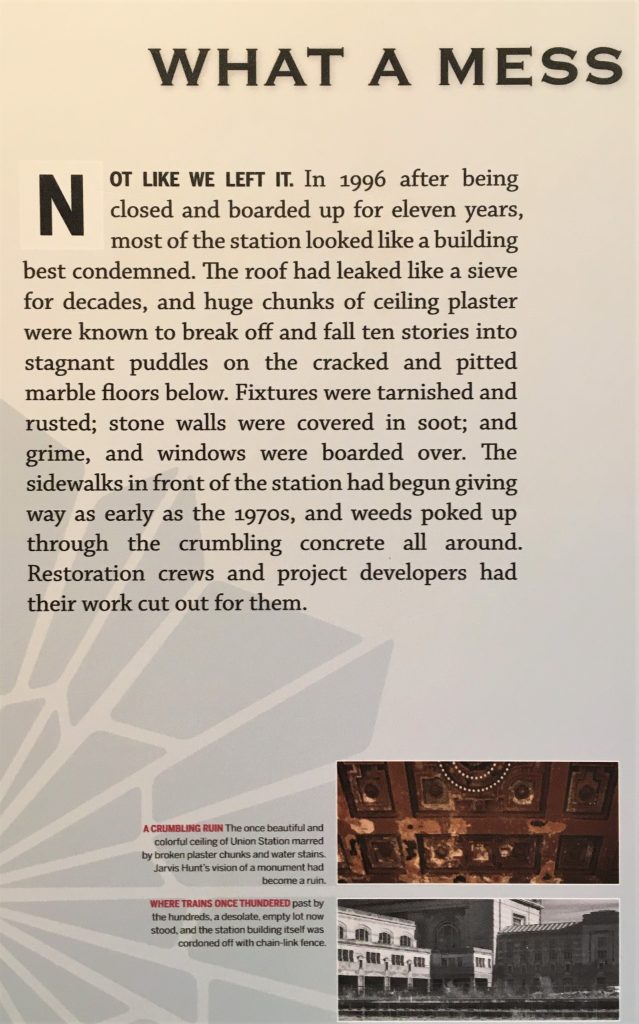
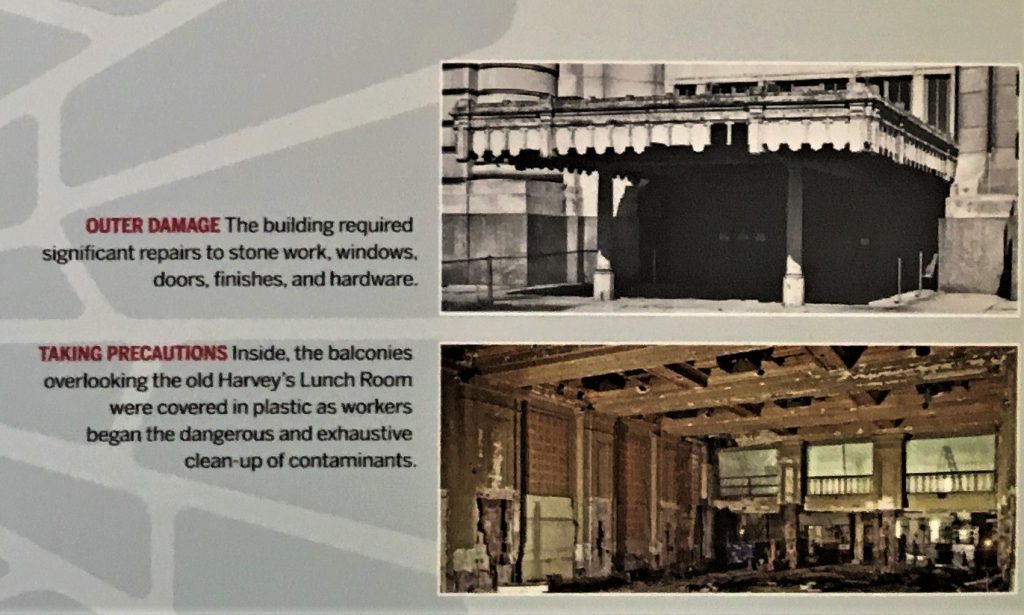

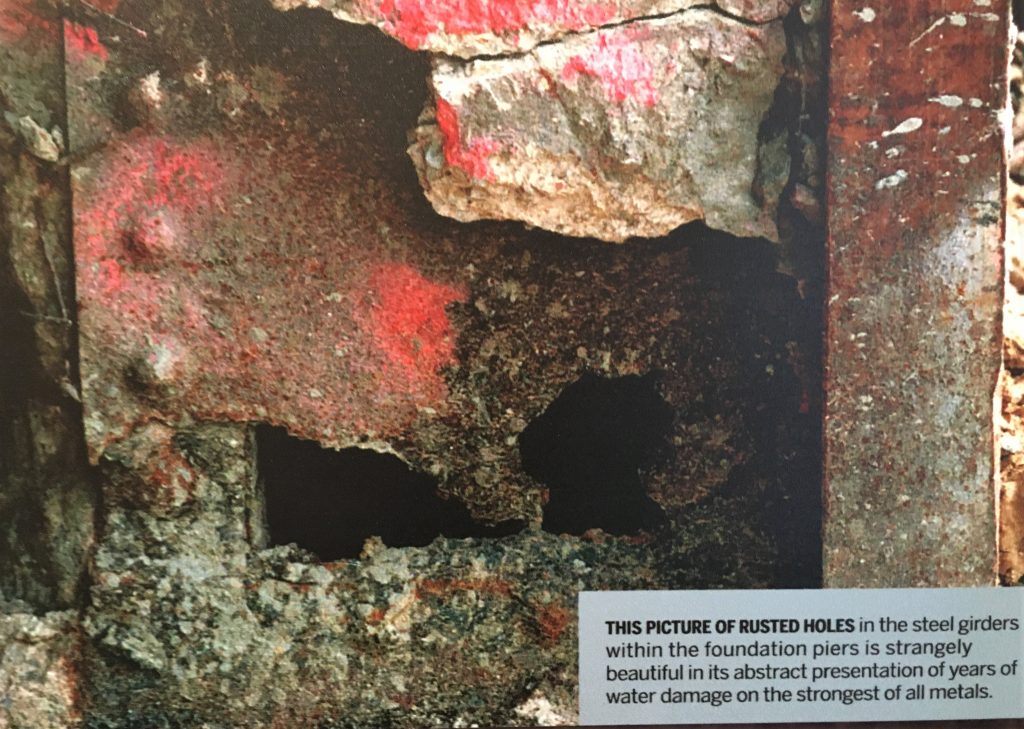
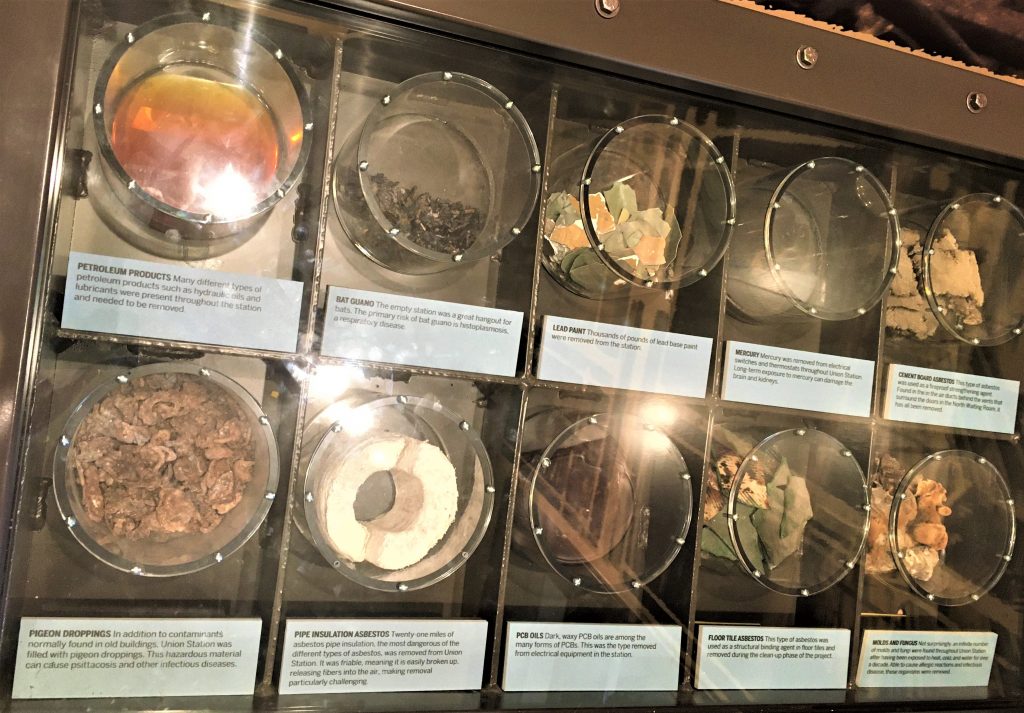
PCB oils, floor tile asbestos, molds and fungus.
Yuk!! What a deadly concoction!
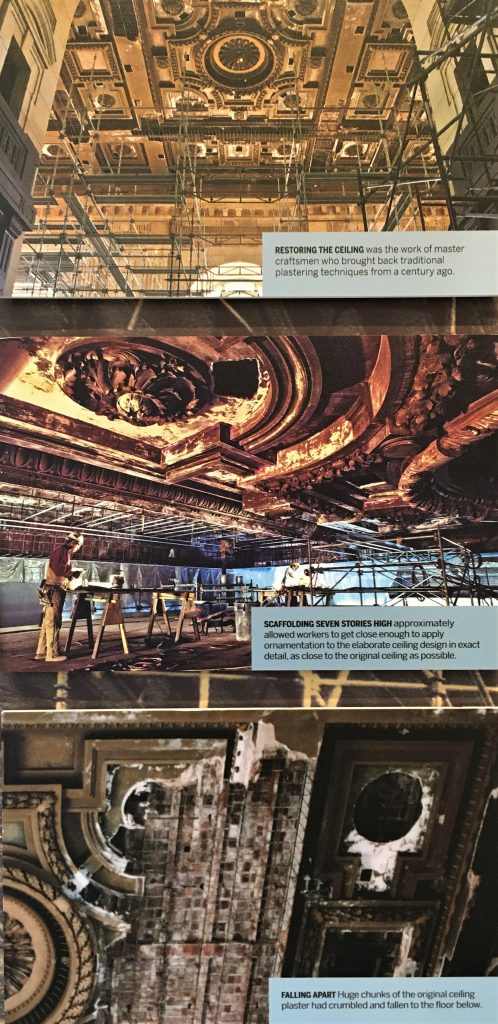
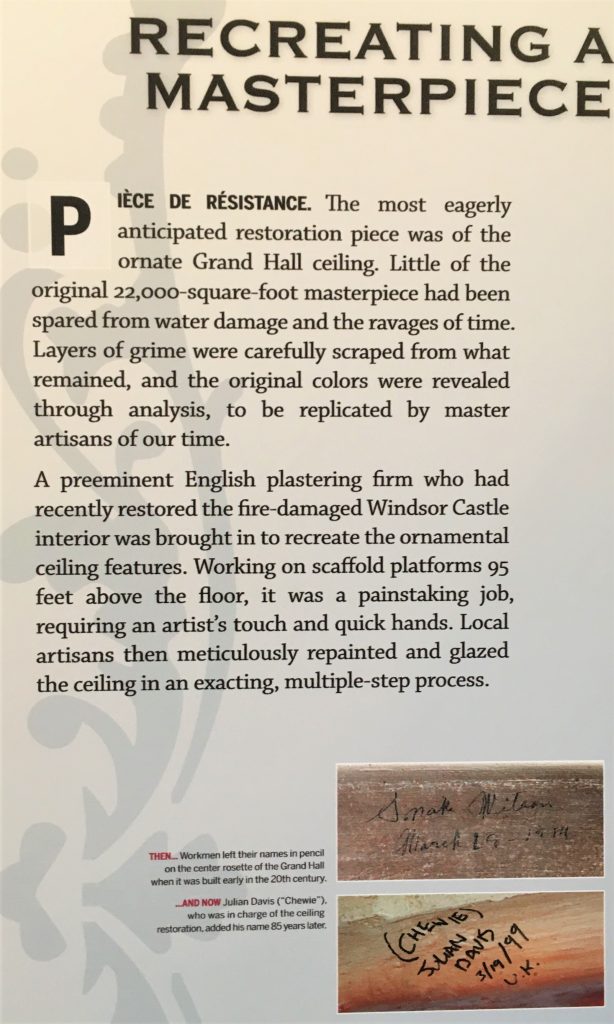
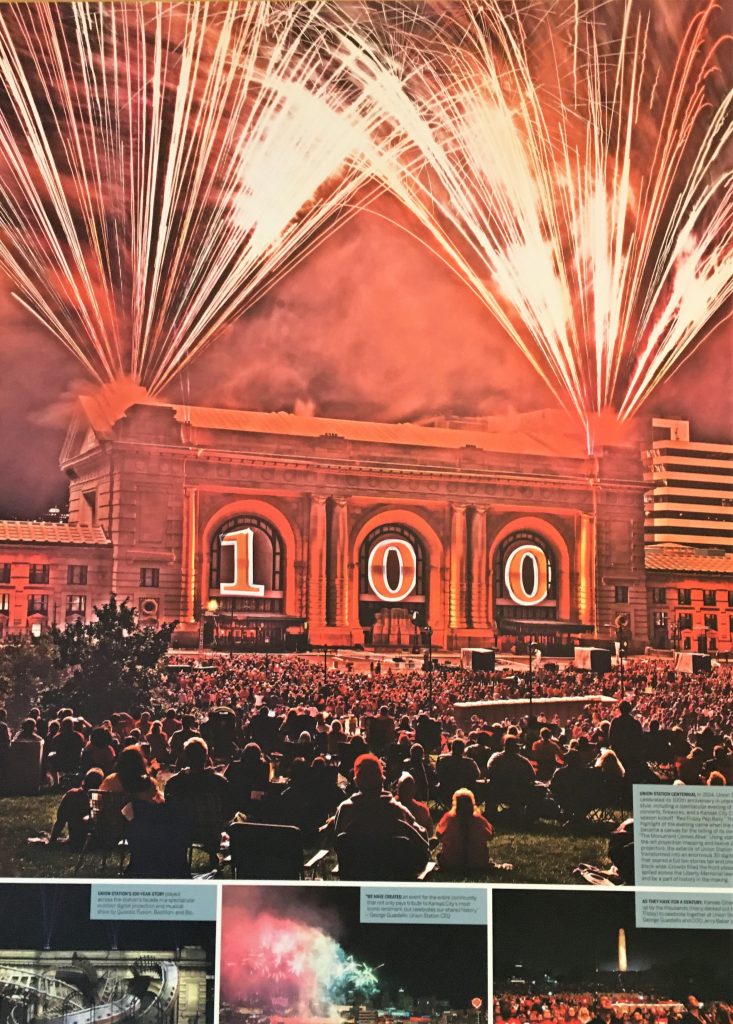
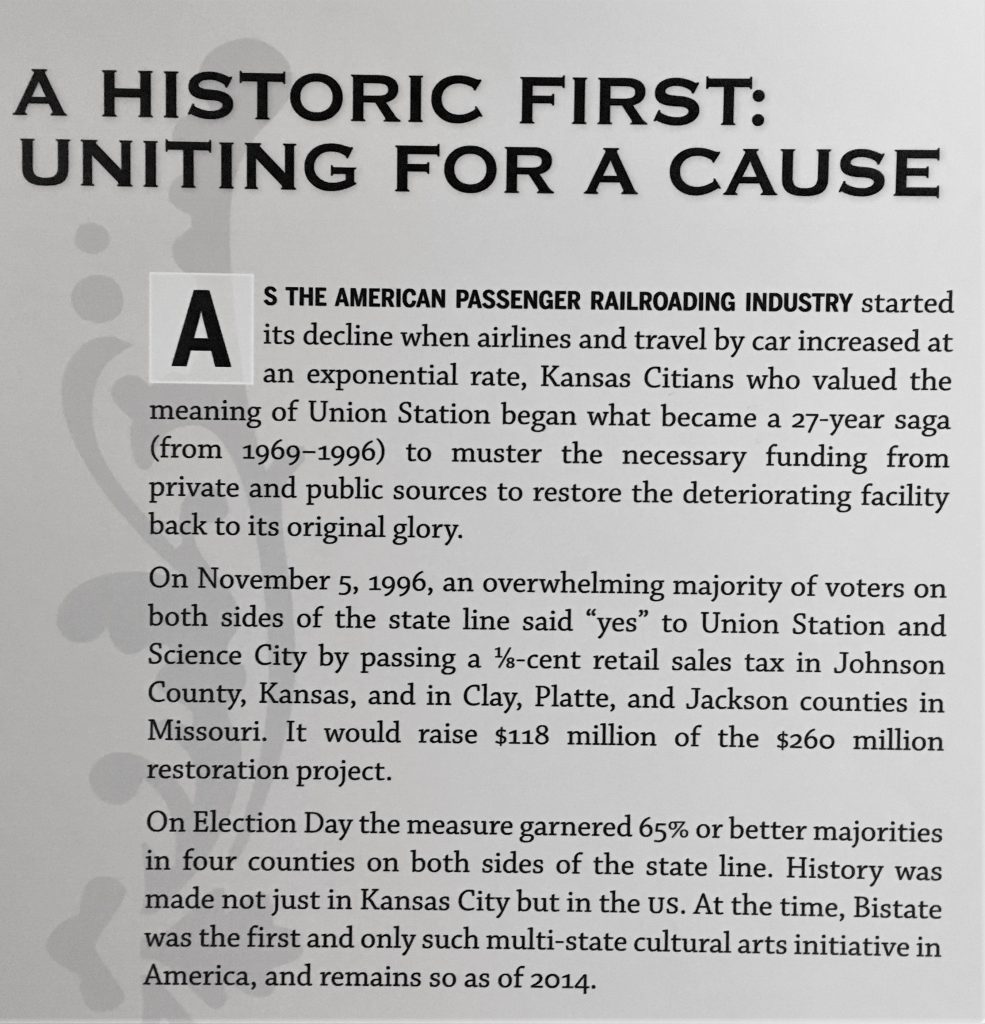
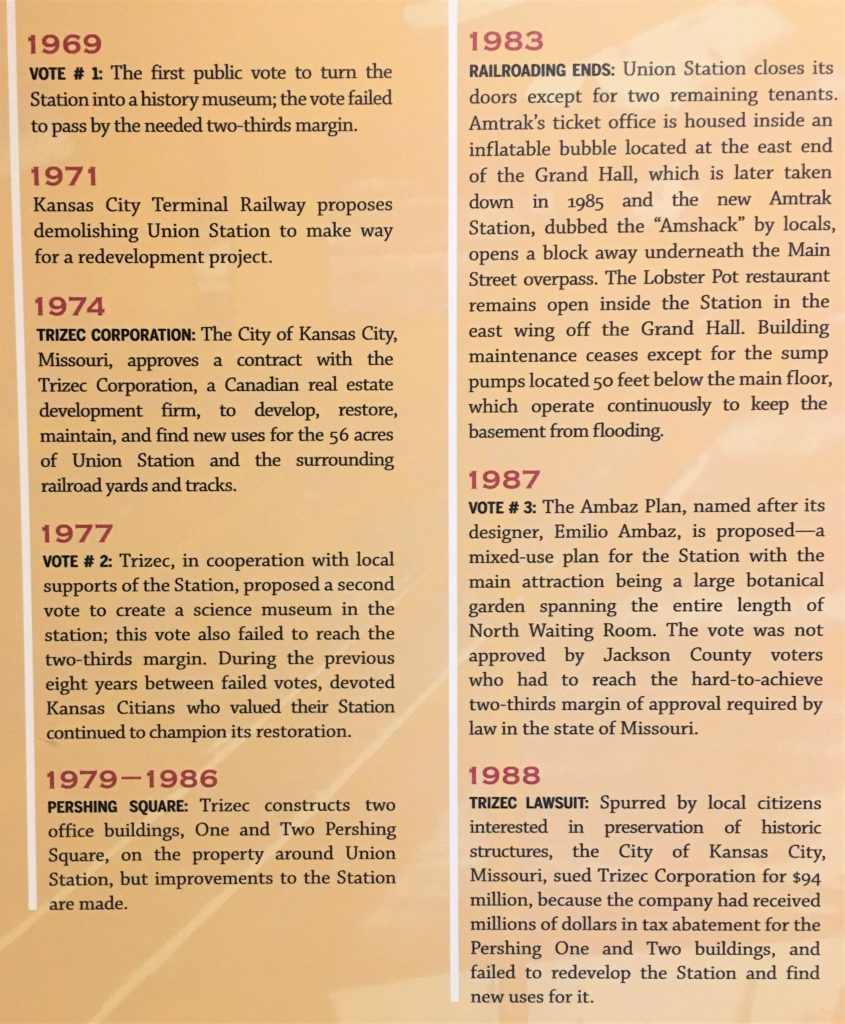

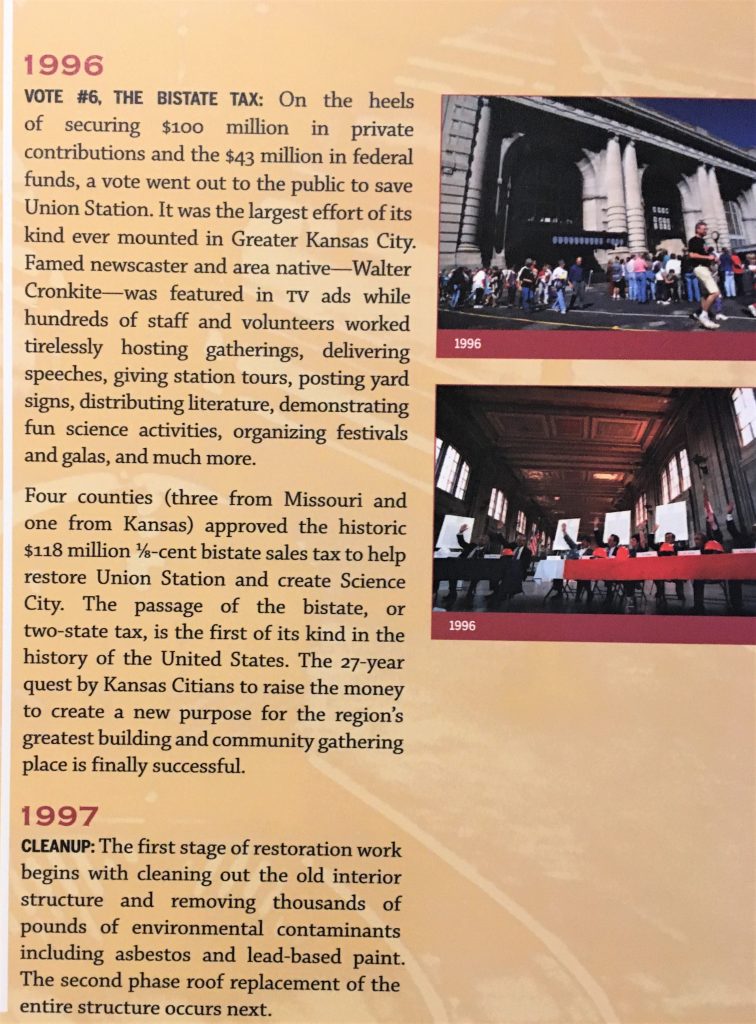

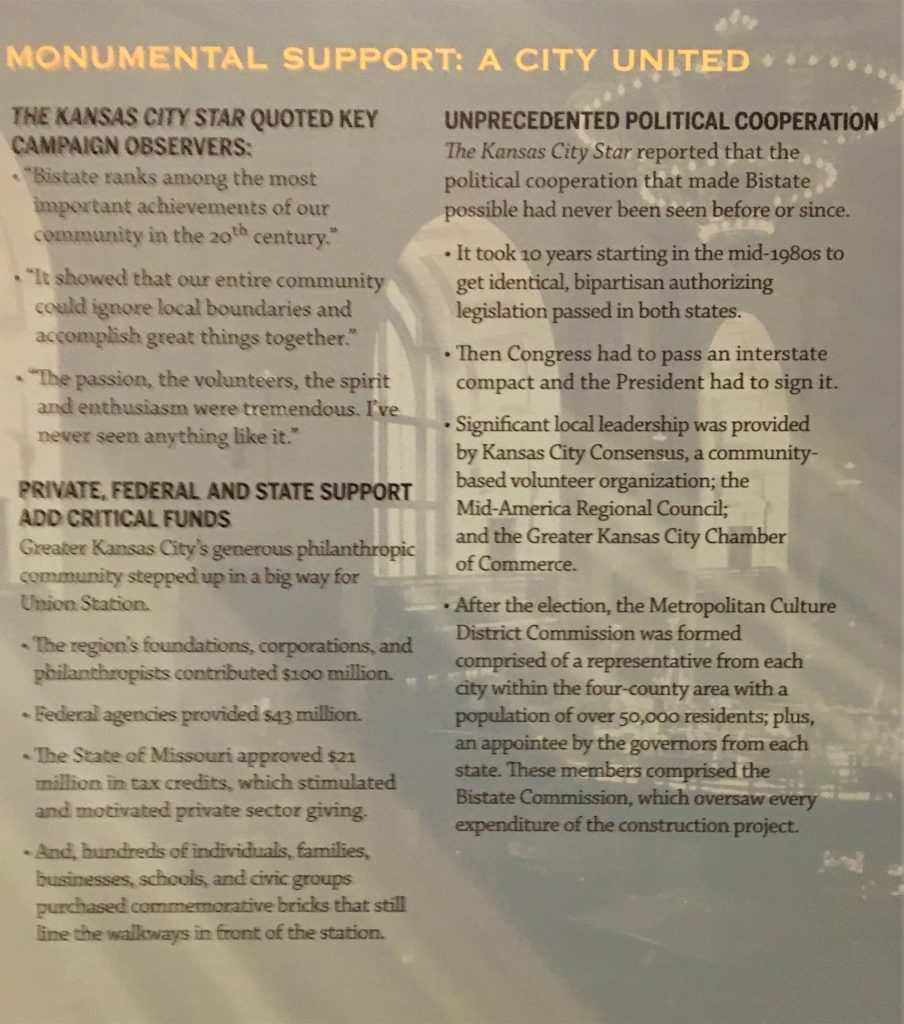
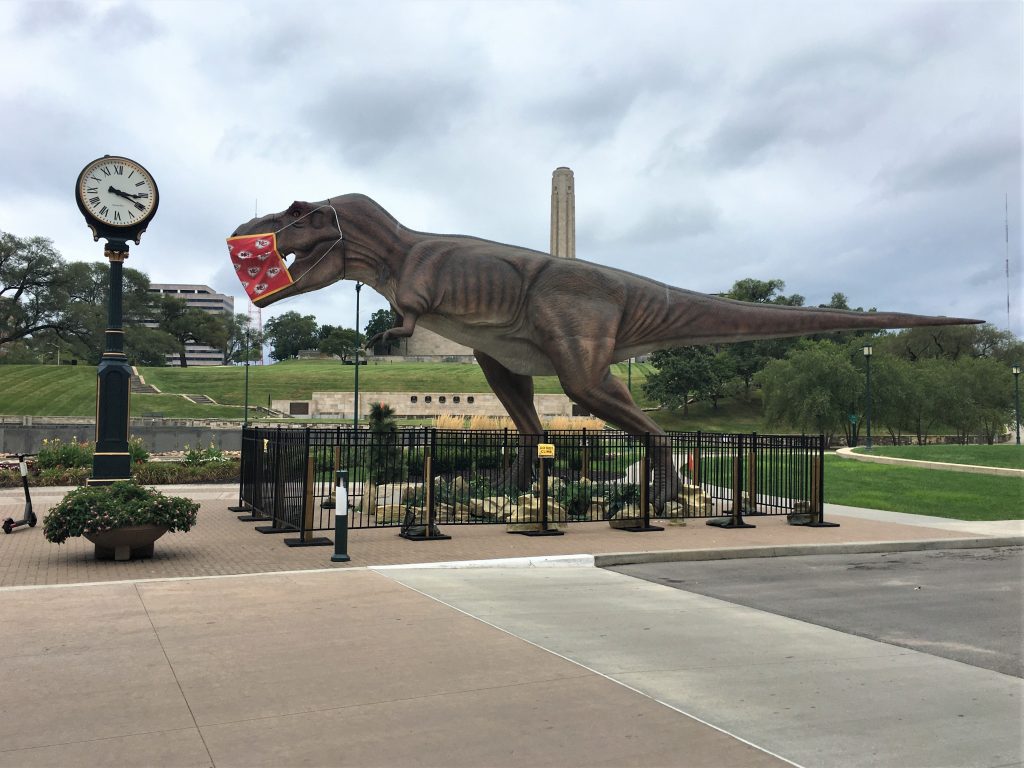
And to think, he’s just temporary! Wonder what it takes to move him?
We took this as we were on our way to the Jeep.
We rushed through the end, and were still about 10-15 minutes late getting back to the Jeep. Fortunately, the (cops? Meter maids?), whomever is responsible for tagging derelict parkers, must be off on Mondays, too. Whew!
On the way to get one of the best burgers in North America, we stopped to take a quick walk around the Country Club Plaza area. Between the need to dodge raindrops and our growing hunger, we weren’t able to walk around as long as we would’ve liked, but it was nice while it lasted. 😊
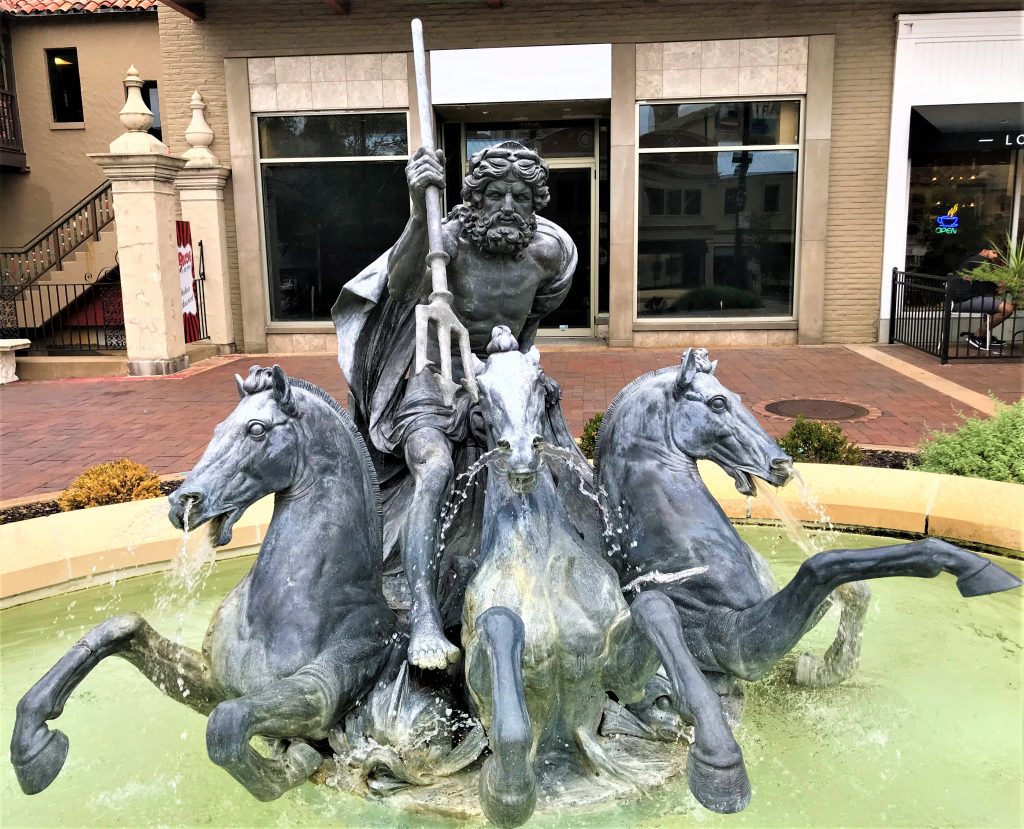
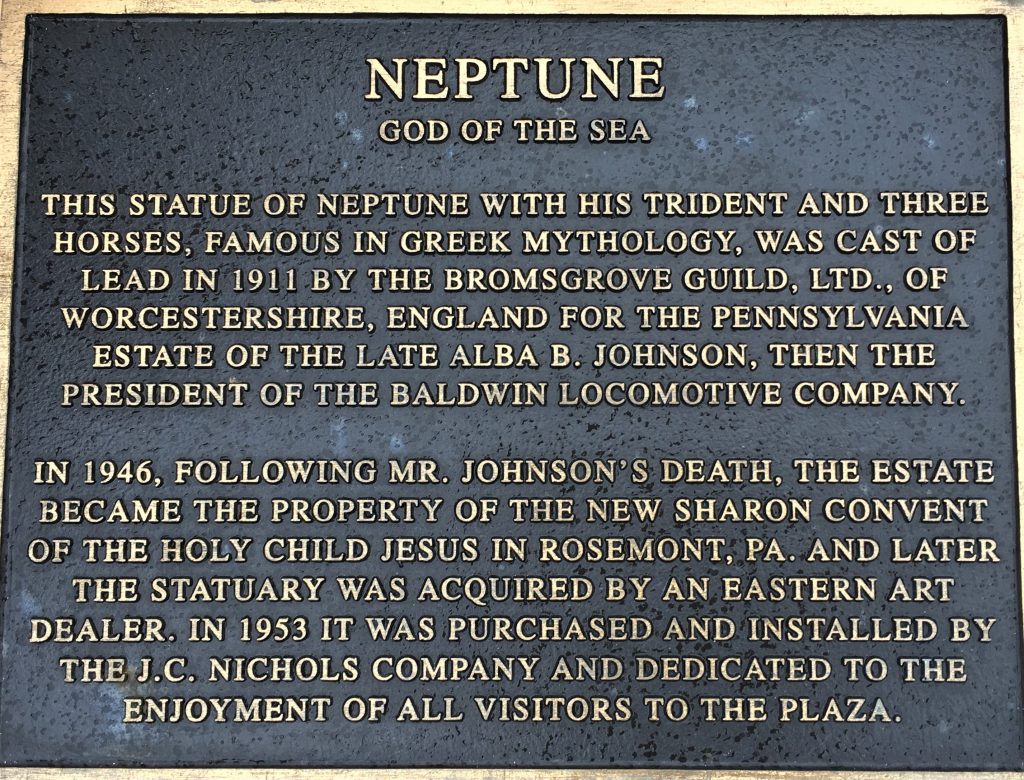
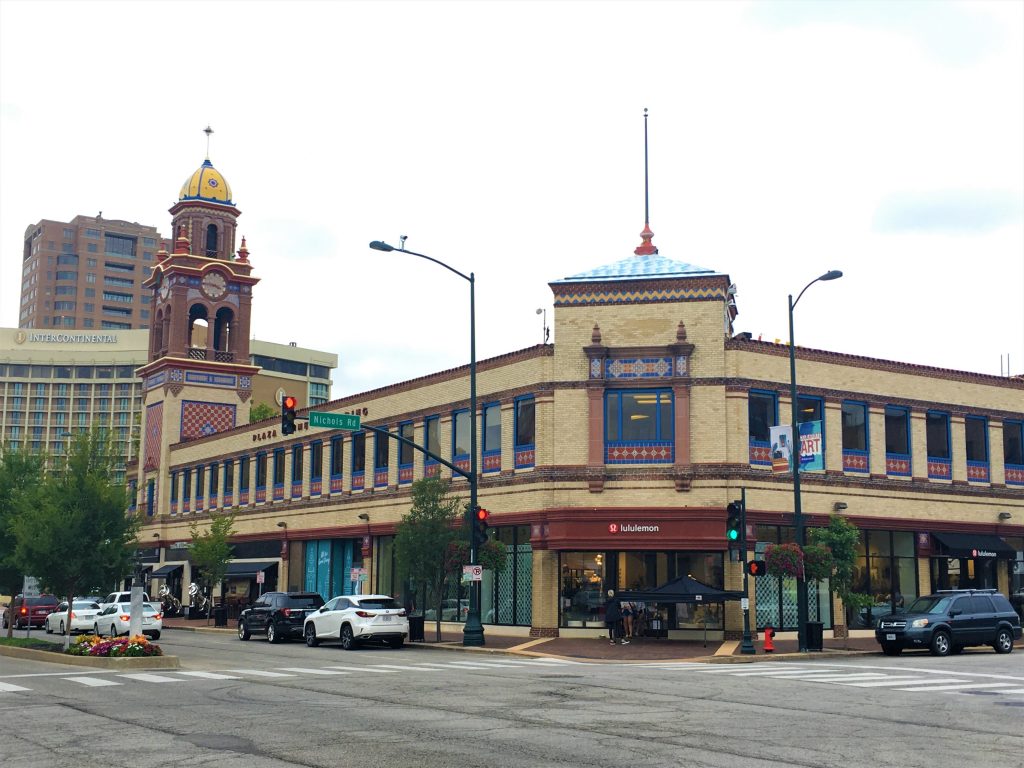
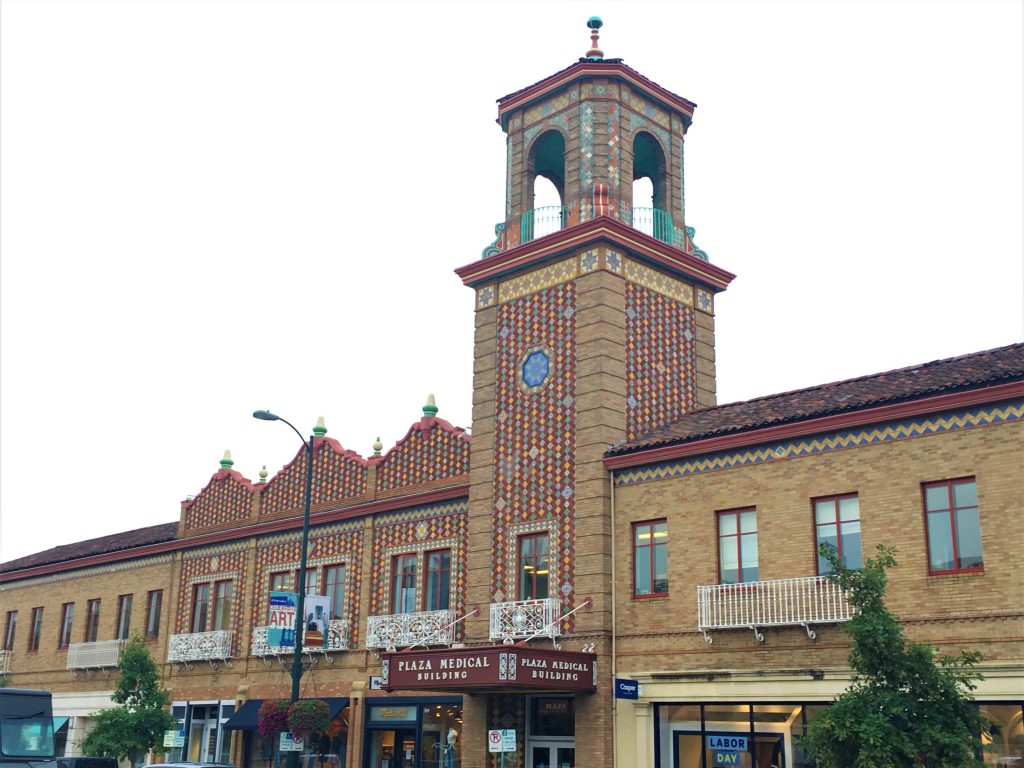
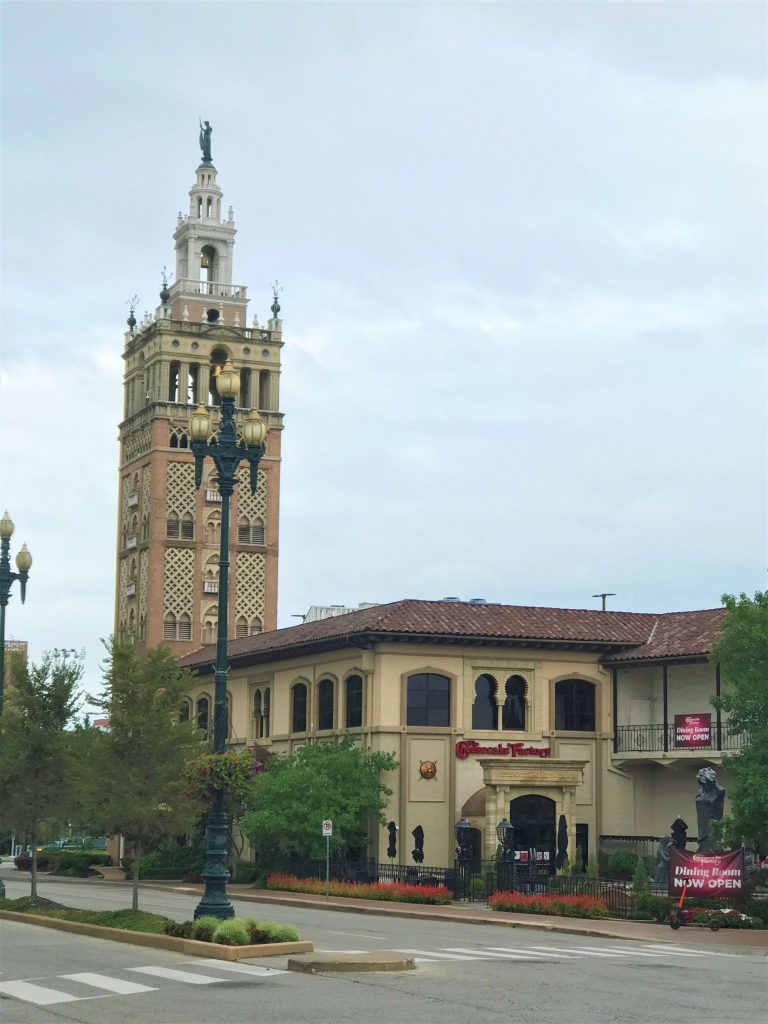
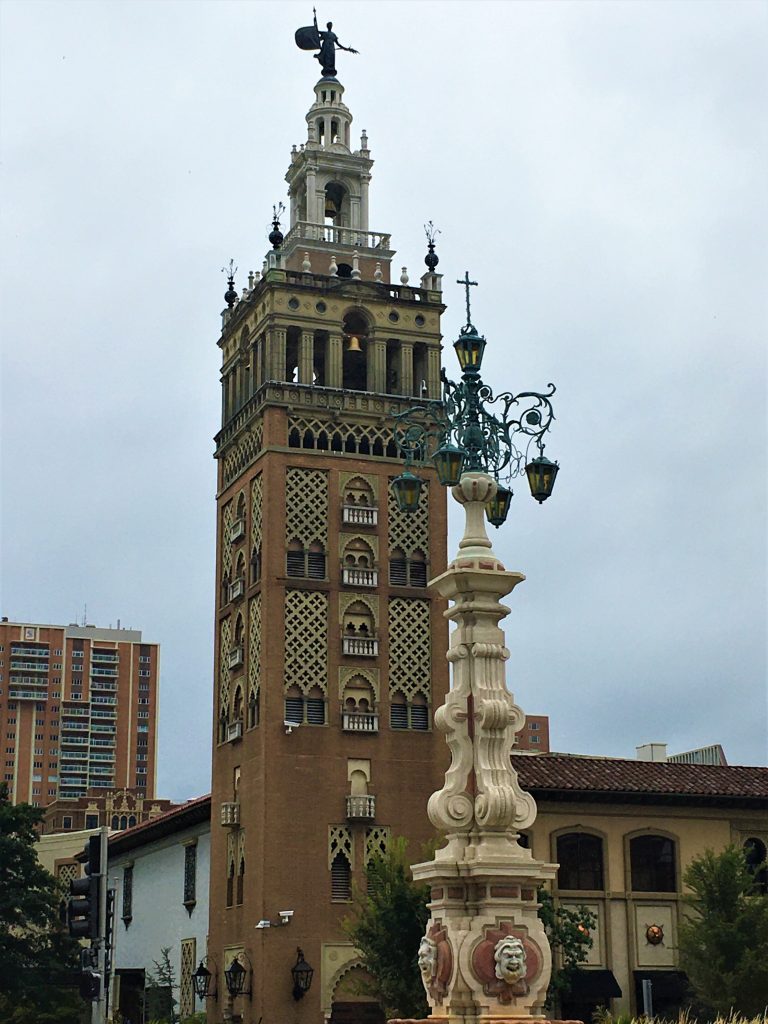
Several years ago, if you’d’ve asked me what the best fast-food burger was, I would’ve said, “Wendy’s!” without hesitation. But then we visited friends in Georgia, and they introduced us to Culver’s. Their burgers are stupendous, their fries are also good, and their shakes are so thick, you have no choice but to eat them with a spoon, because they’re more like the most delicious soft-serve custard you’ve ever tasted. Another thing they offer that’s a bit different for those of us outside of Wisconsin, are fried cheese curds. We didn’t order those, but we had some when we were in Wisconsin a while back. They really are quite tasty! Everything is freshly made and wonderful! And as of July, they have 760 locations around the US. Just in case you’d like to give them a try. 😊
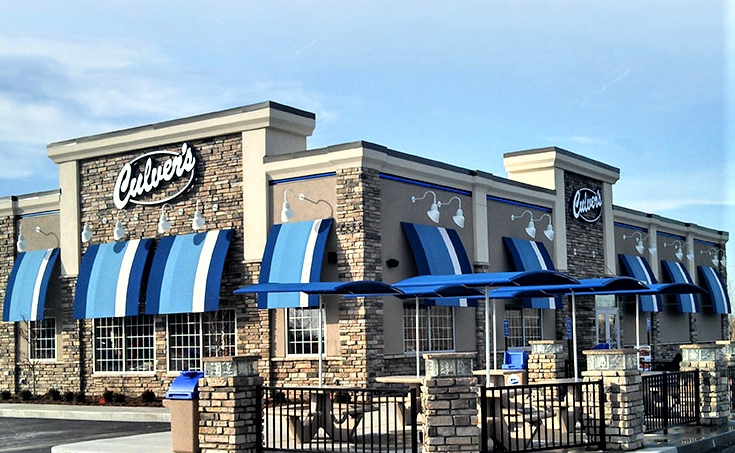
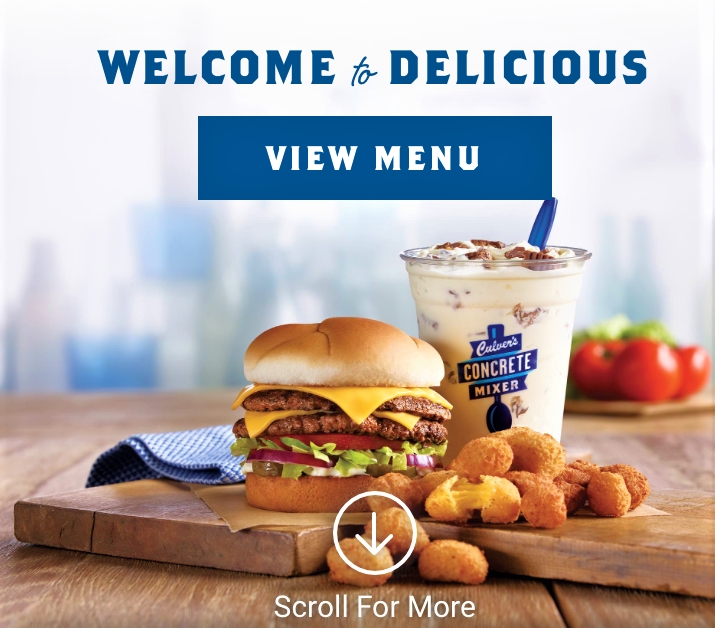
In case you were wondering,
those are cheese curds. : )
We move closer to home in the morning!
